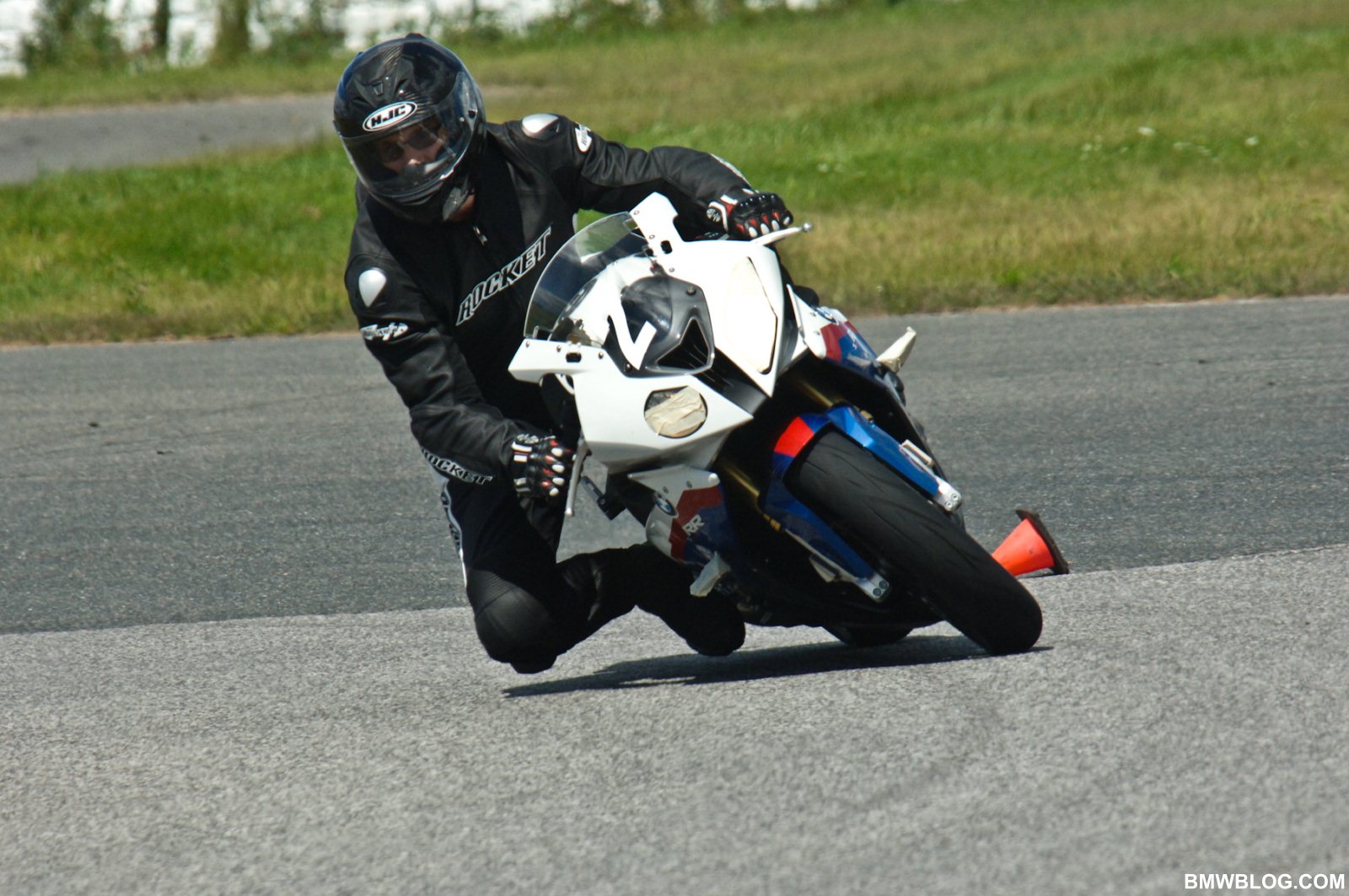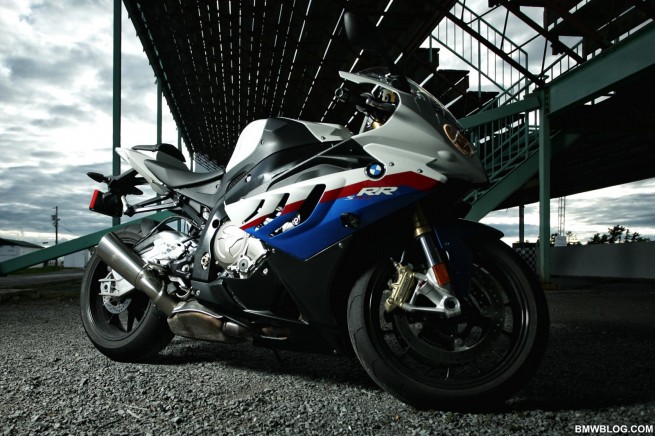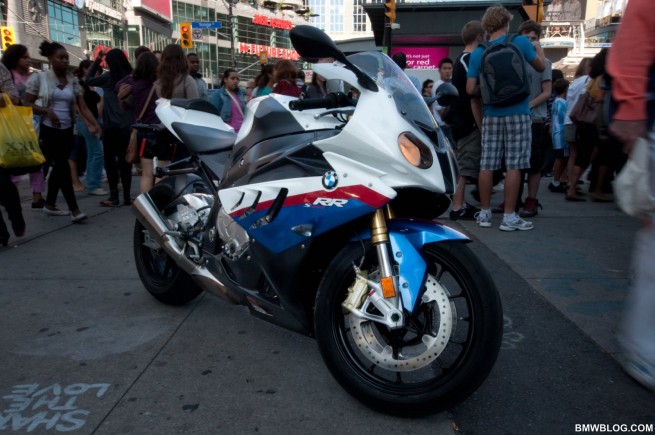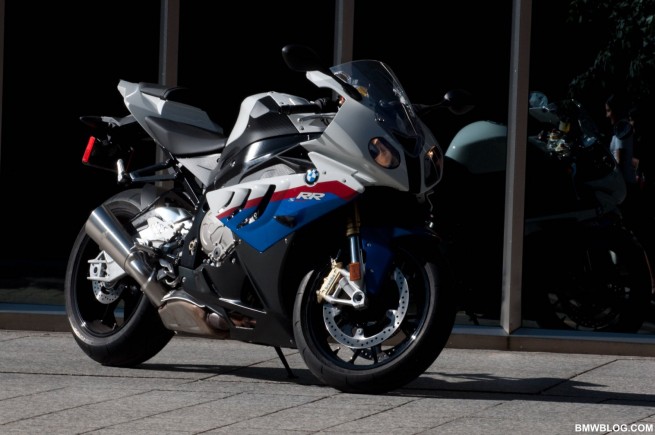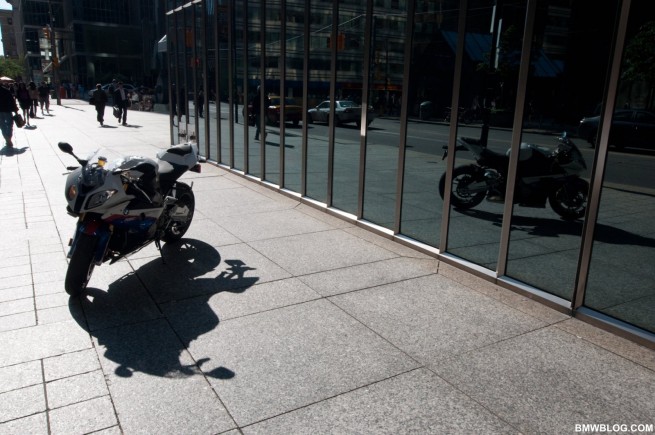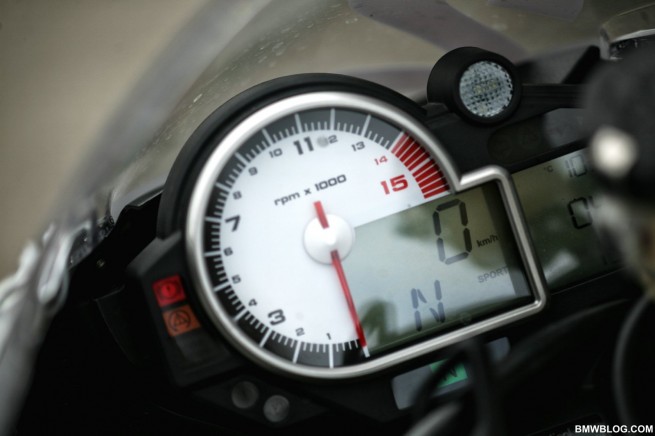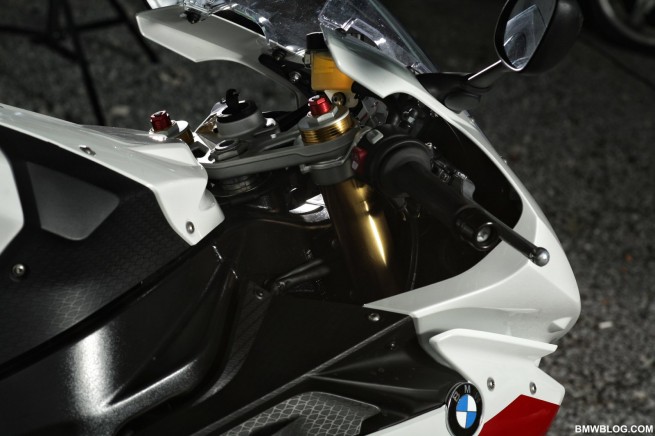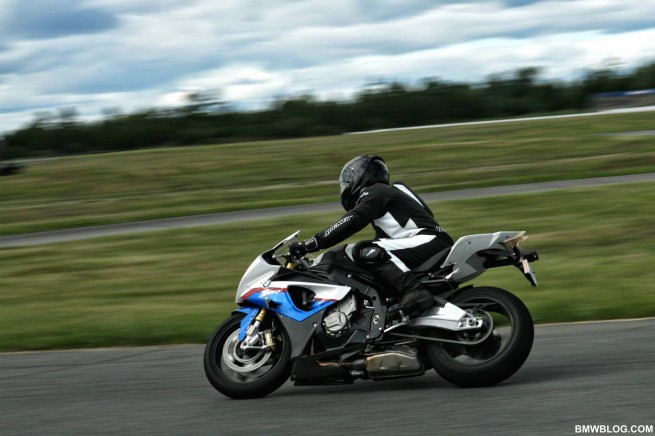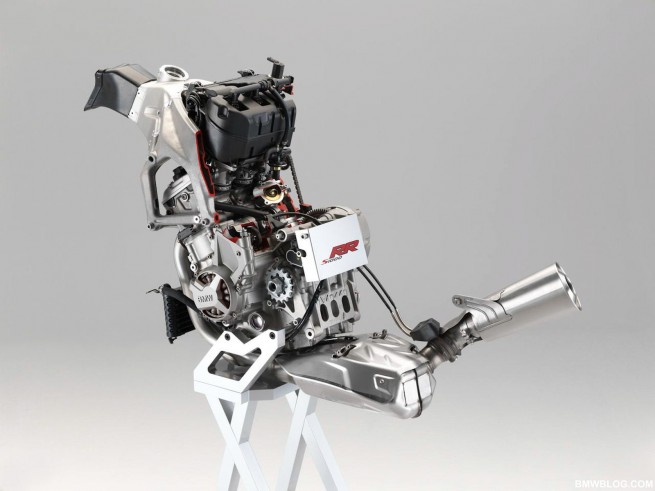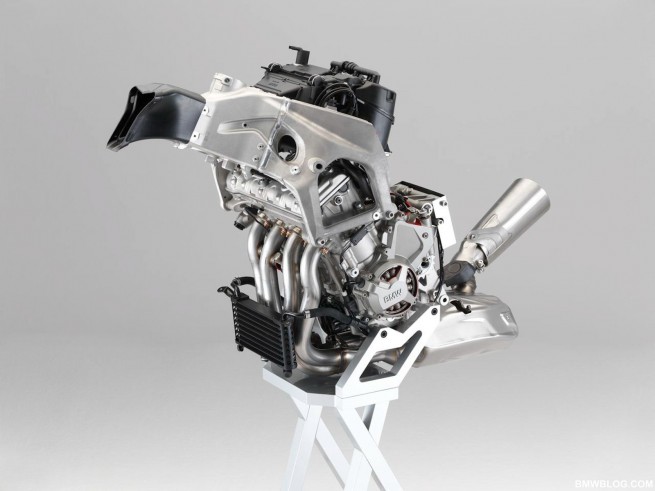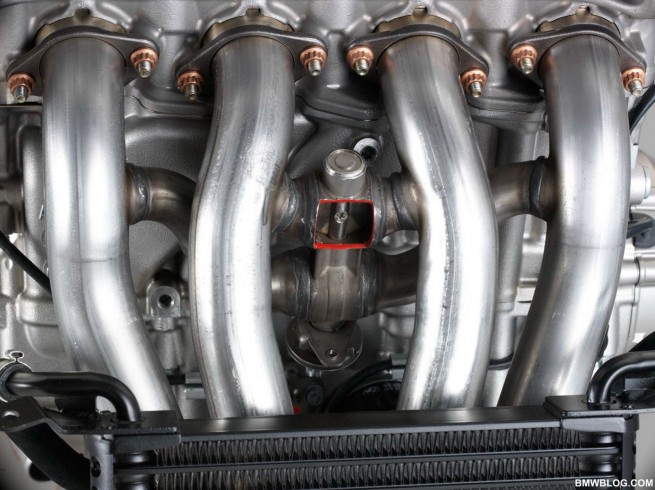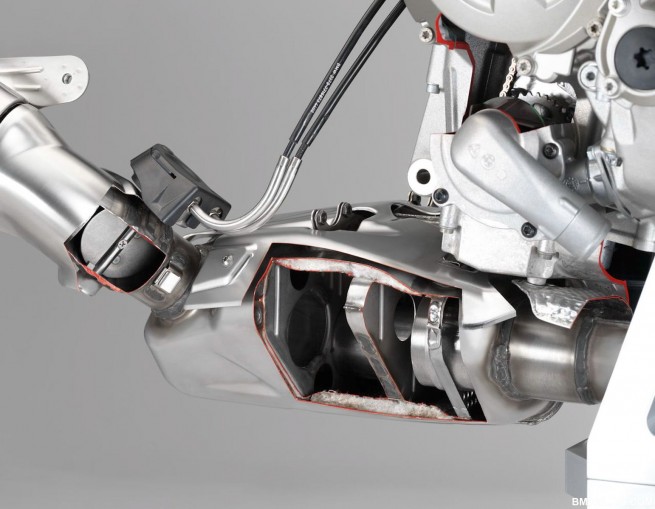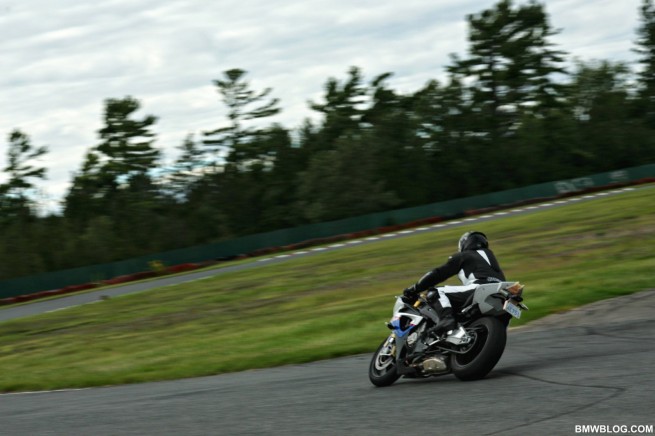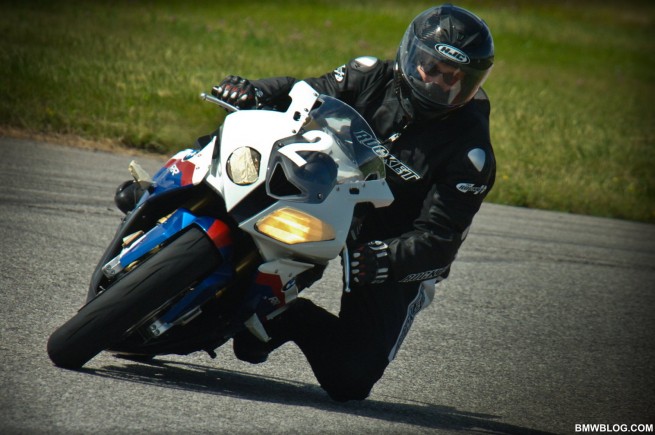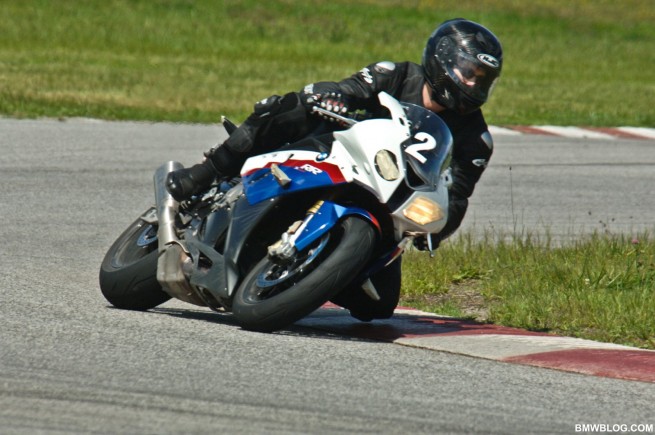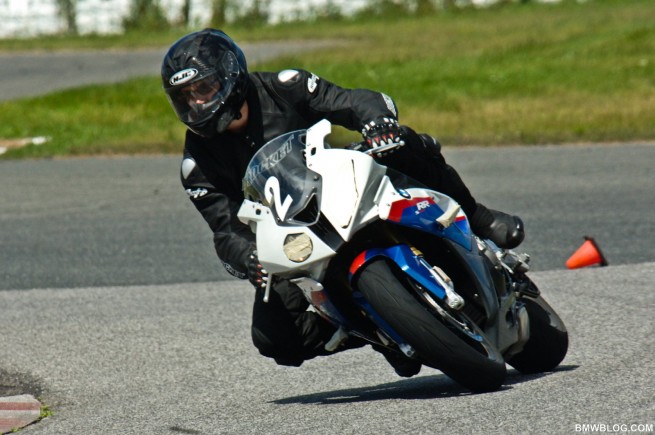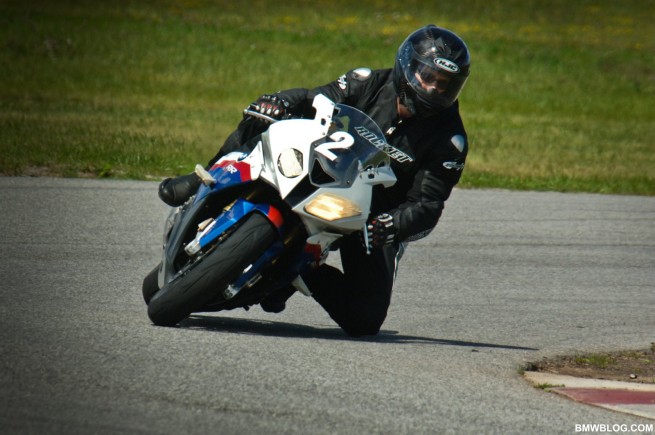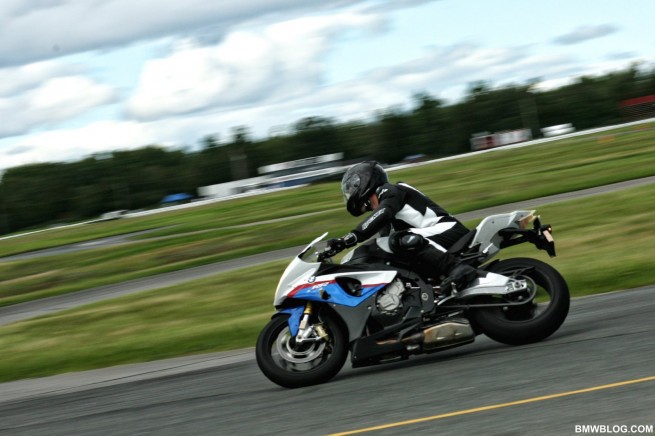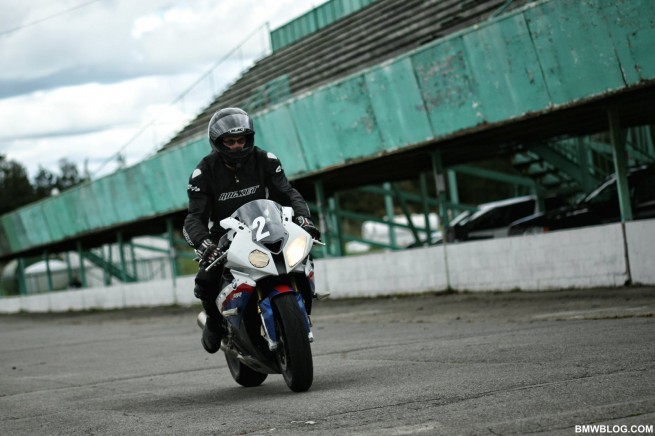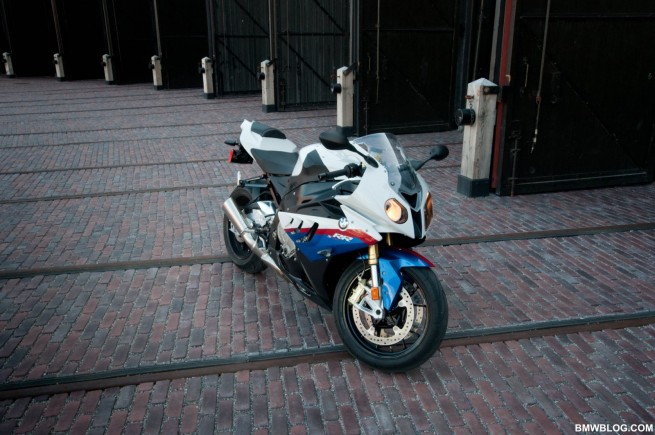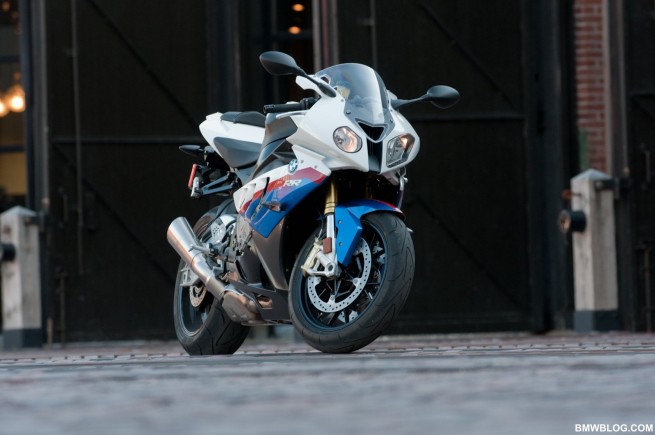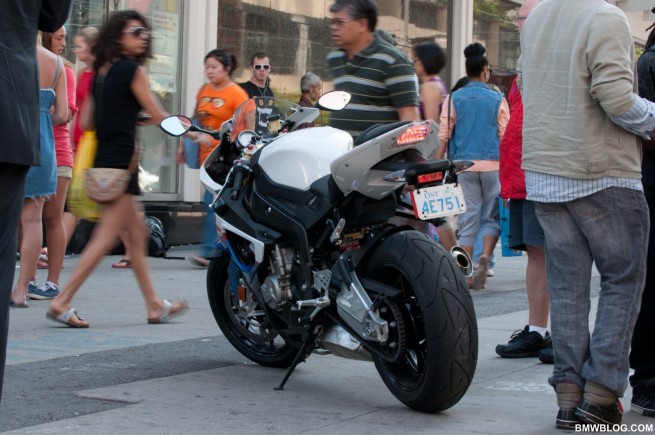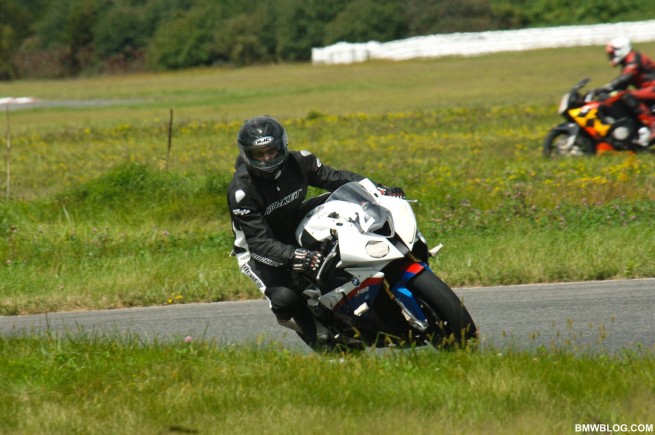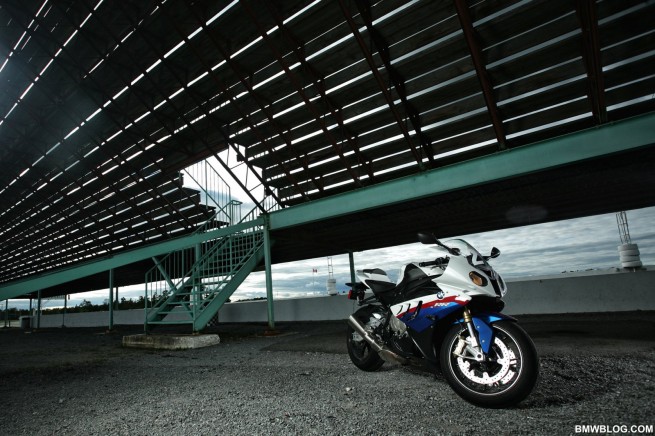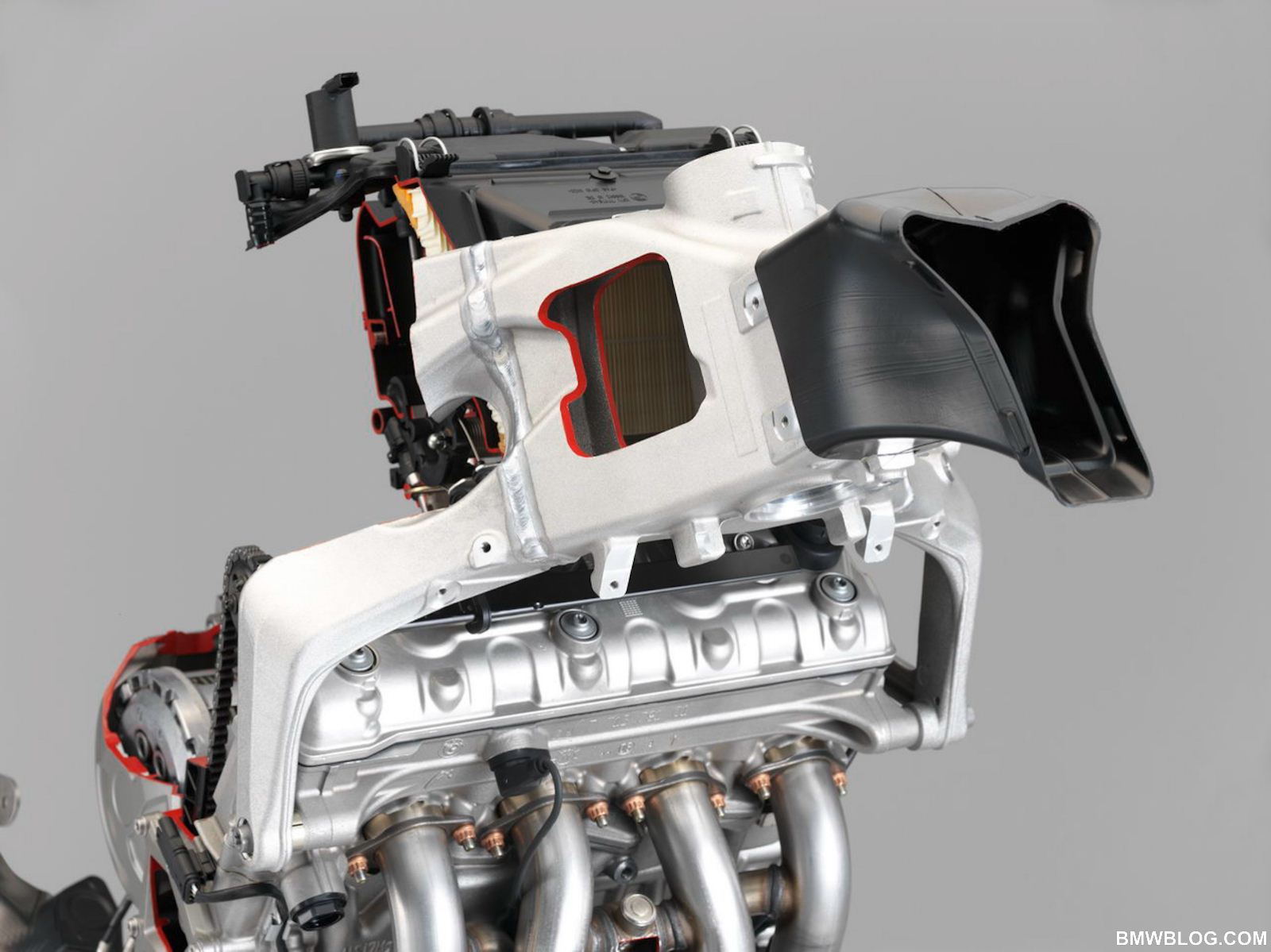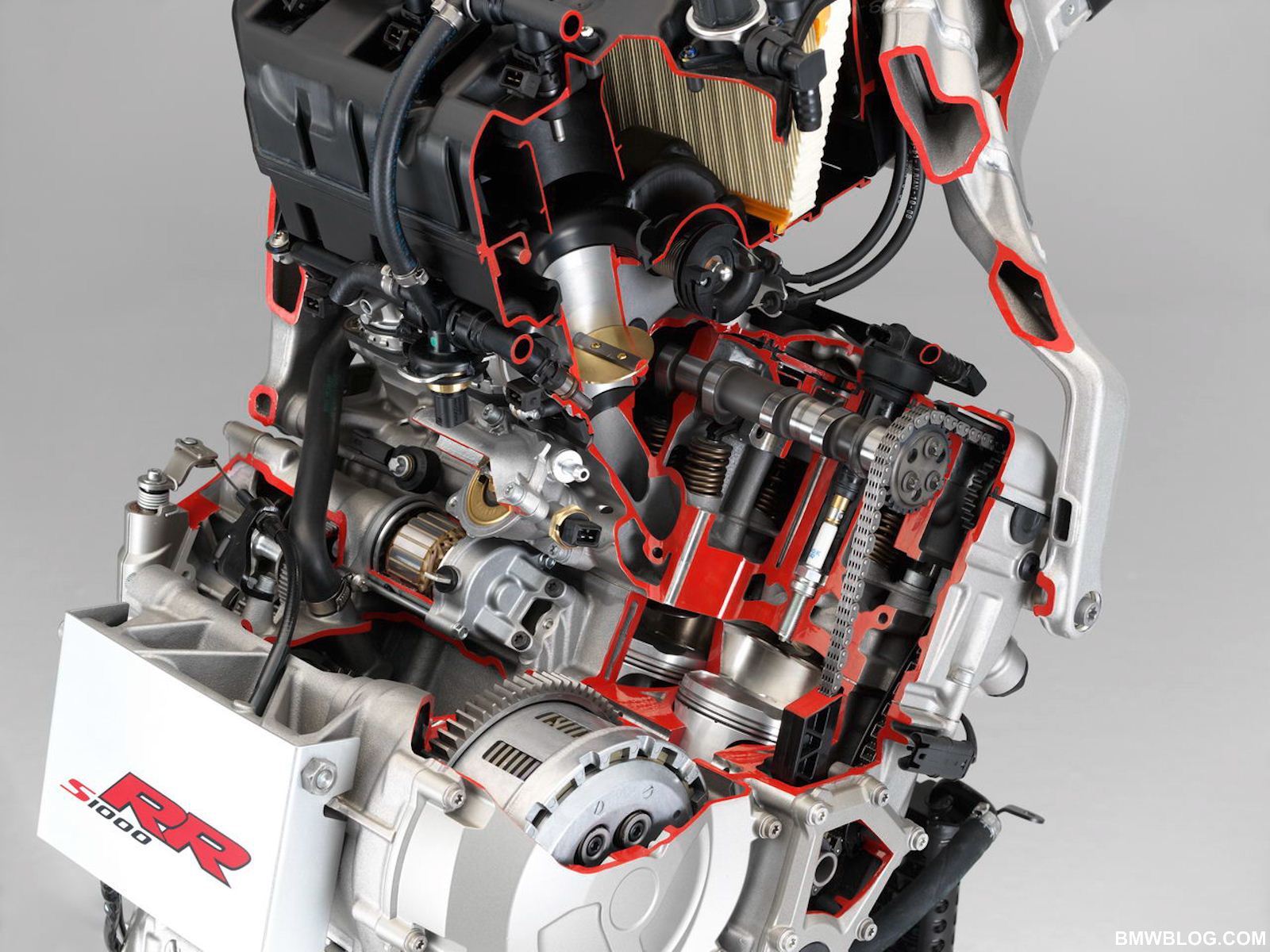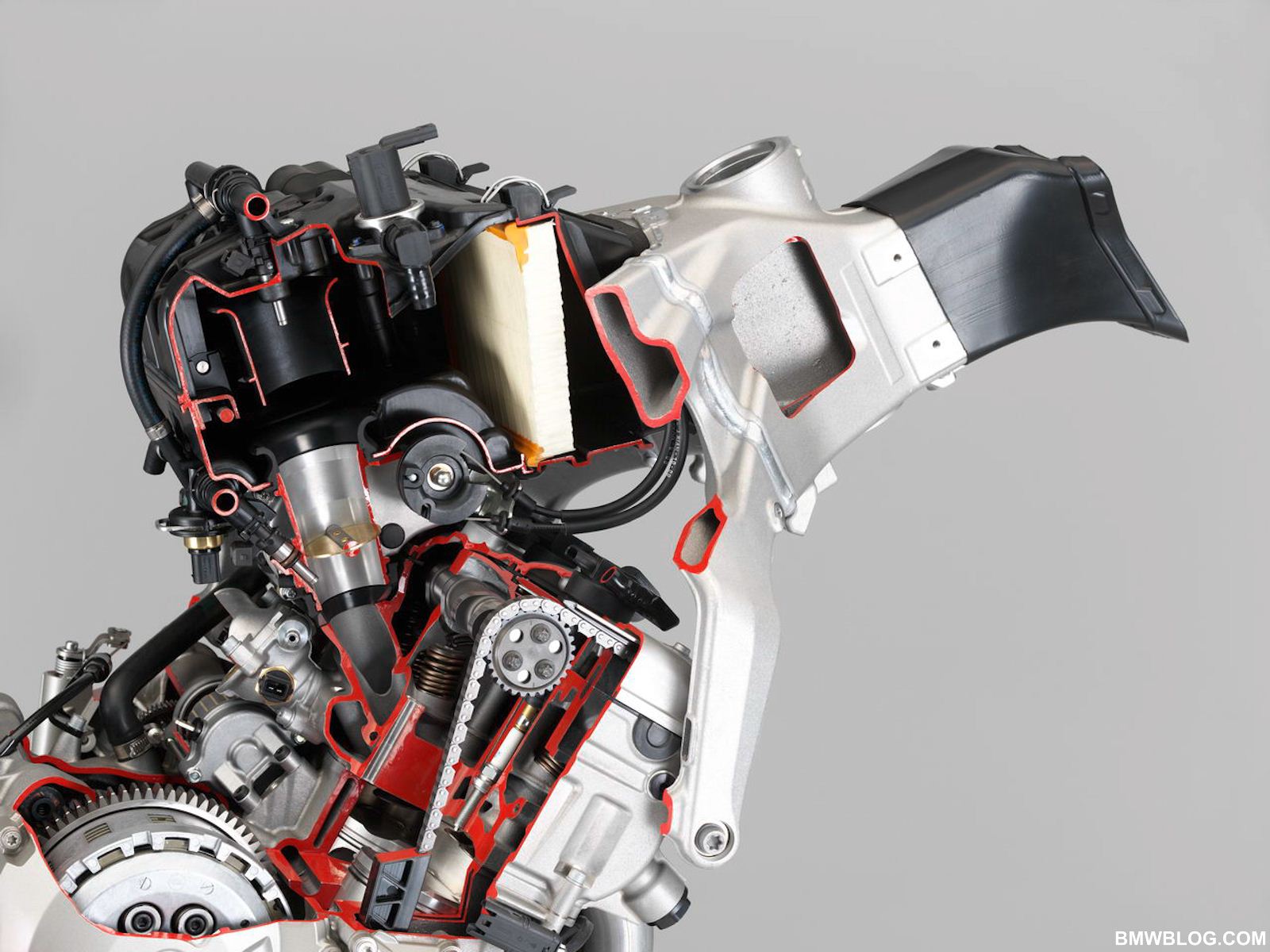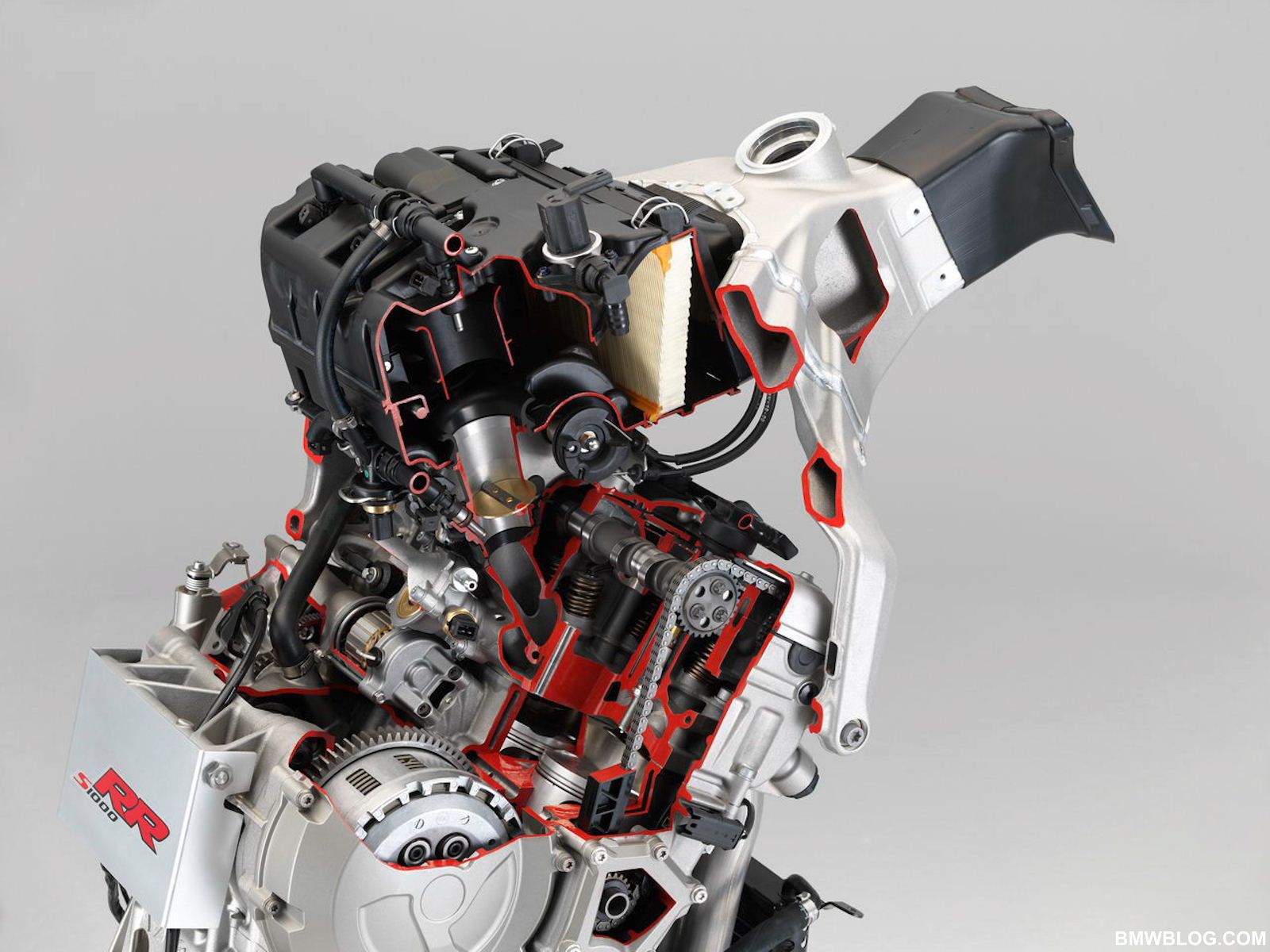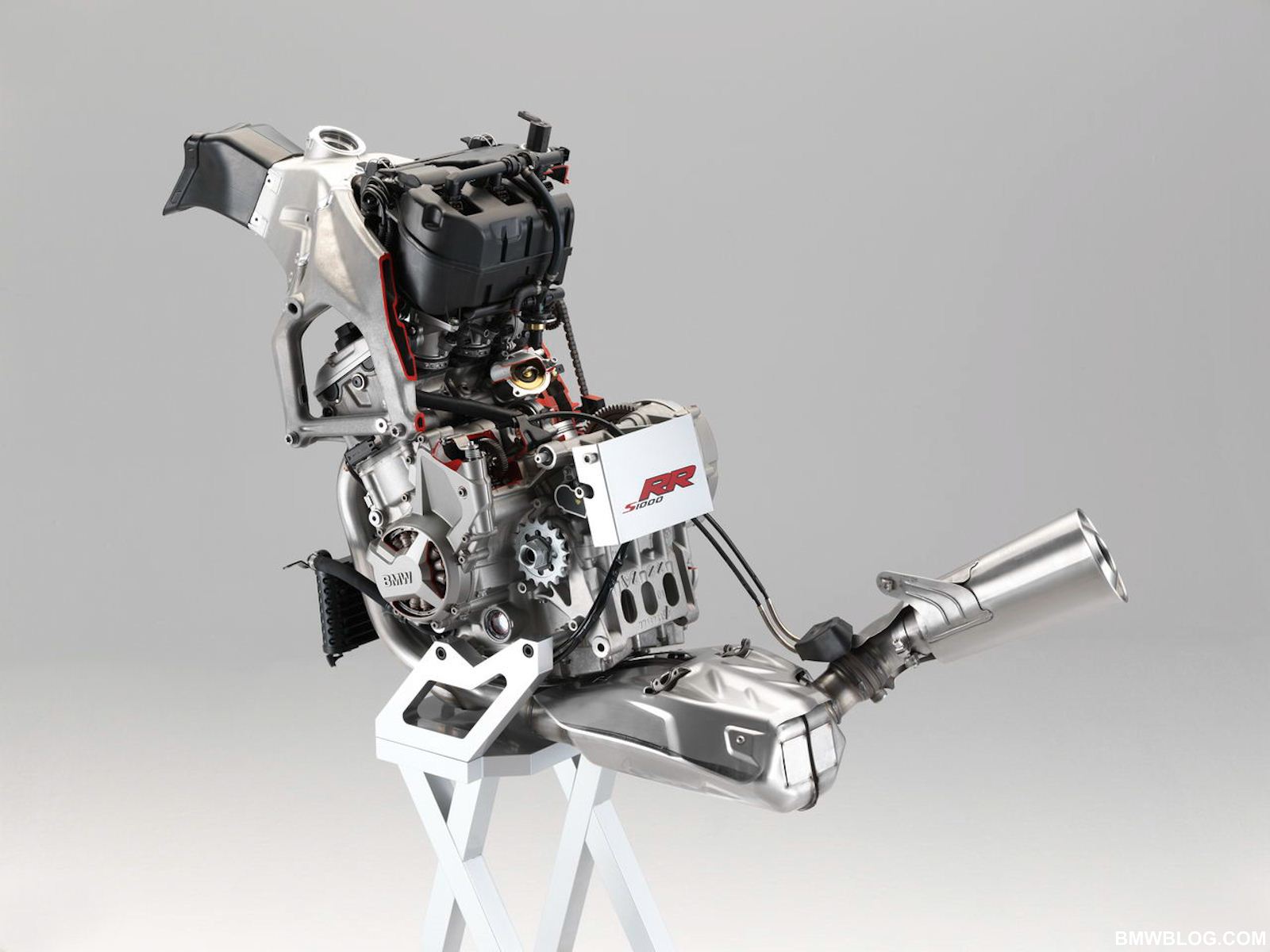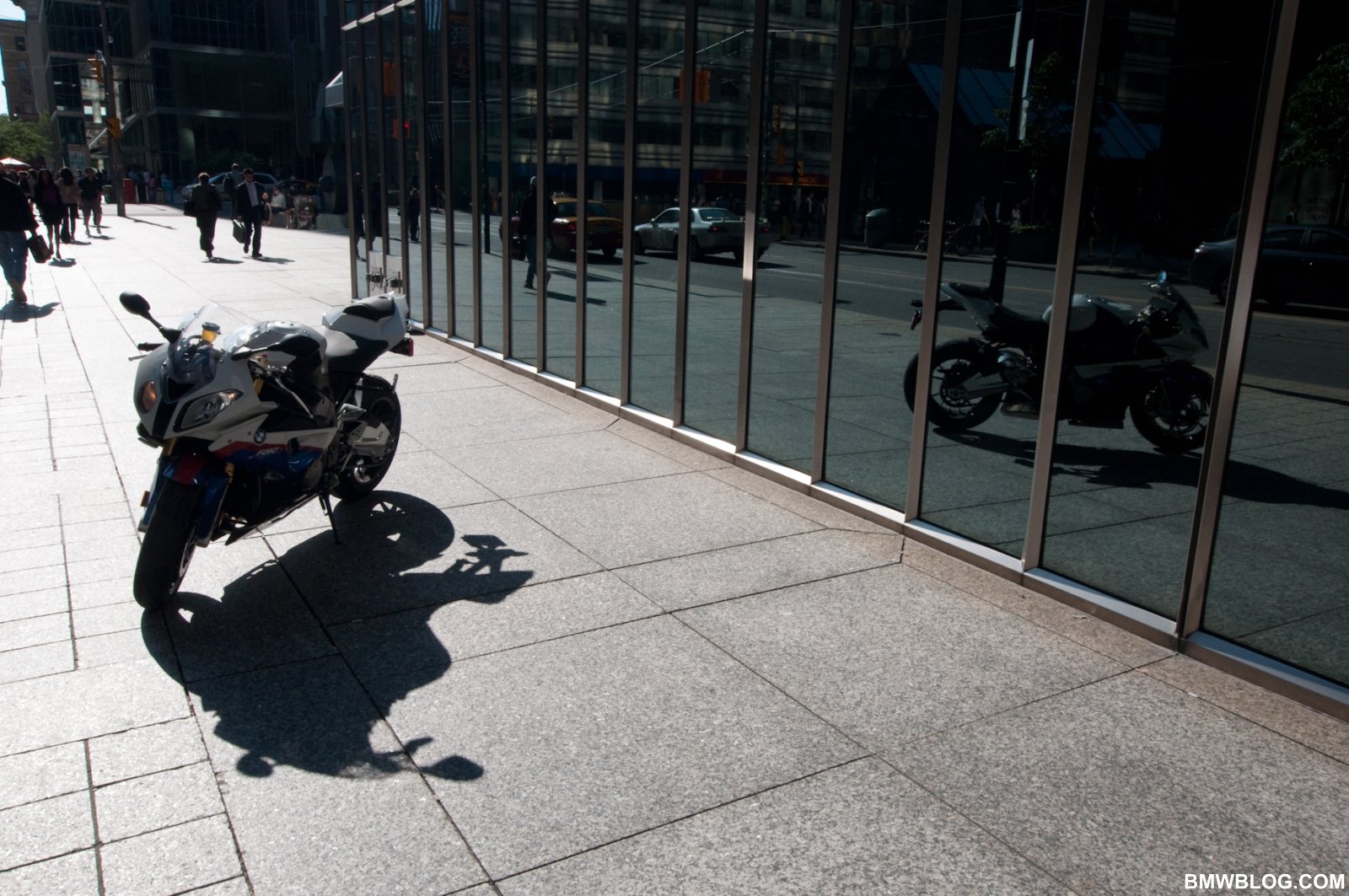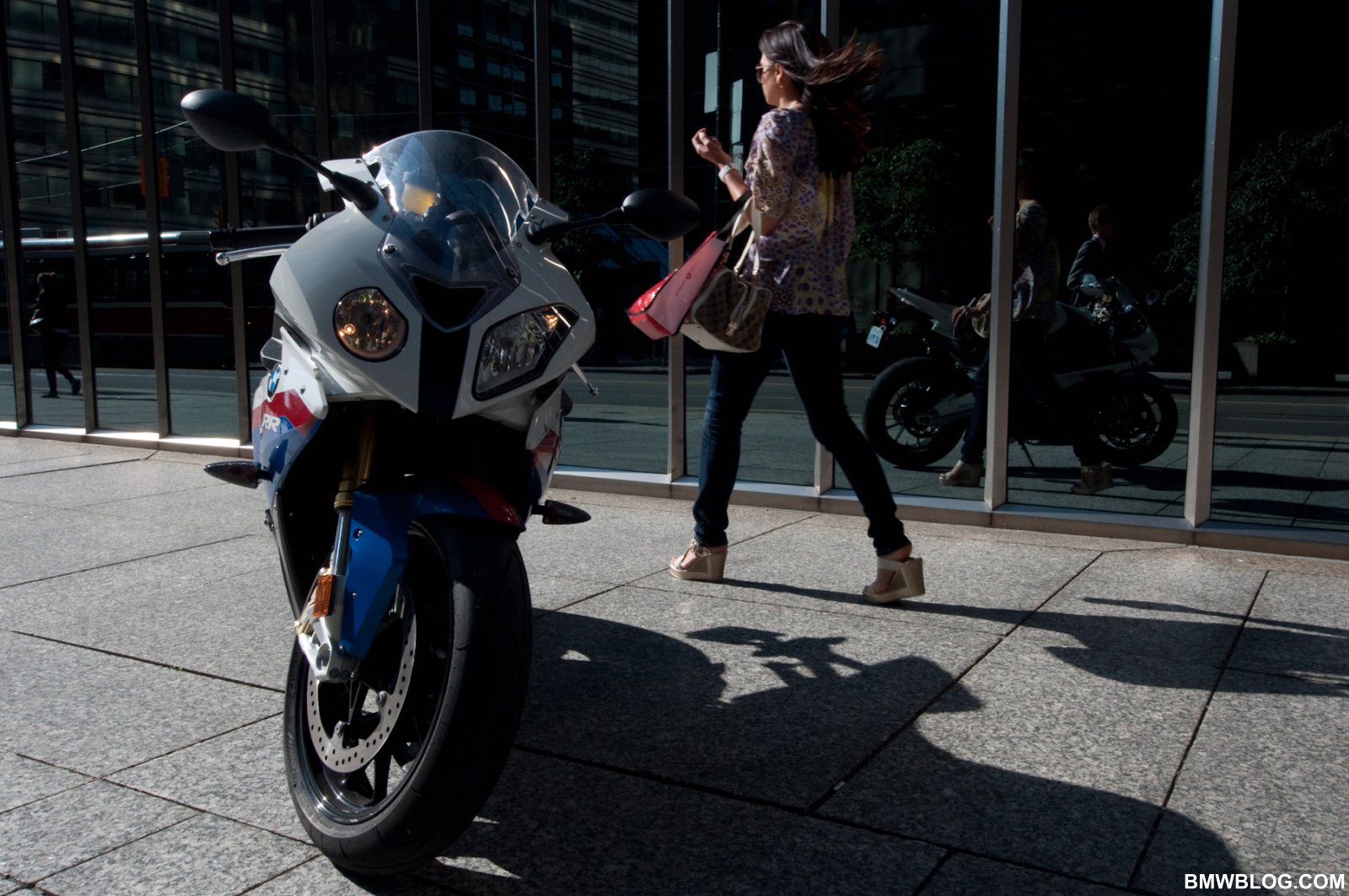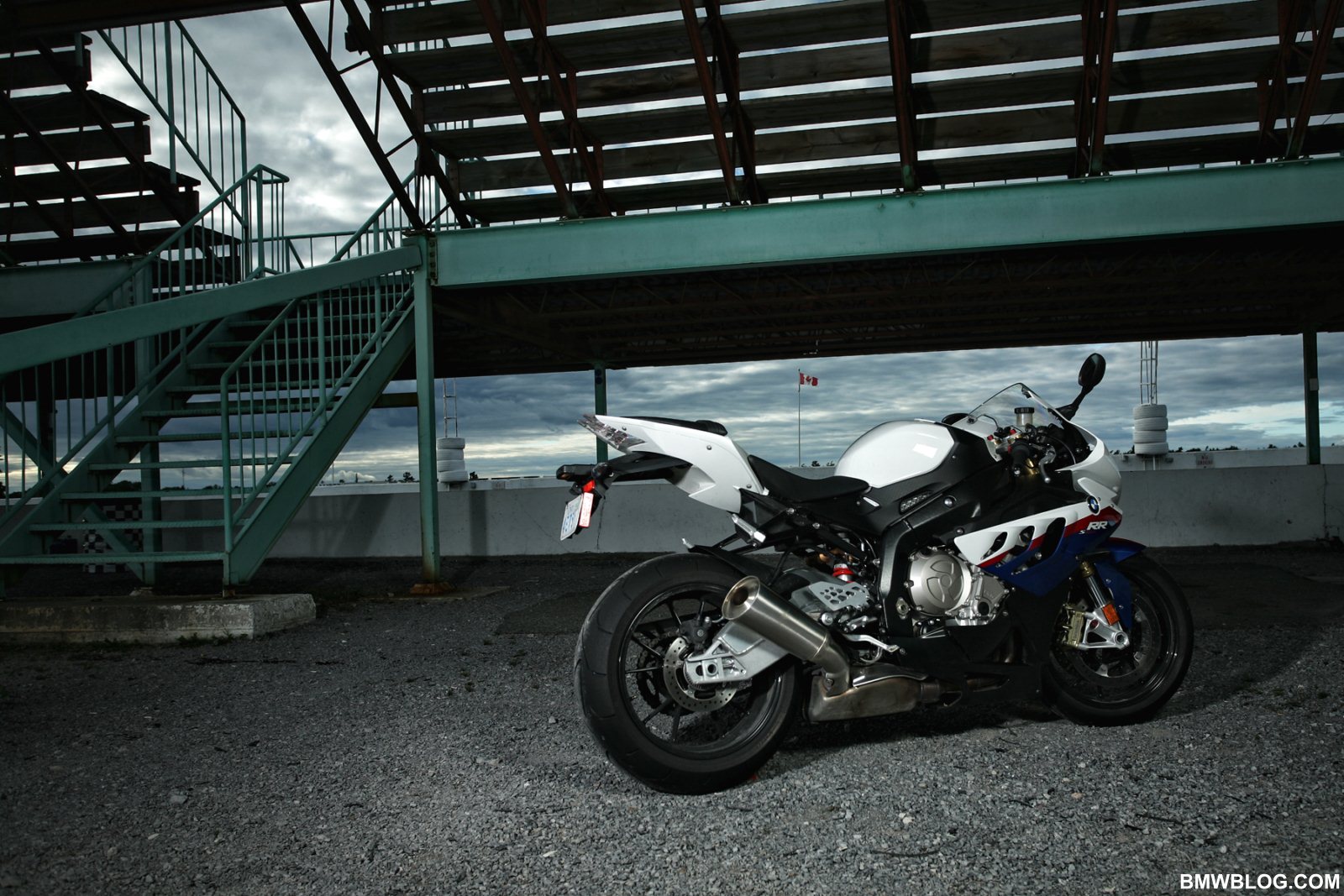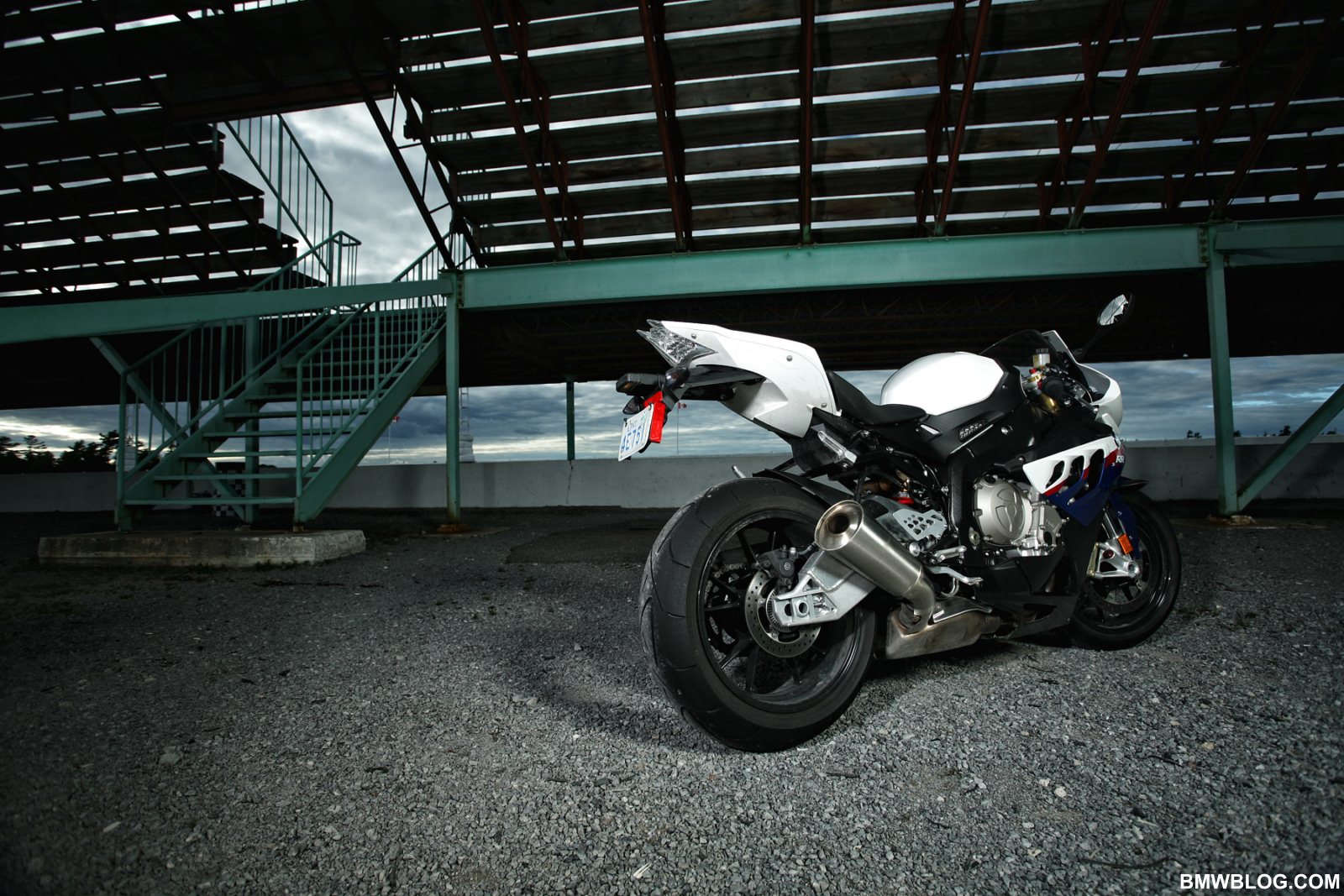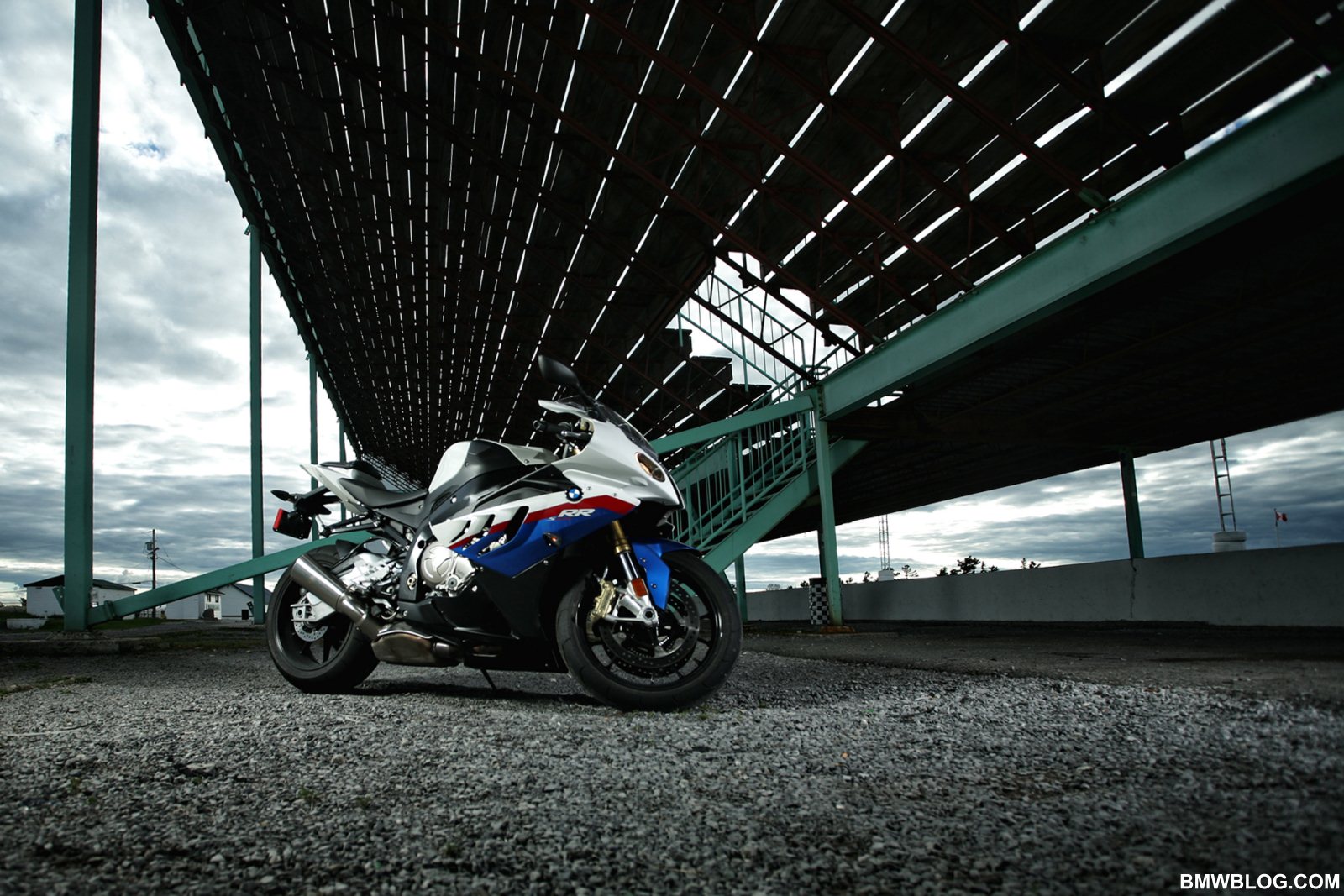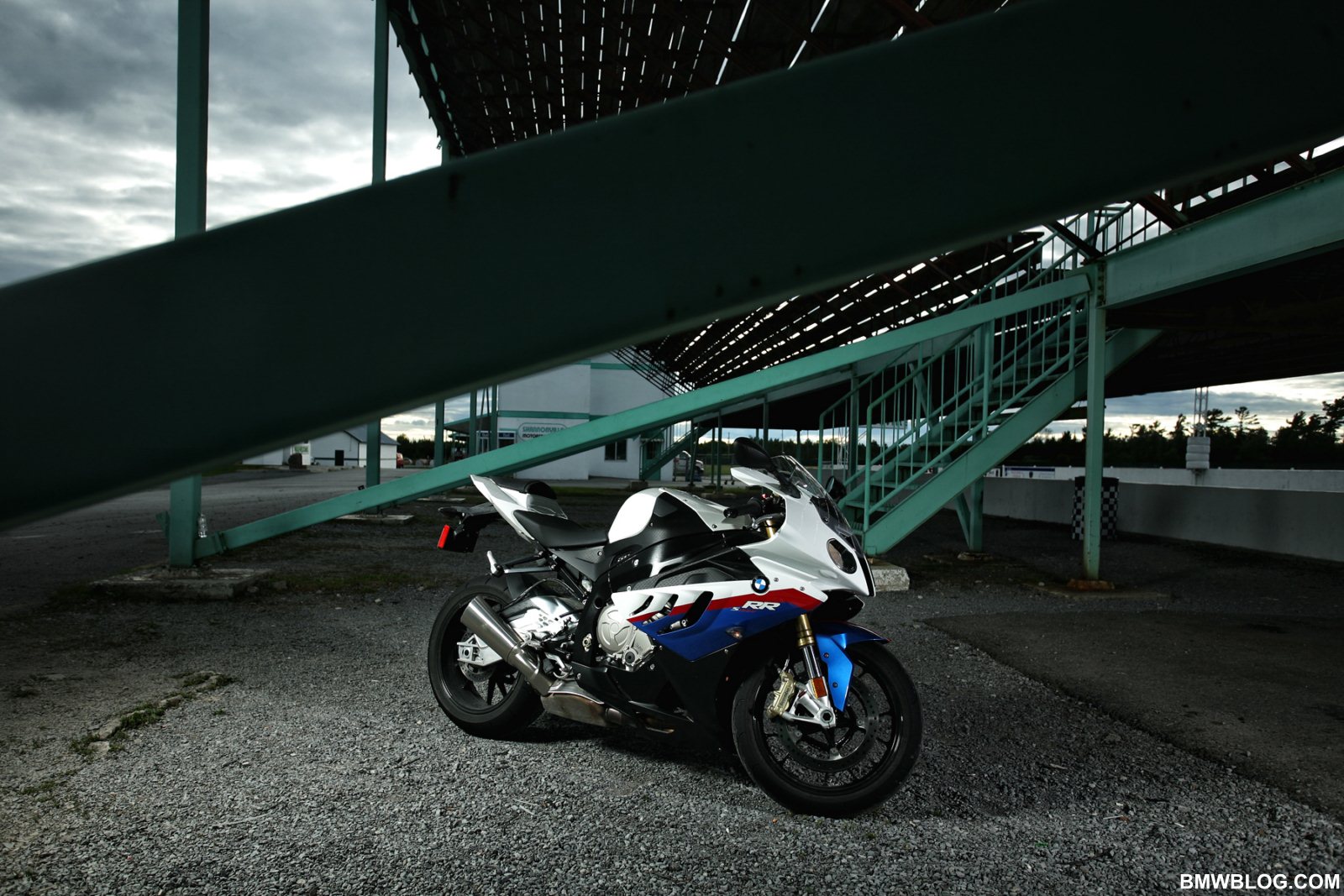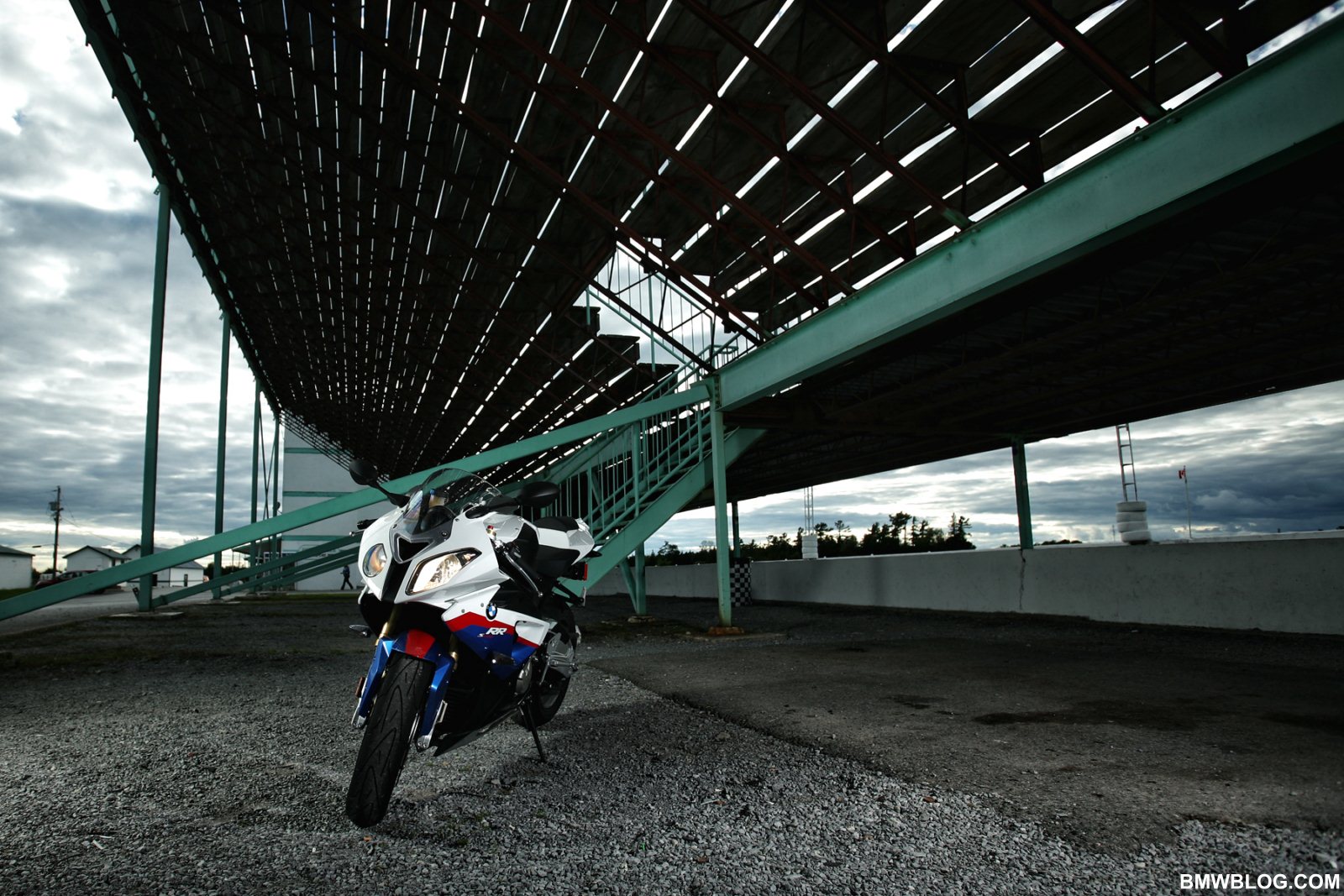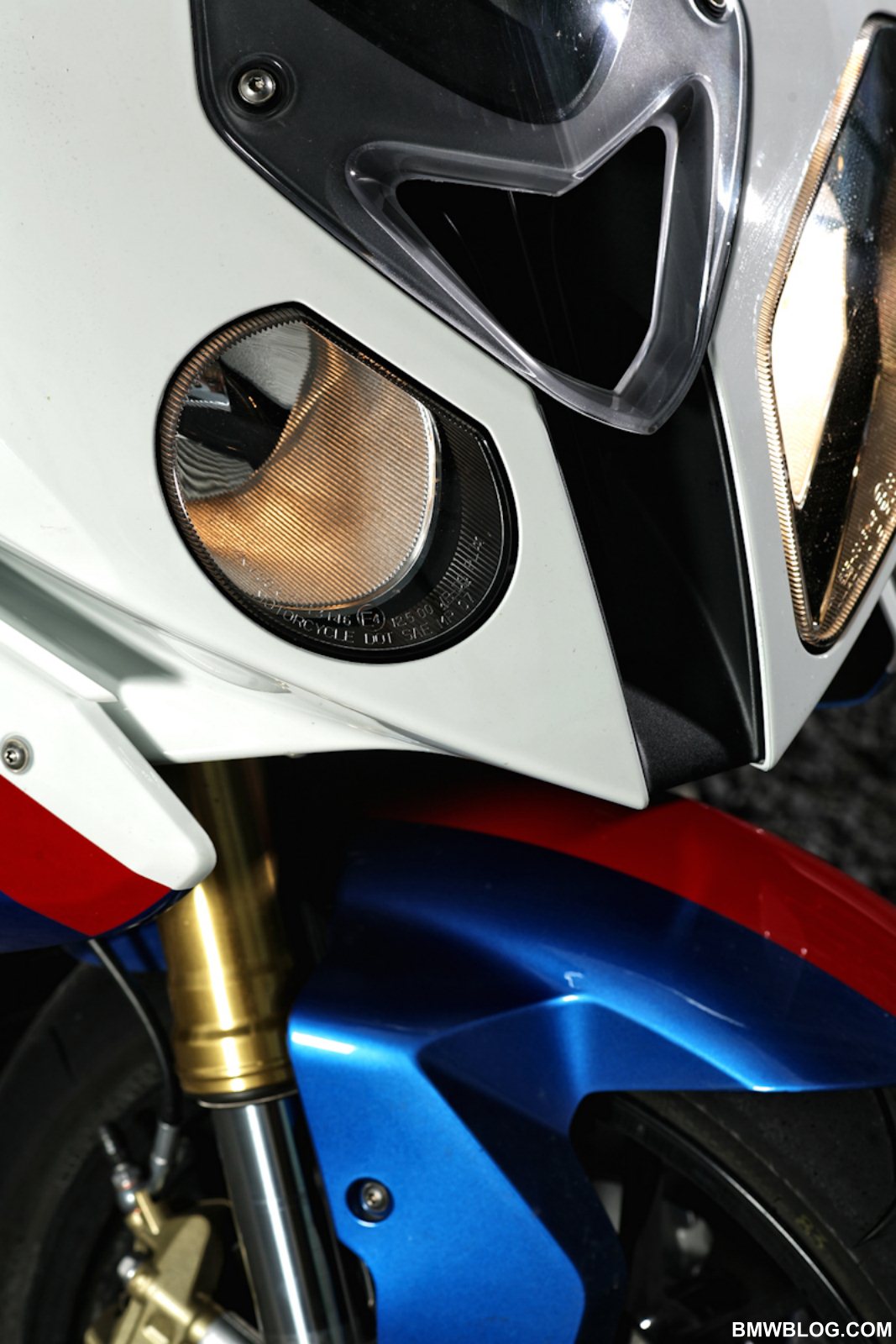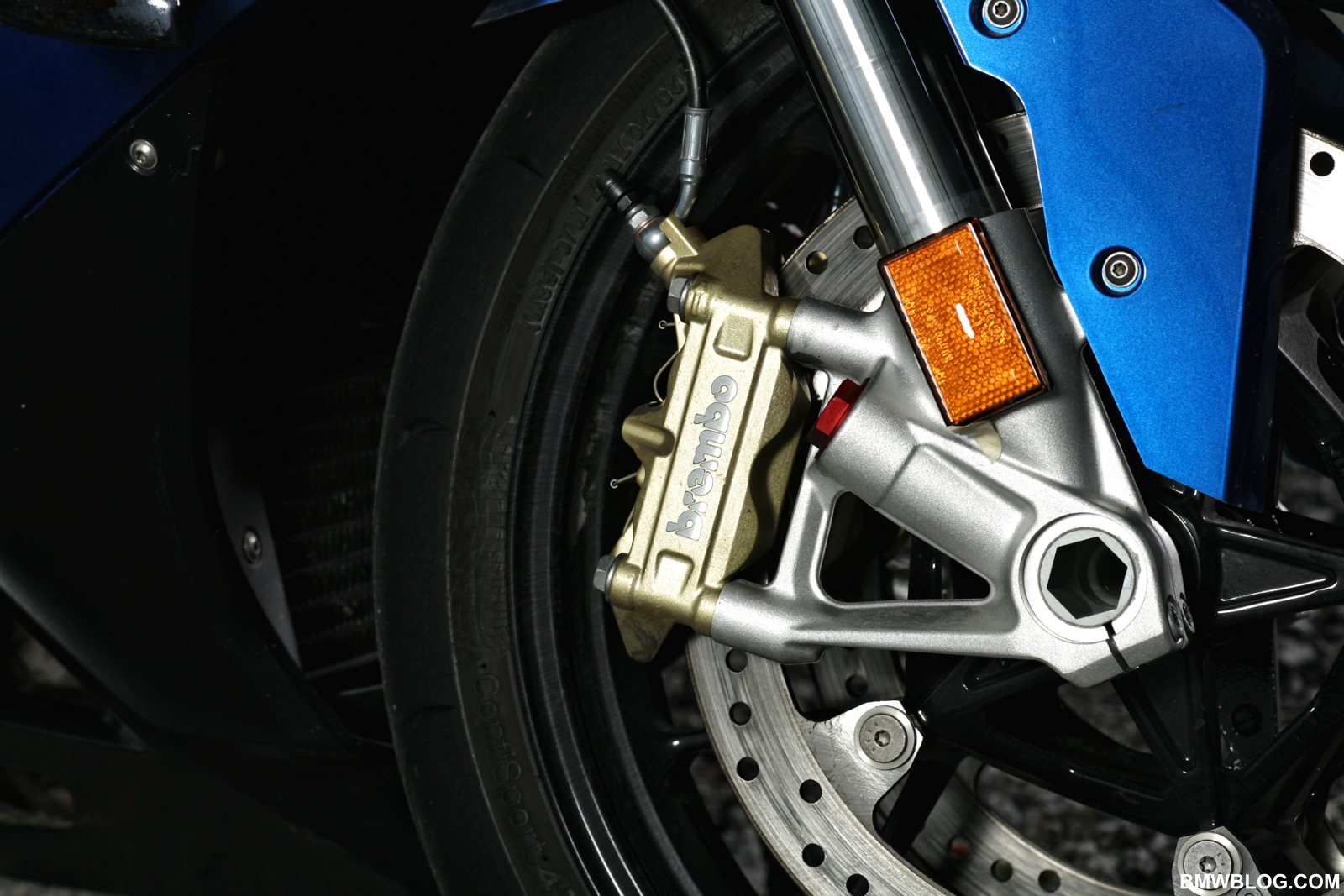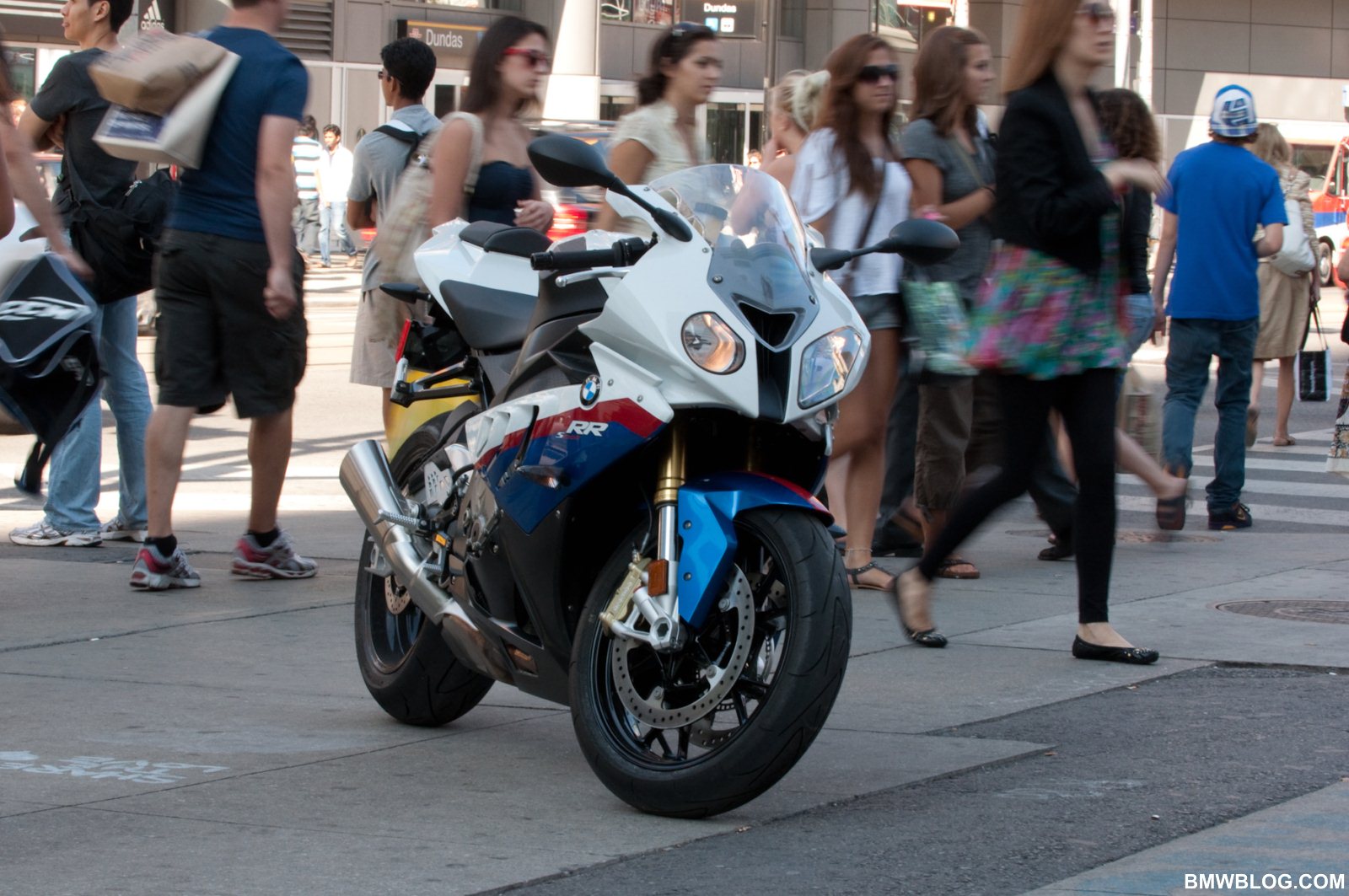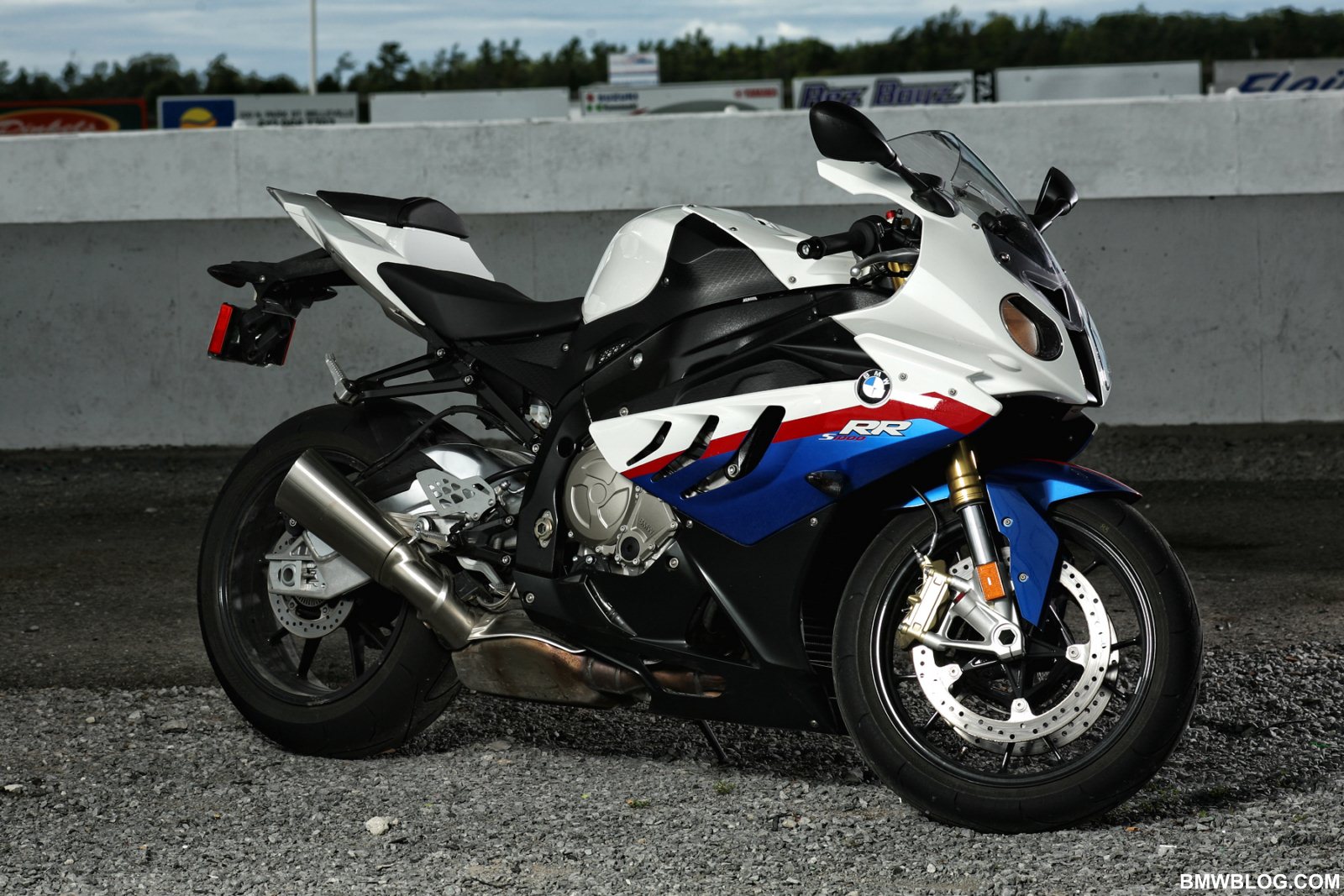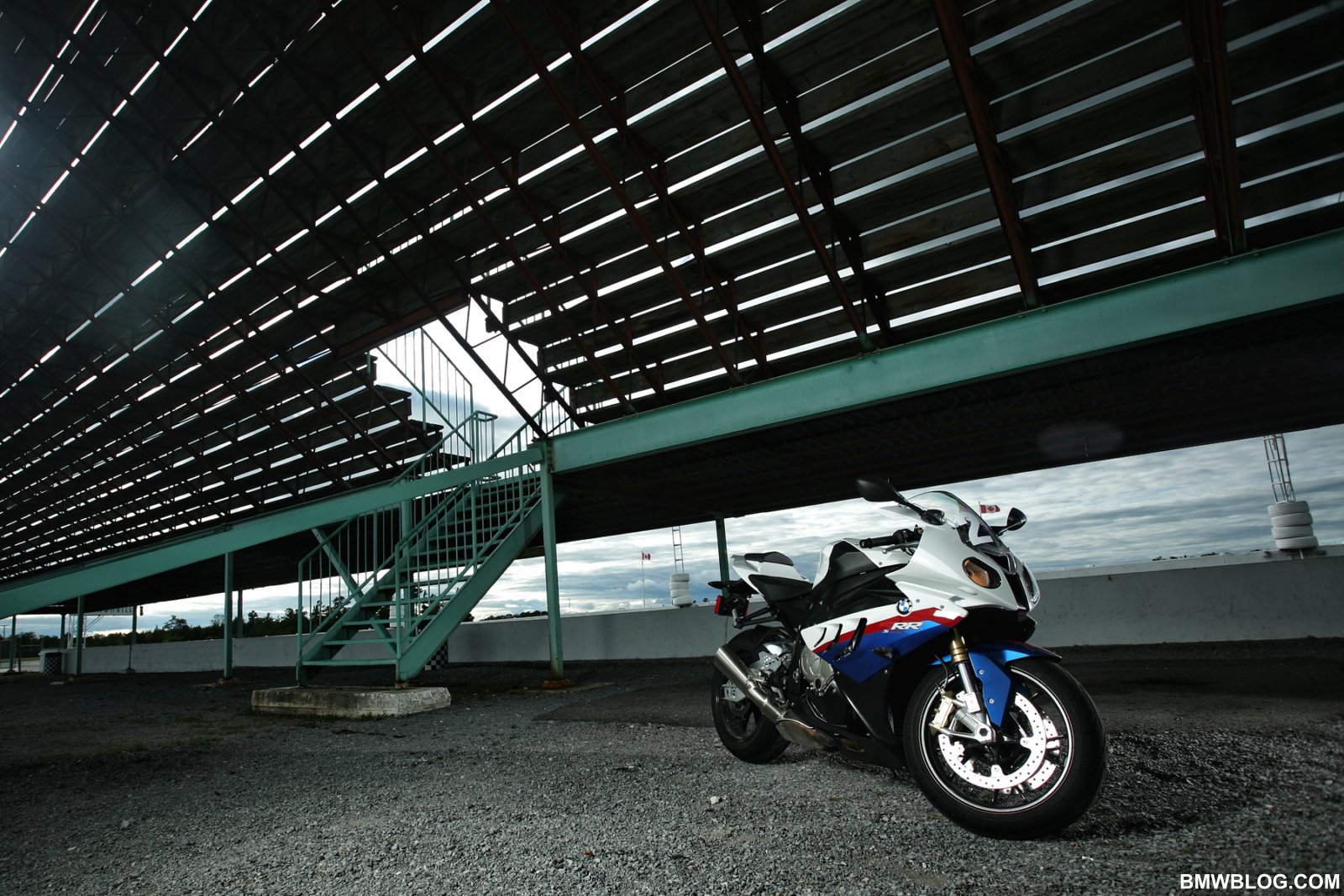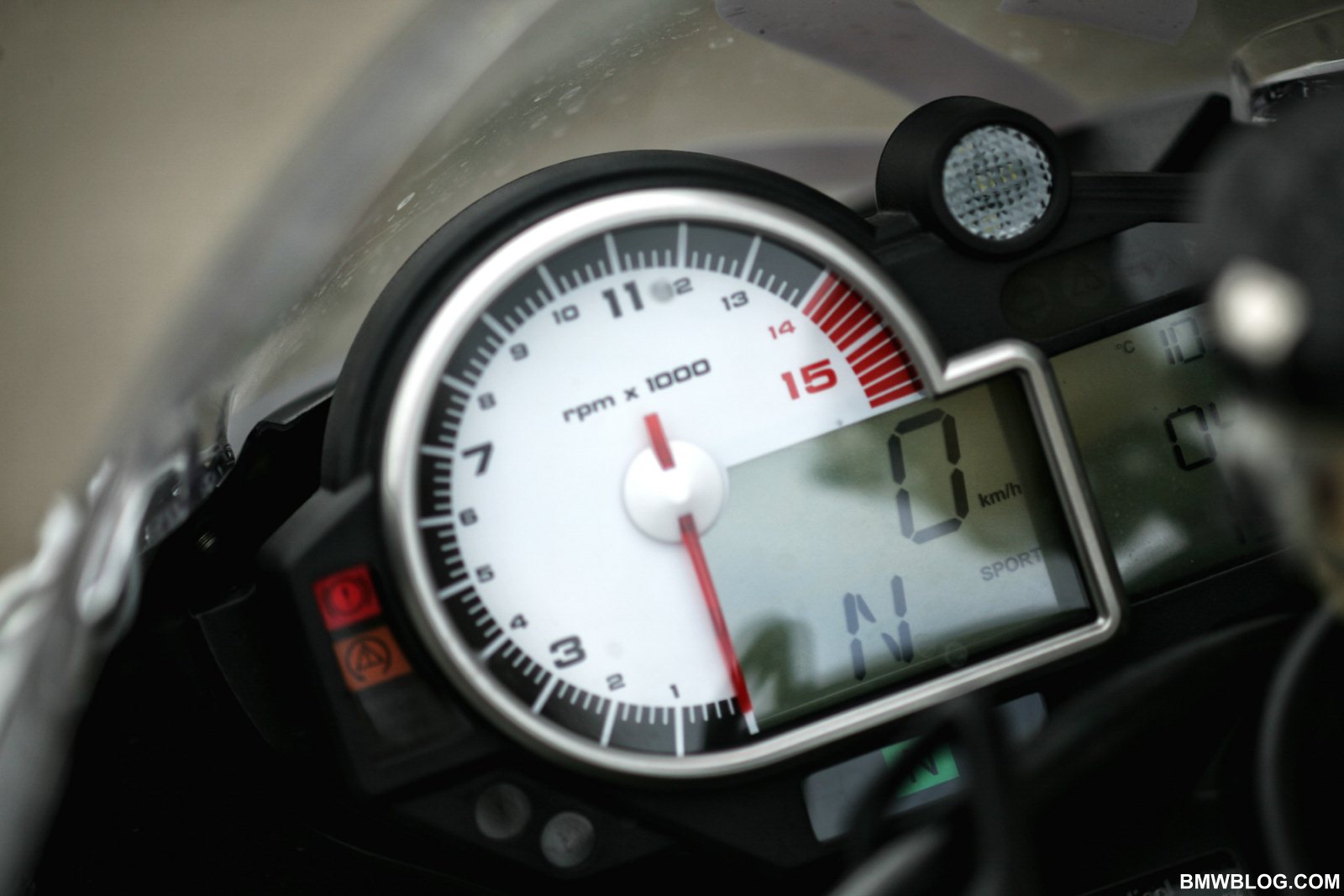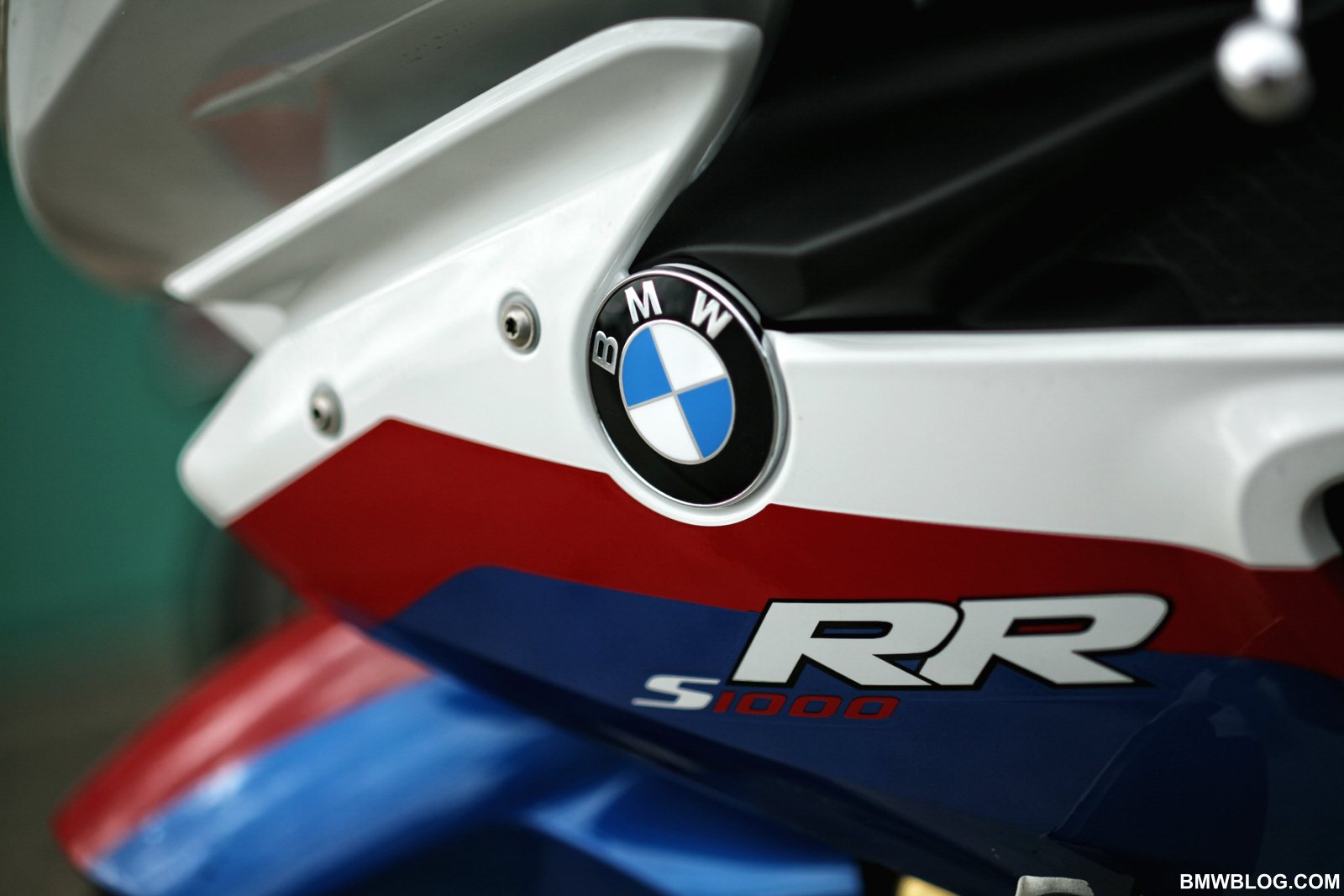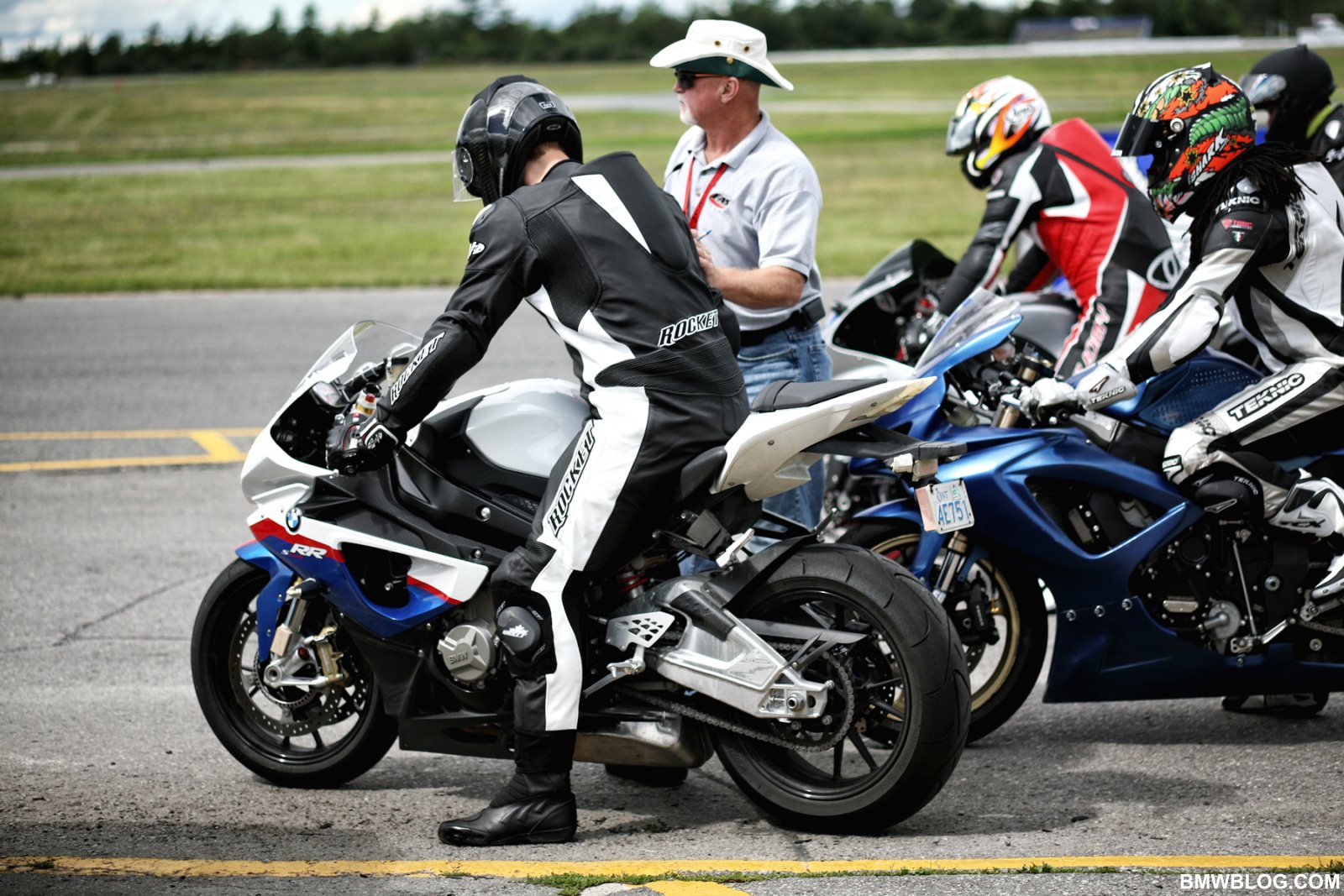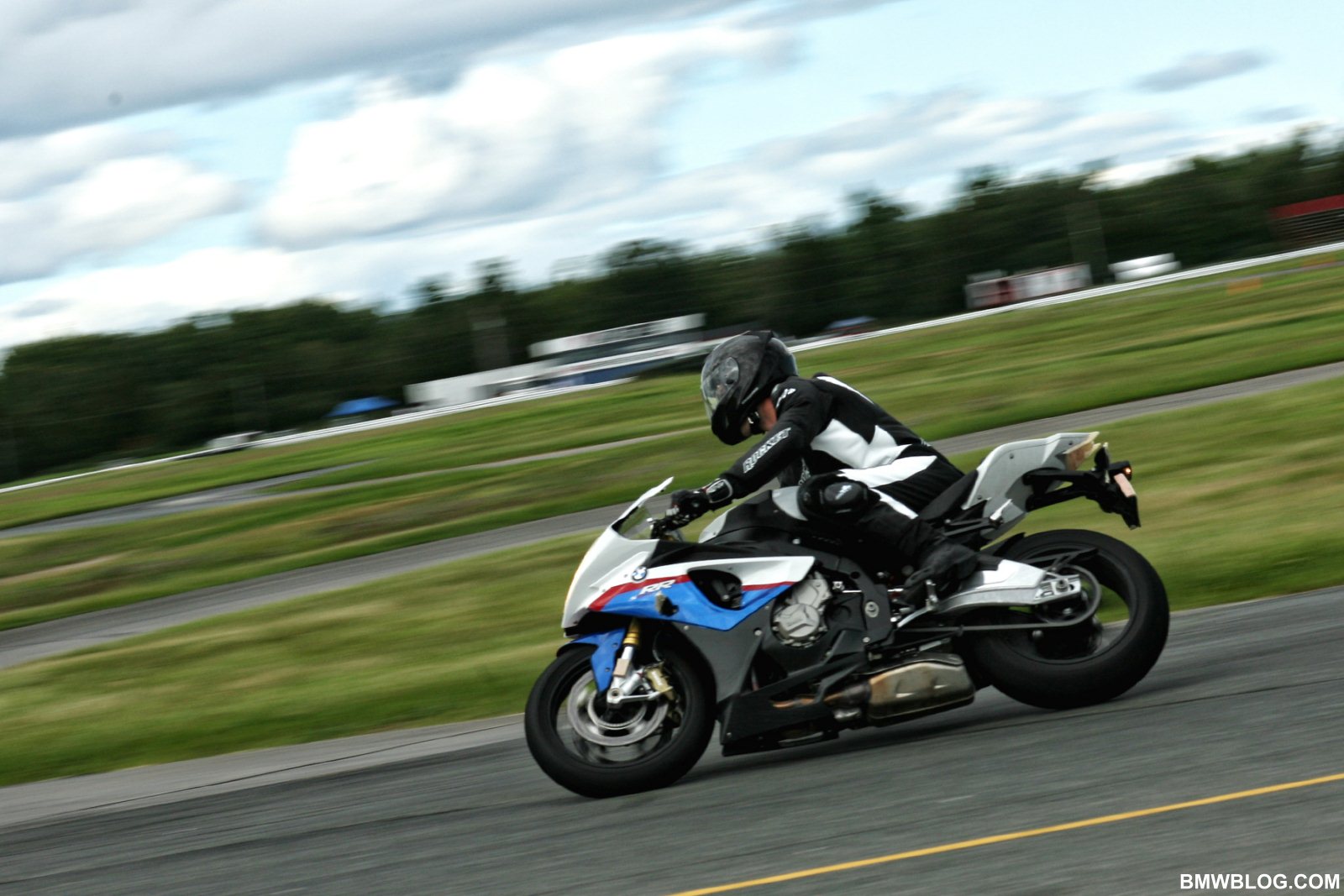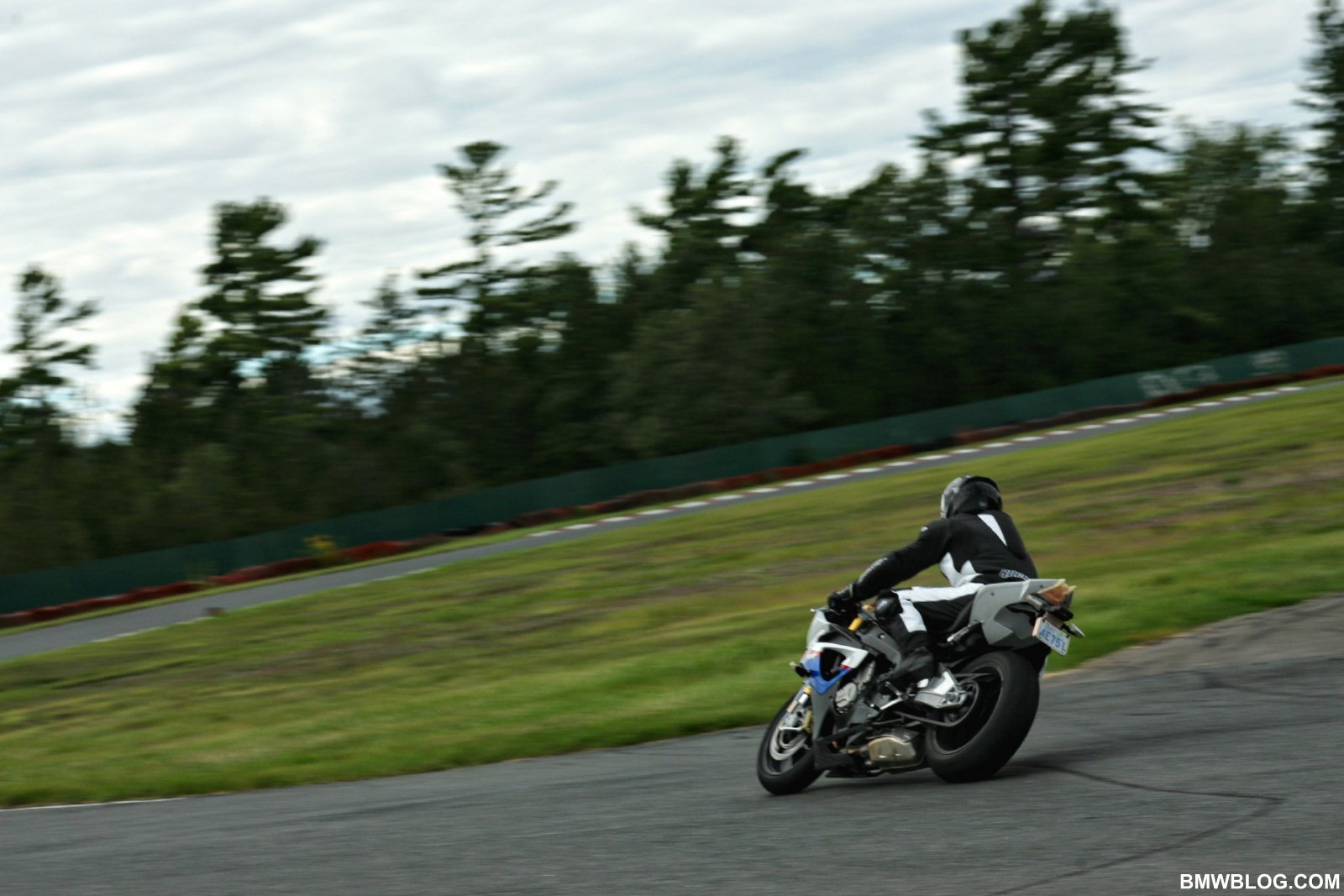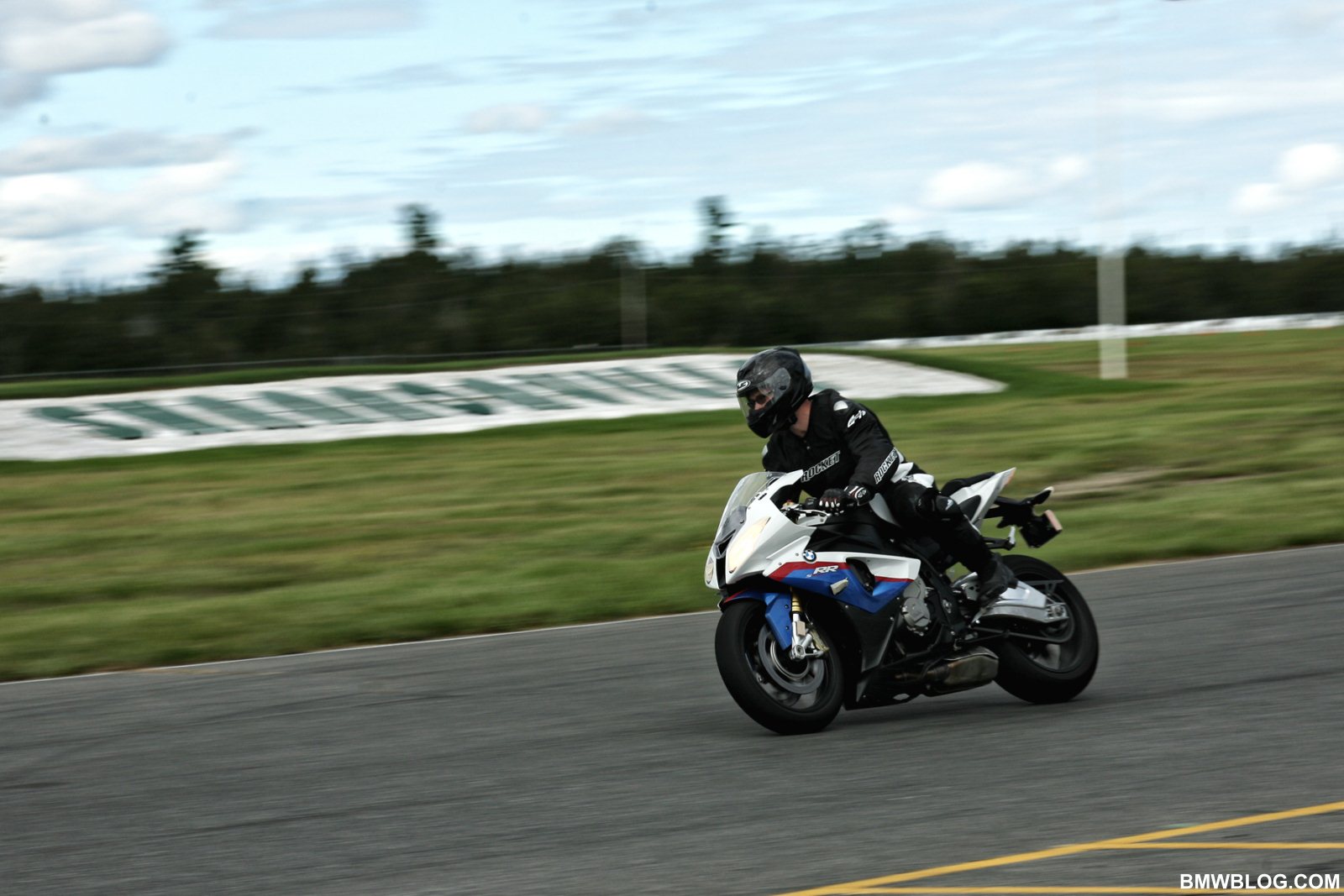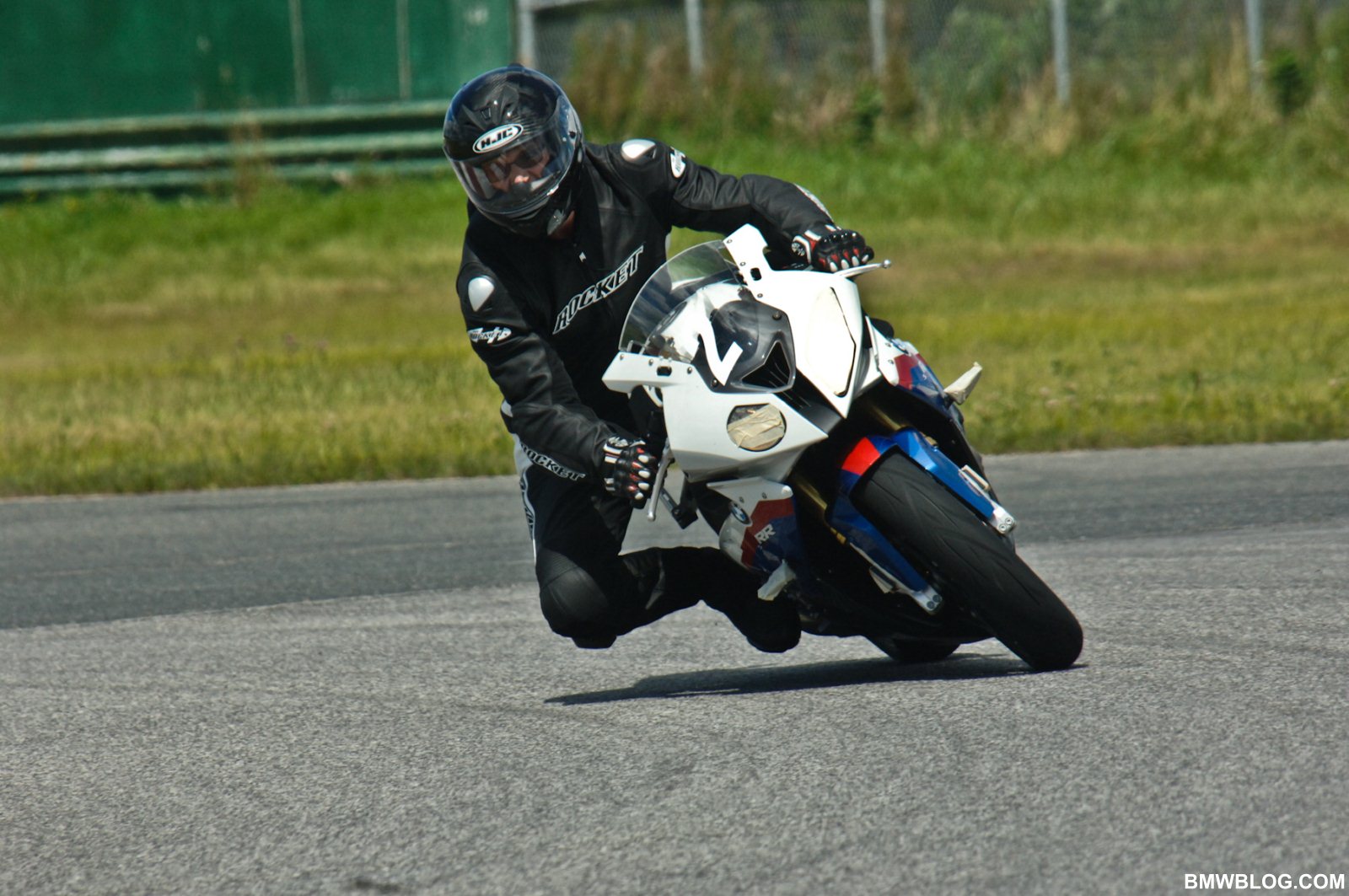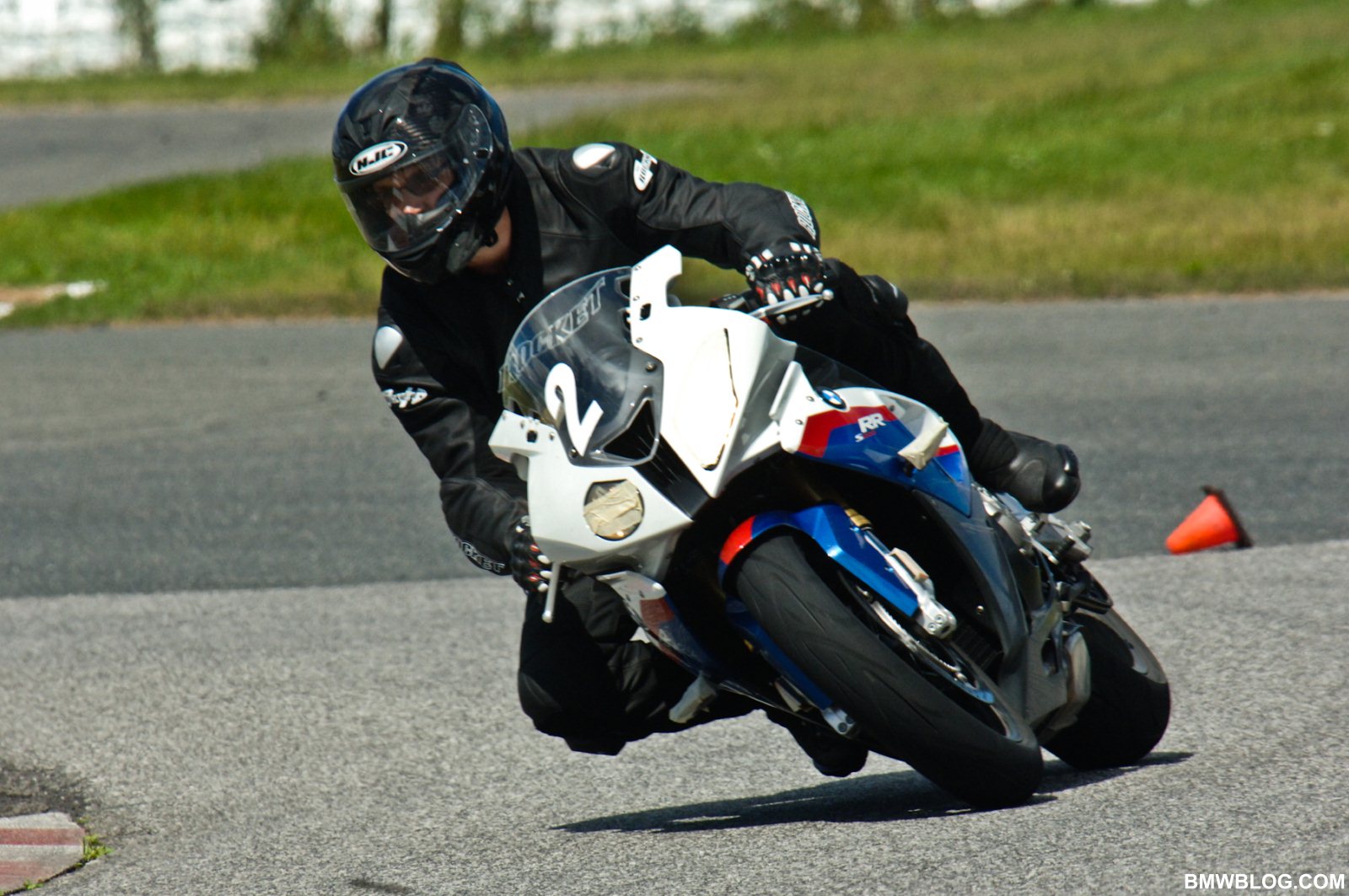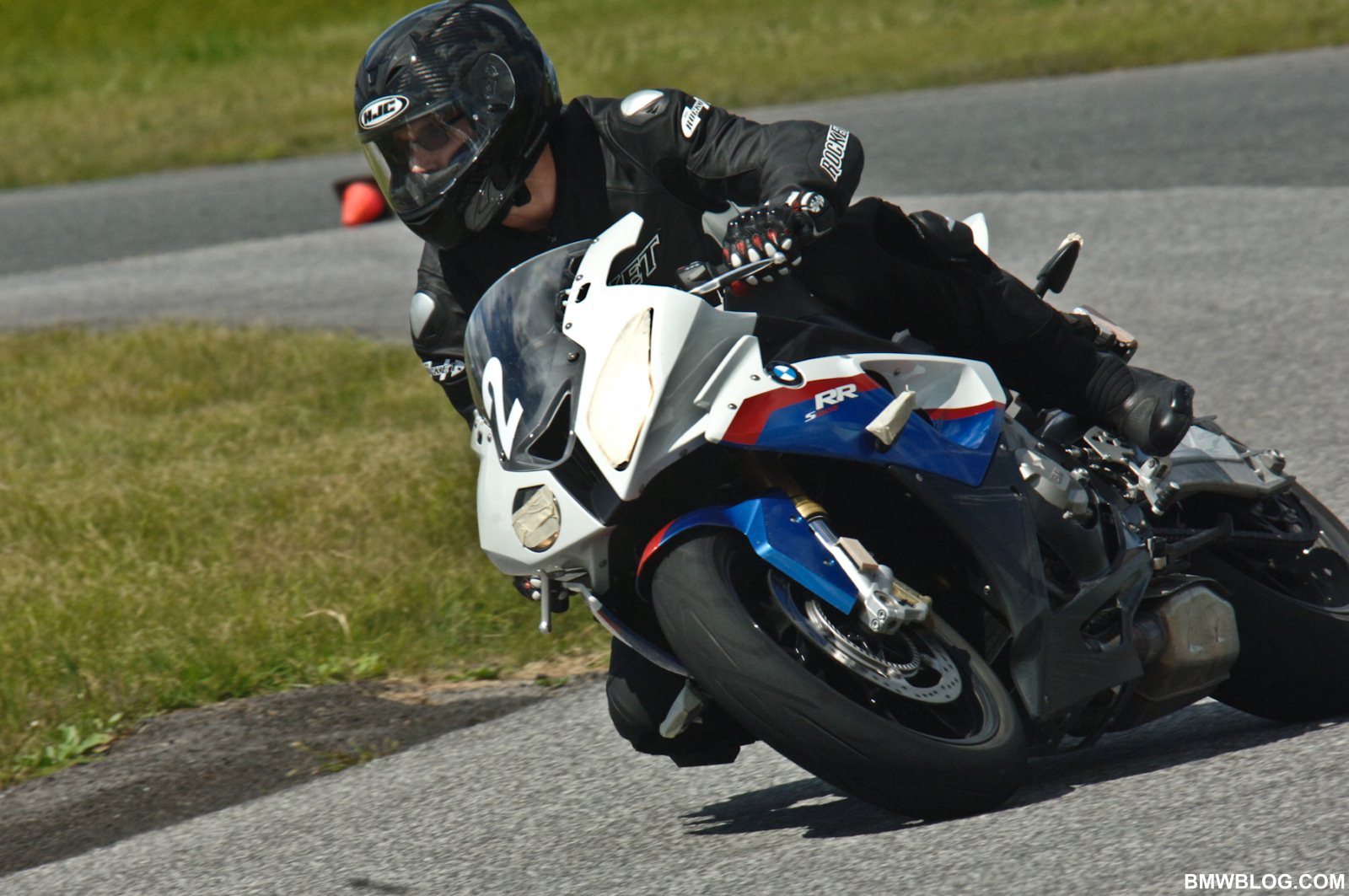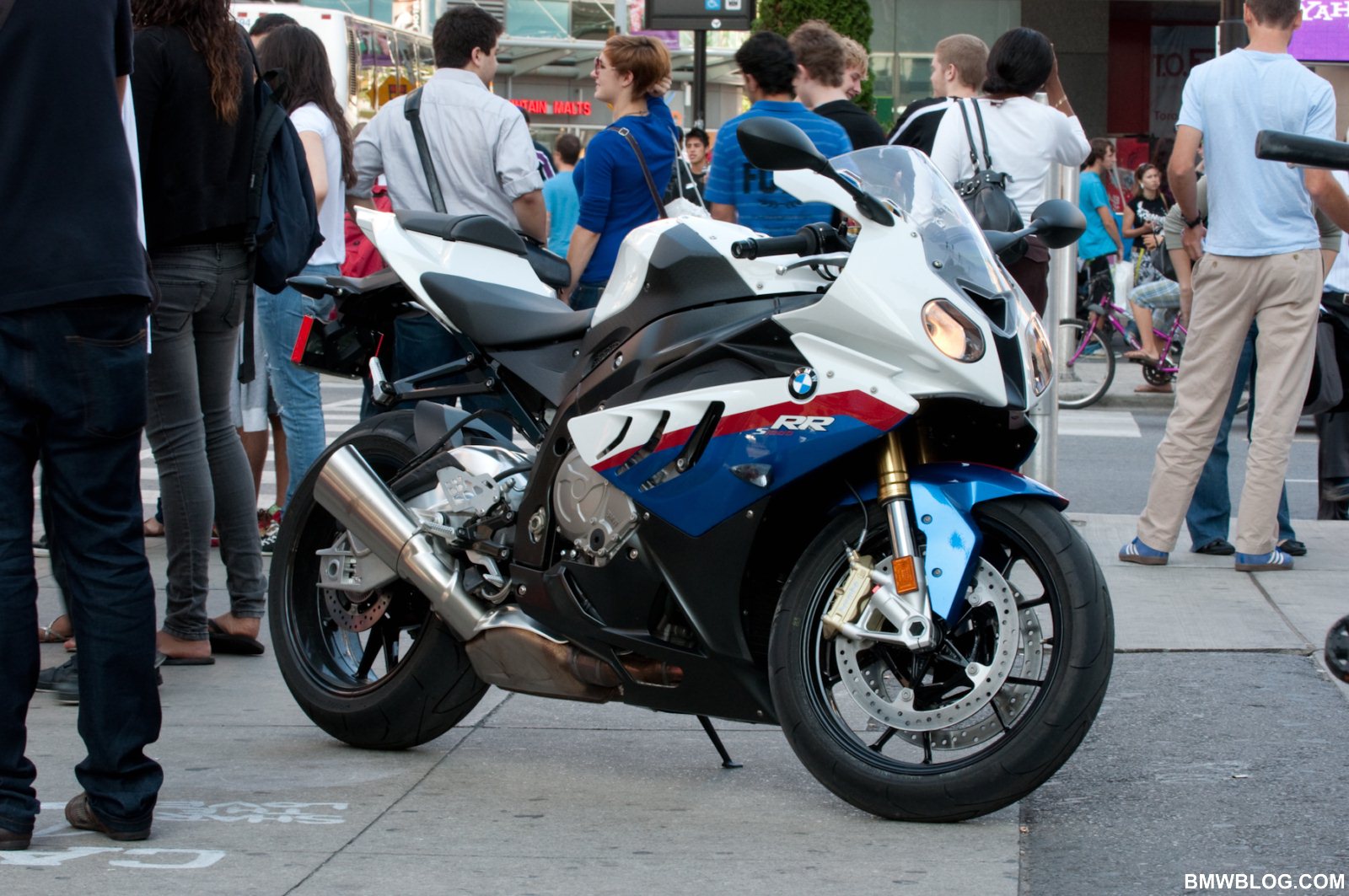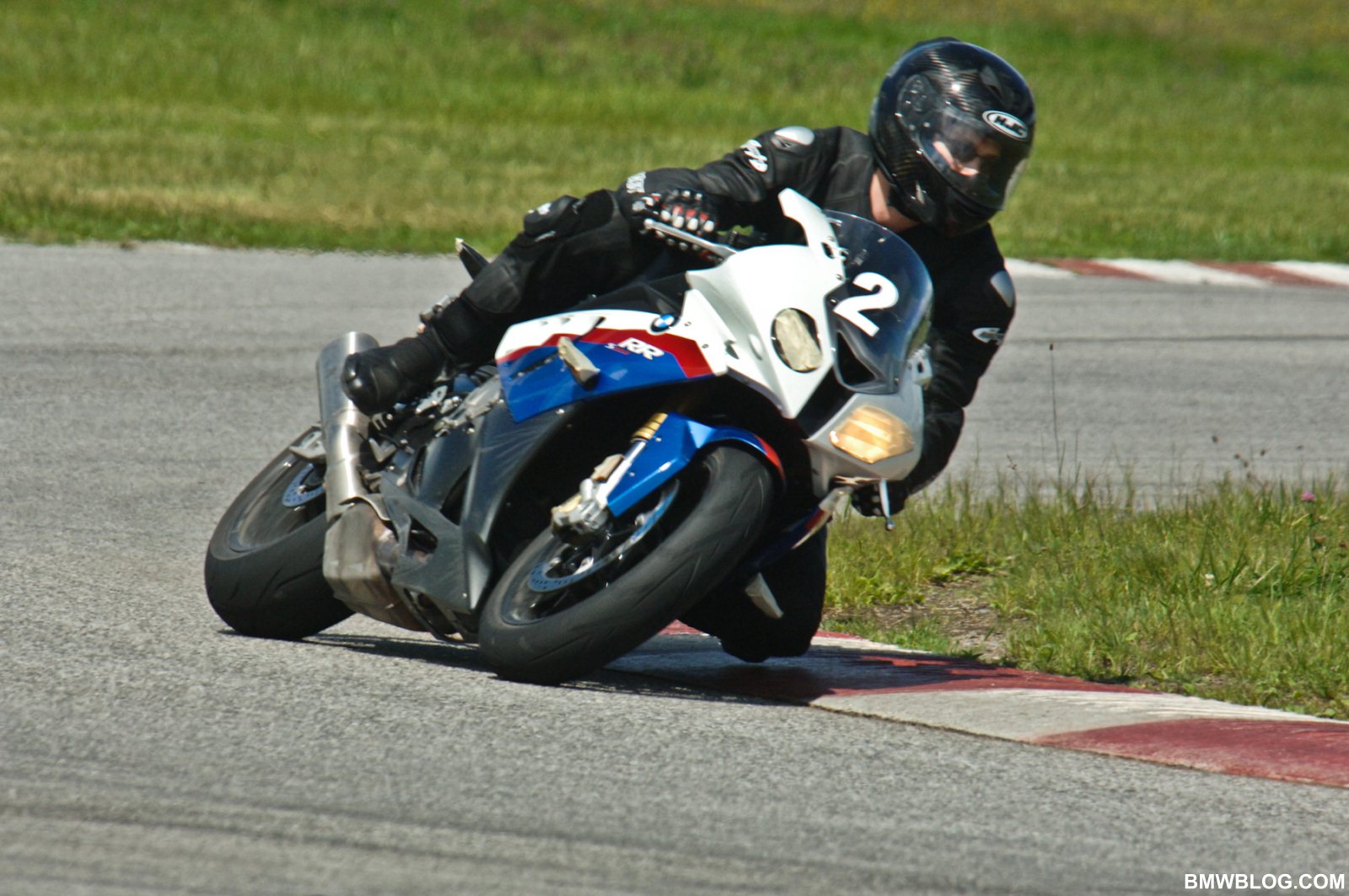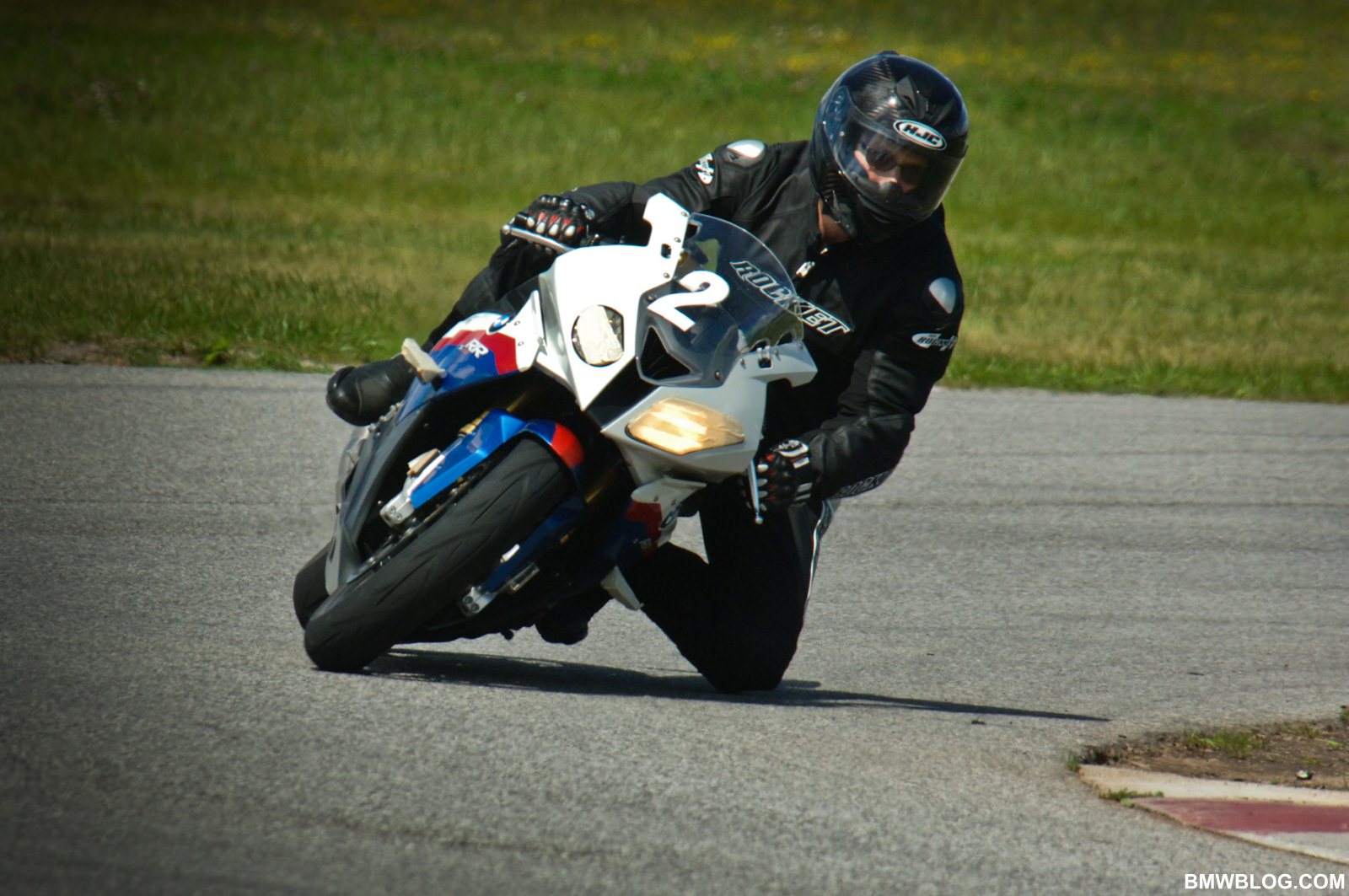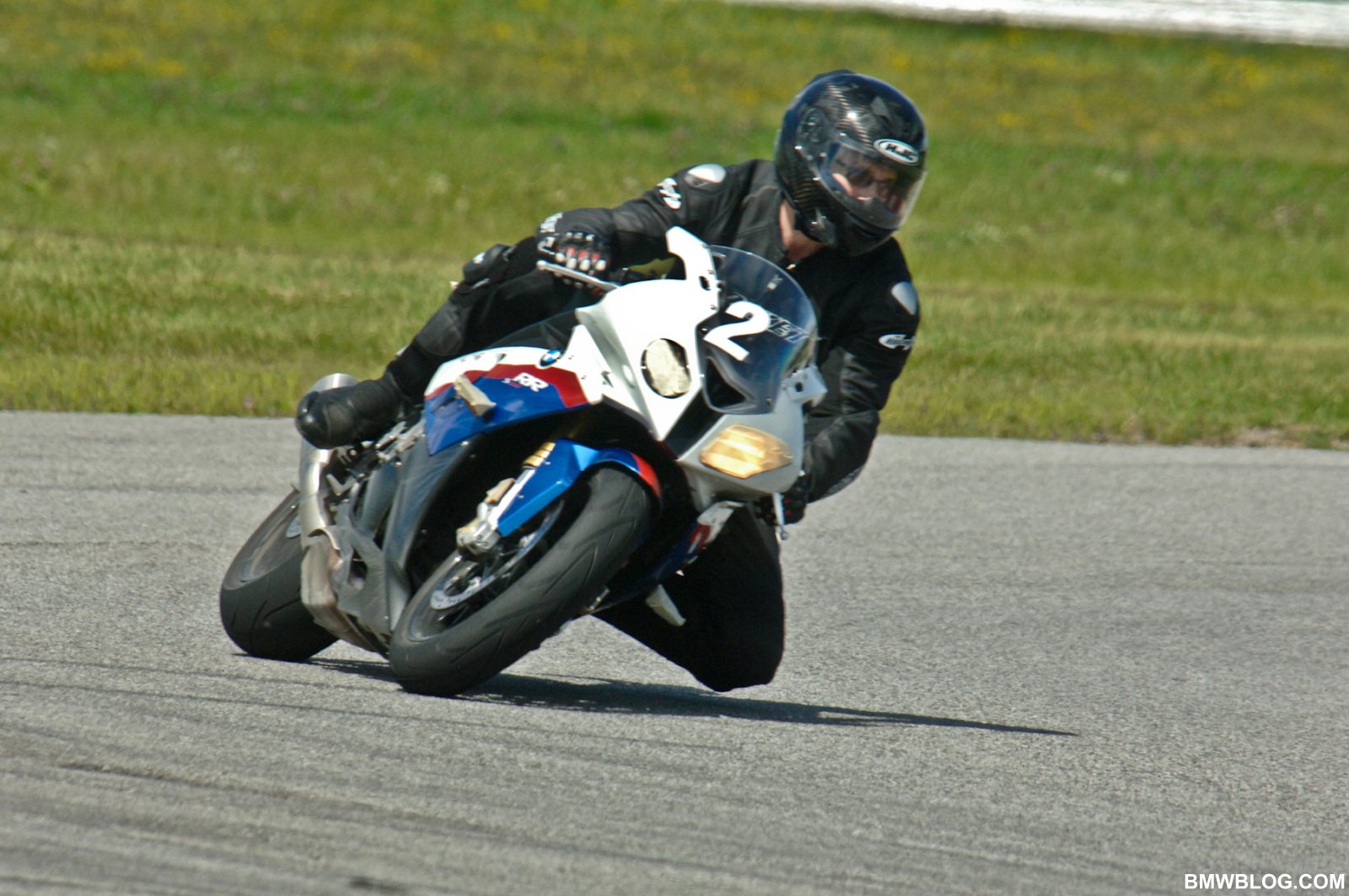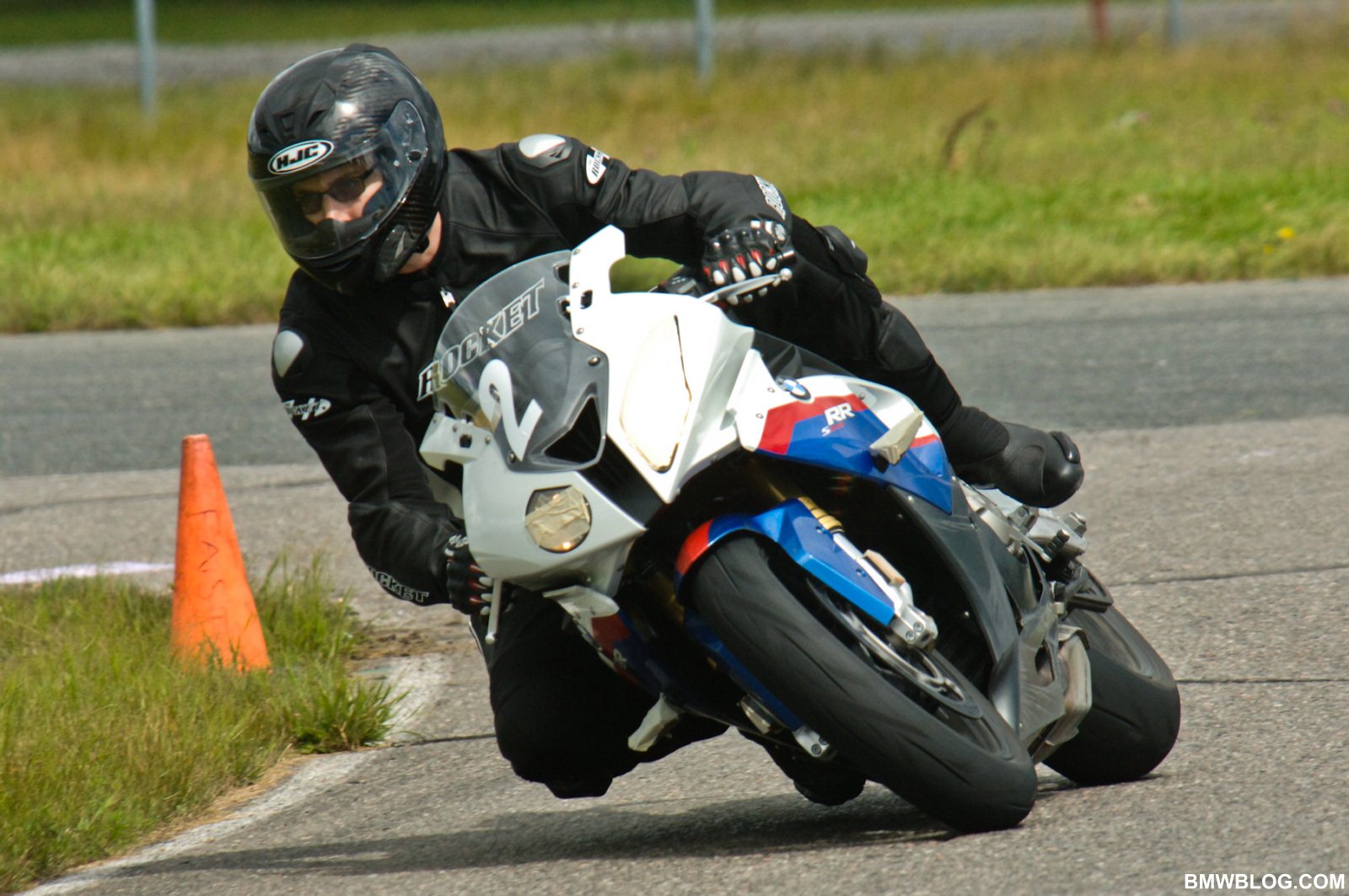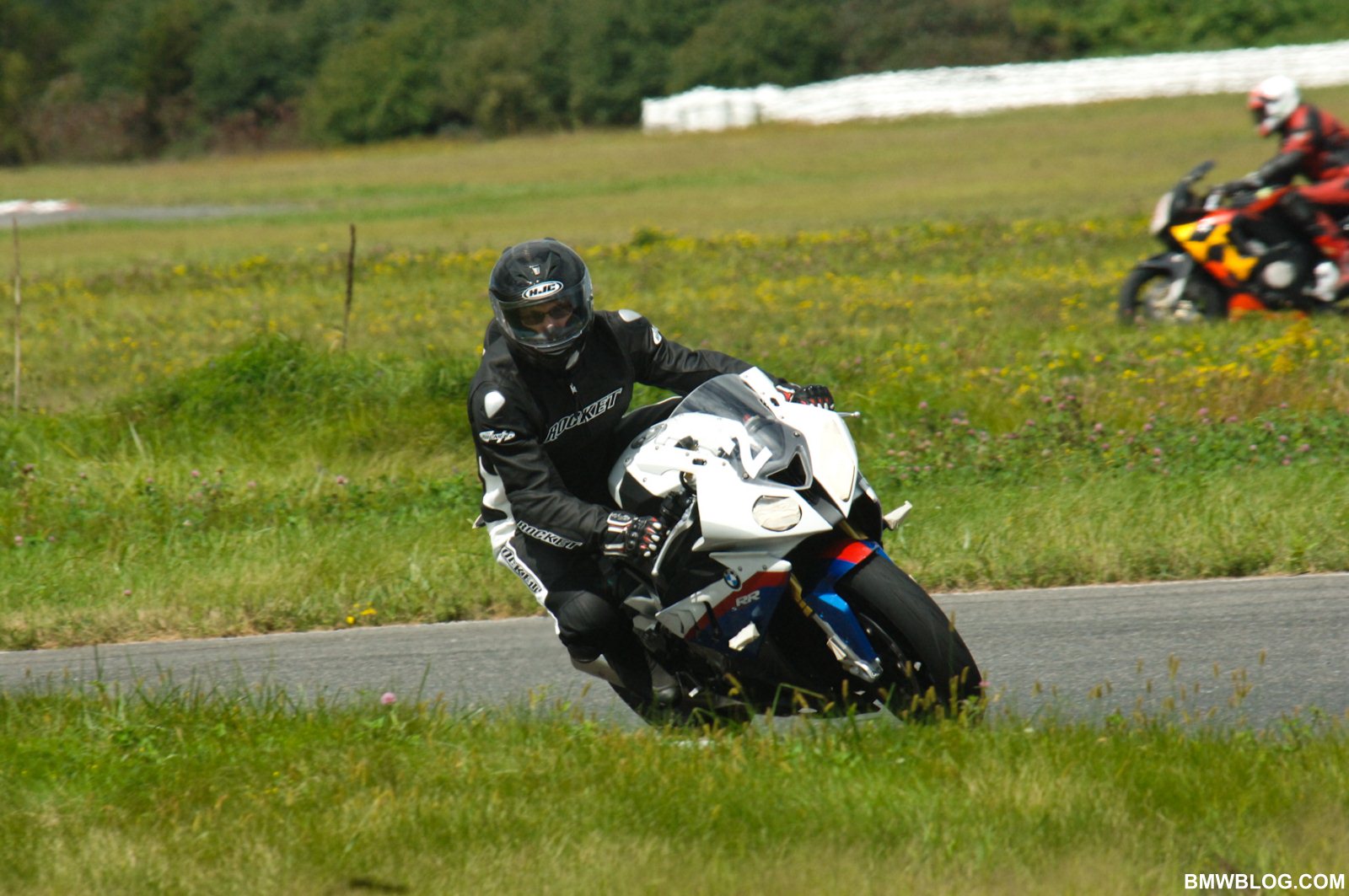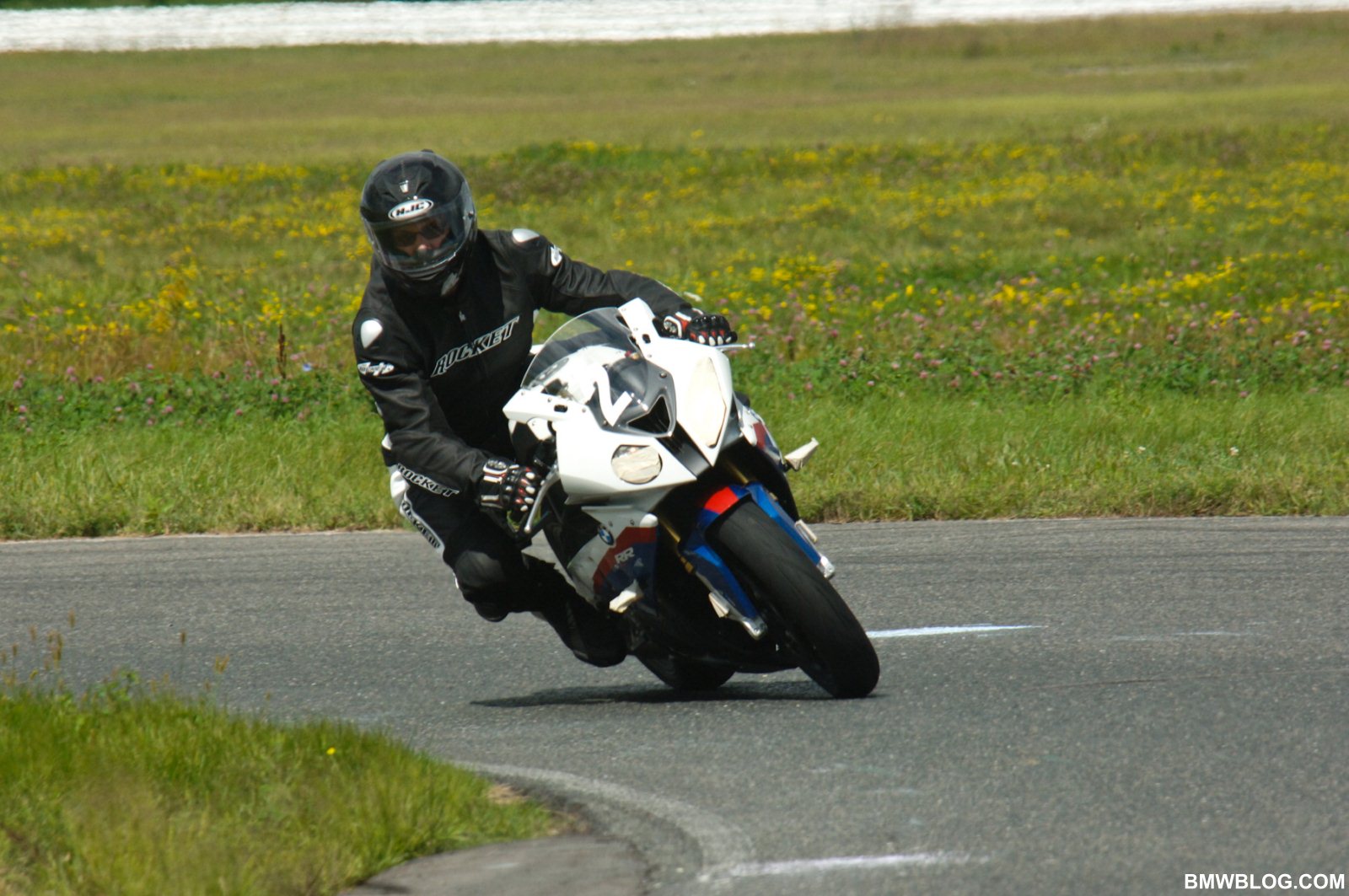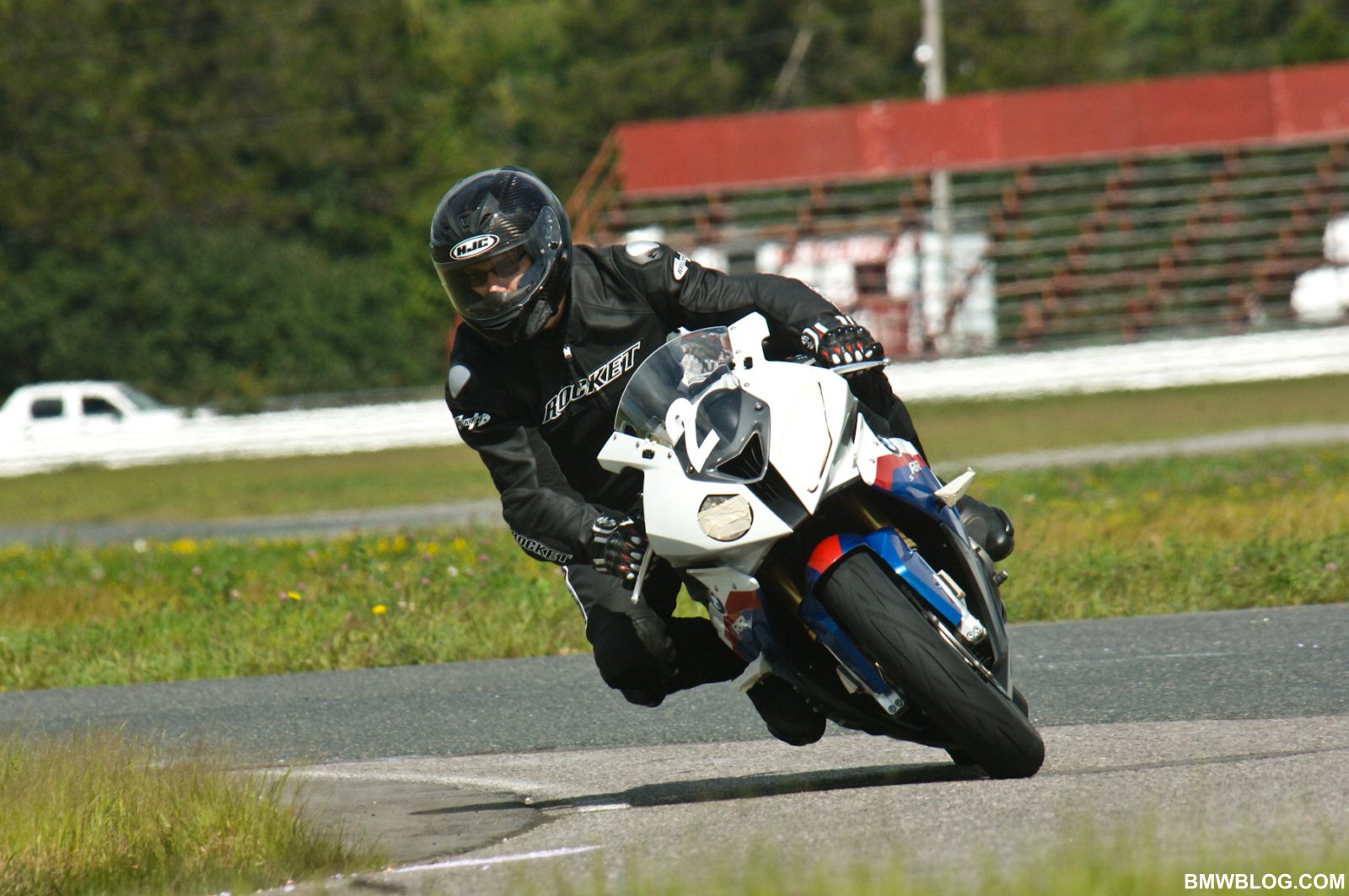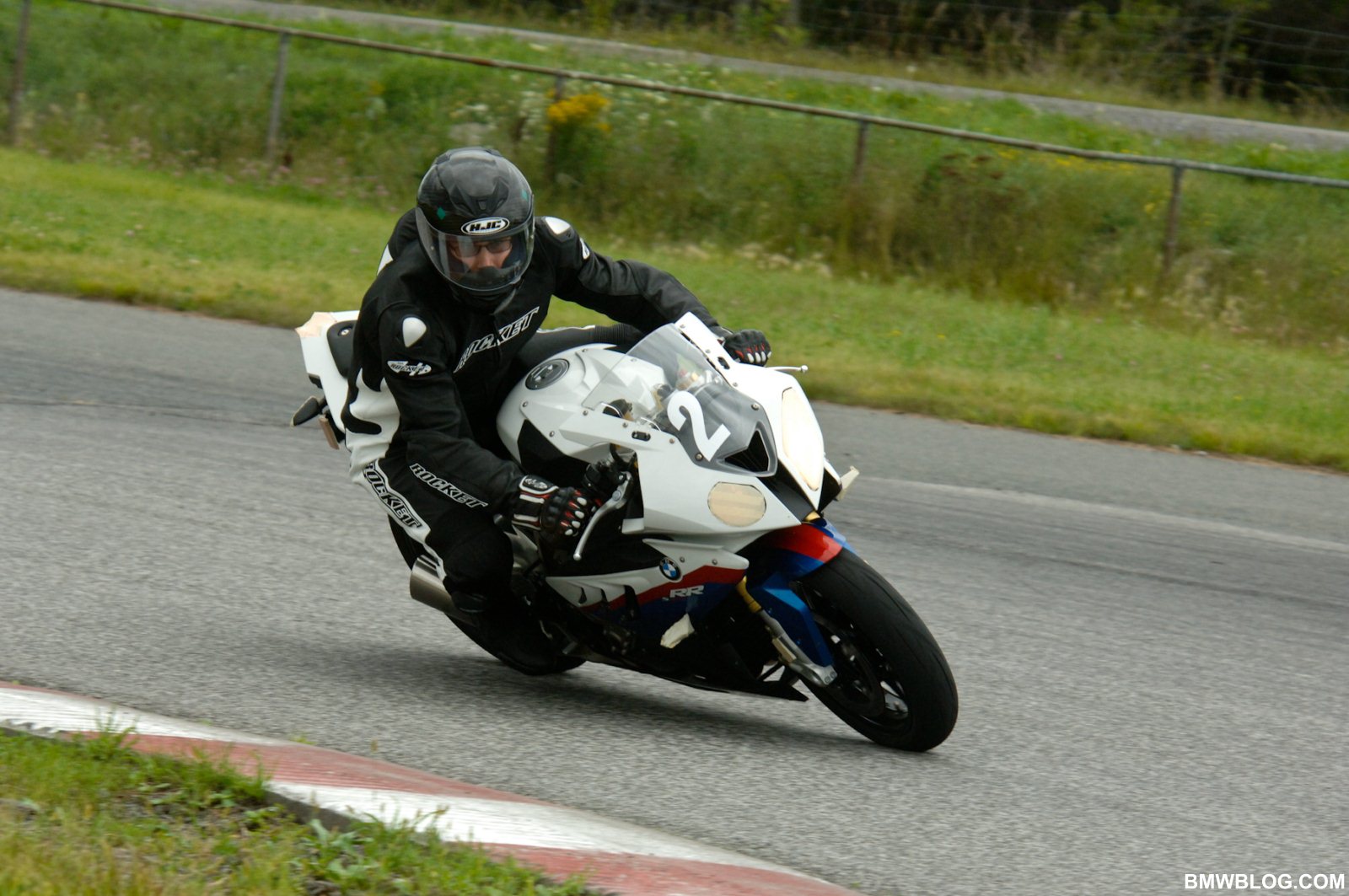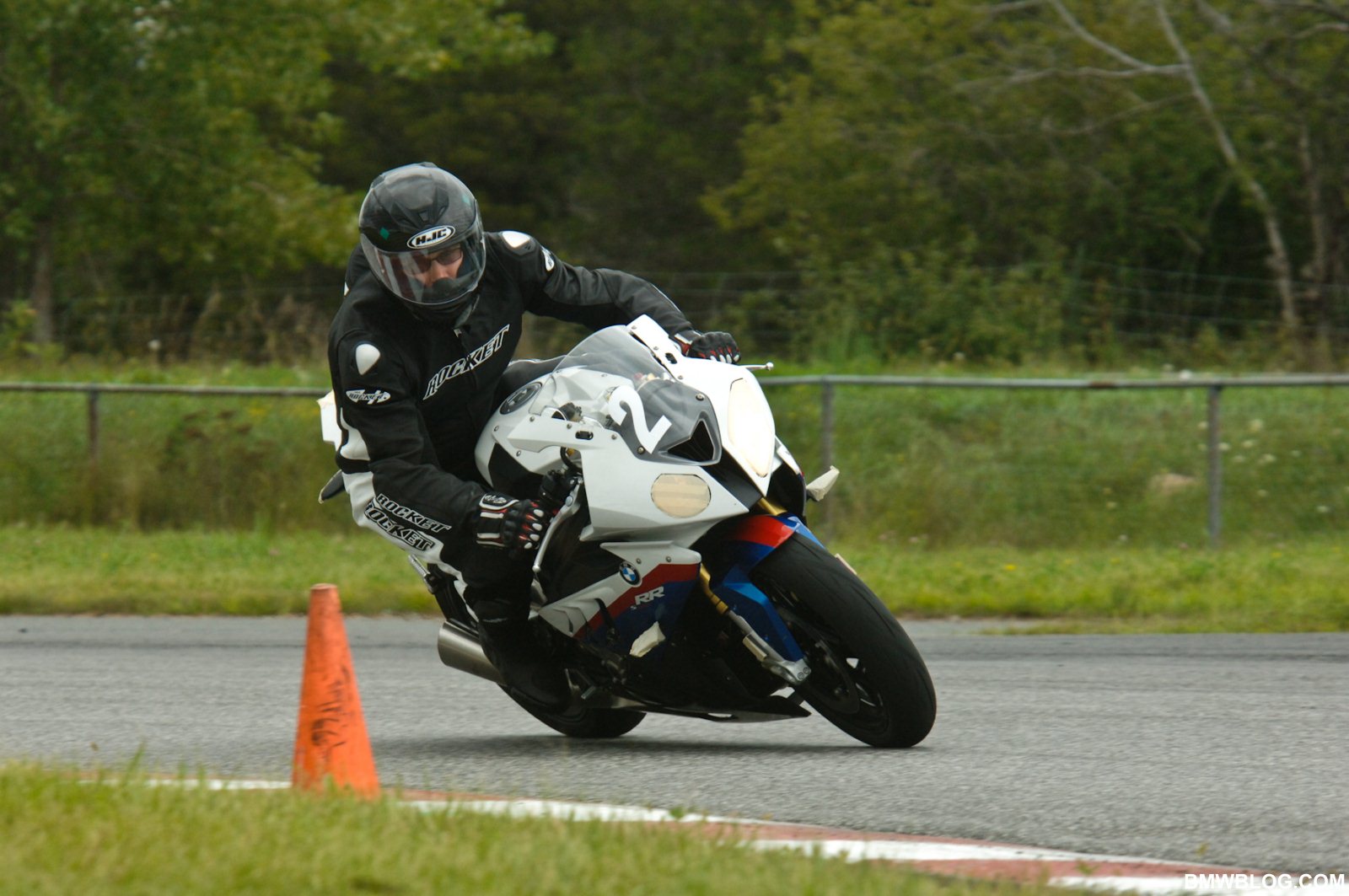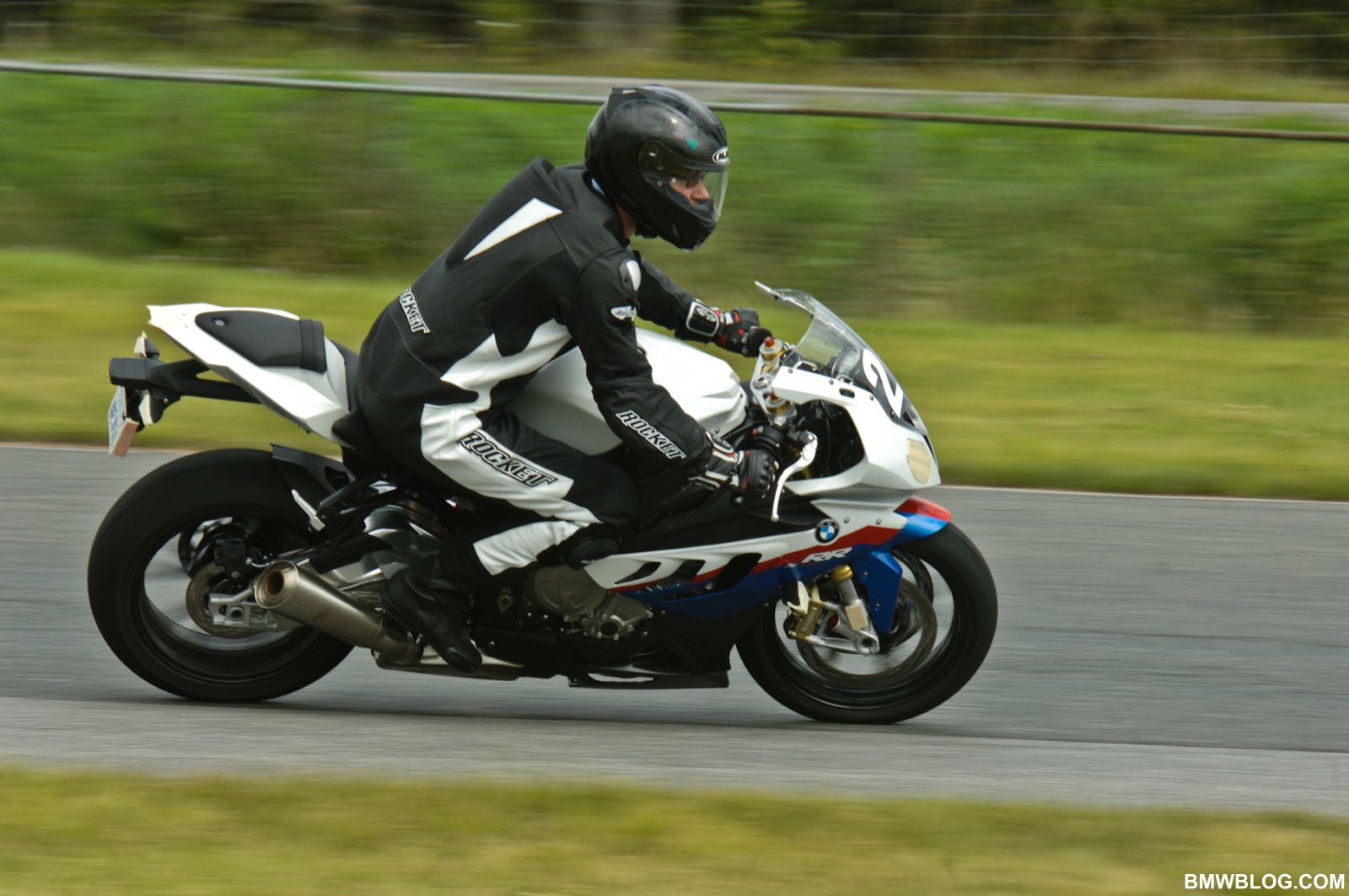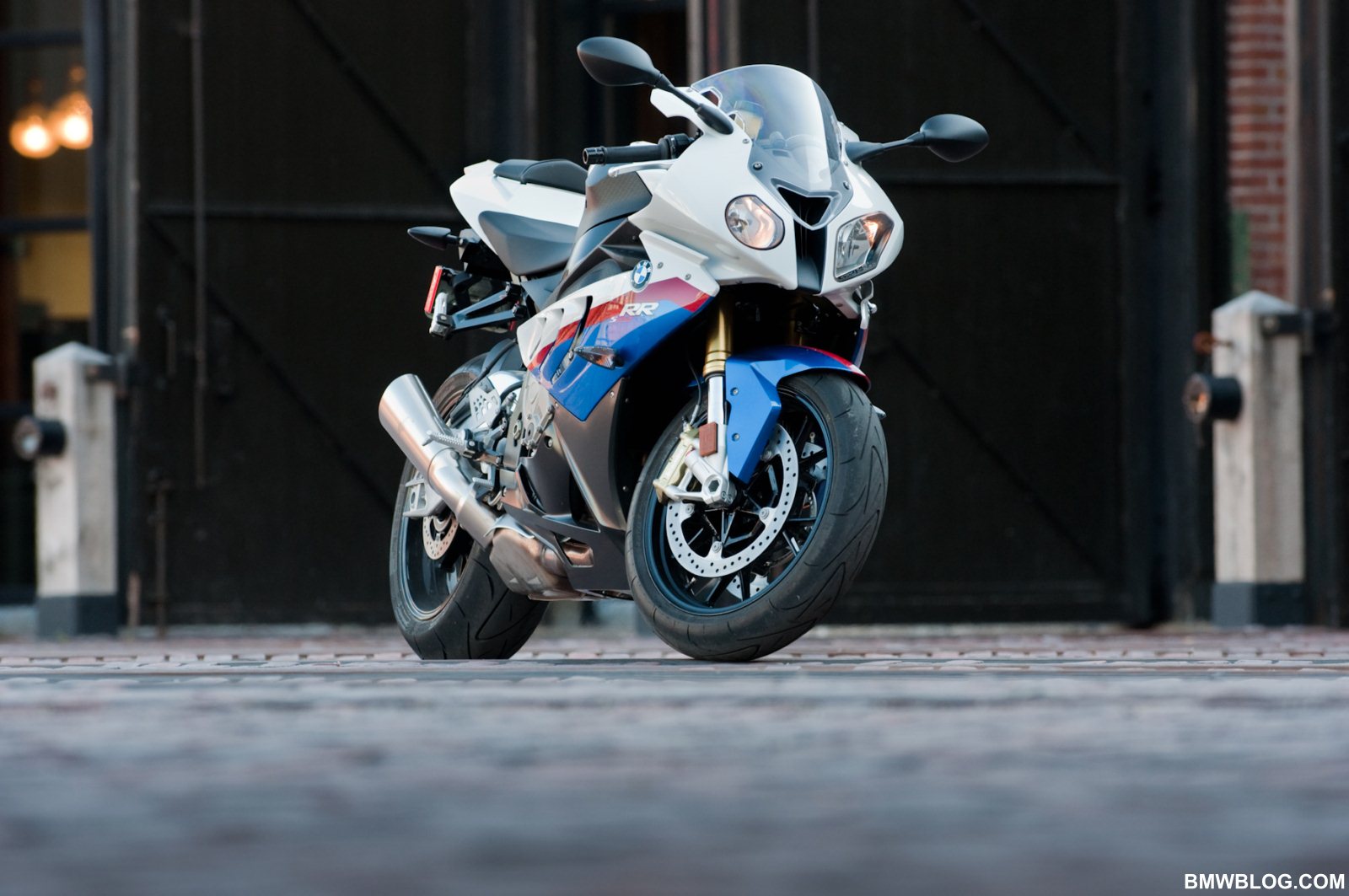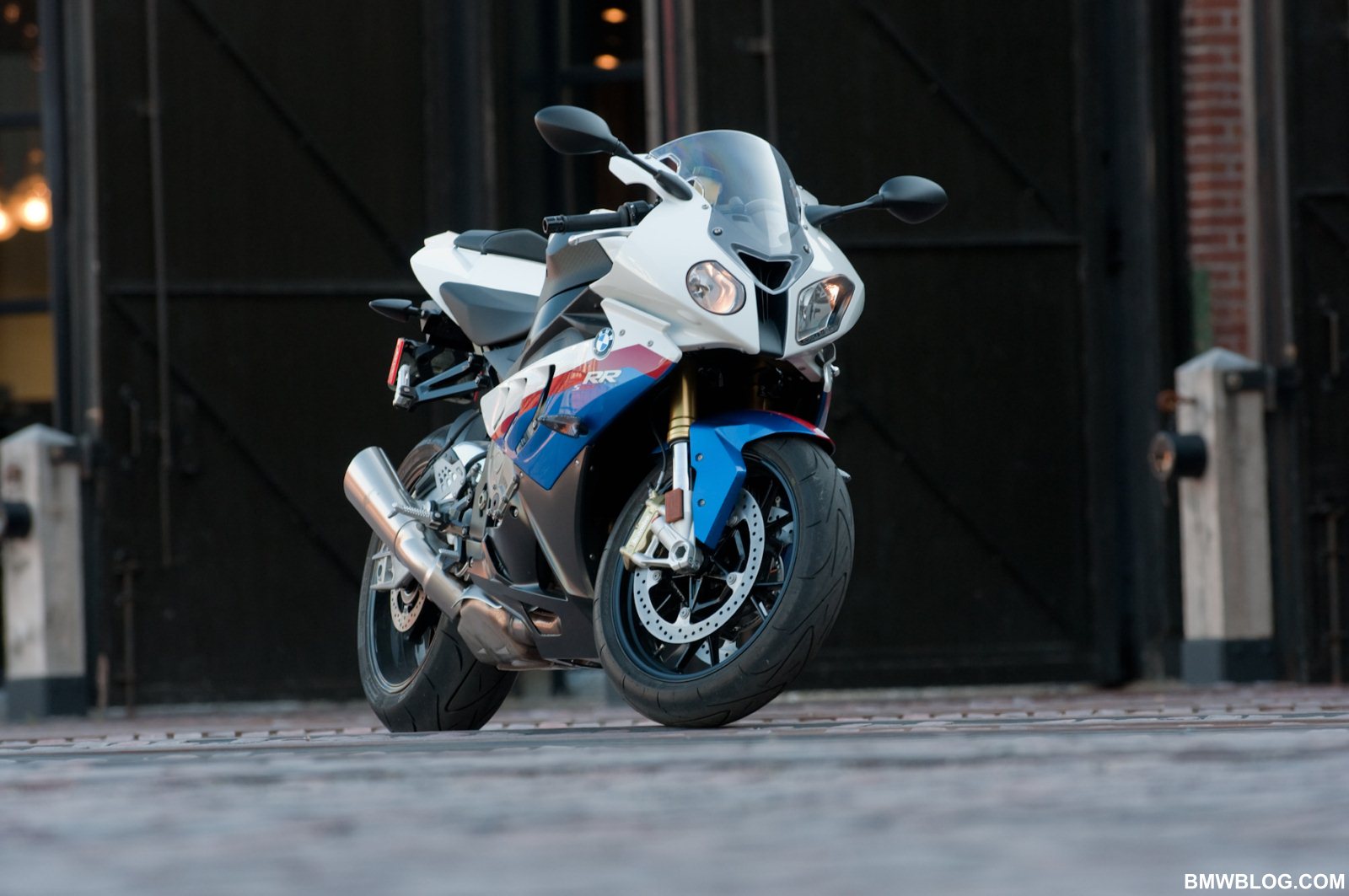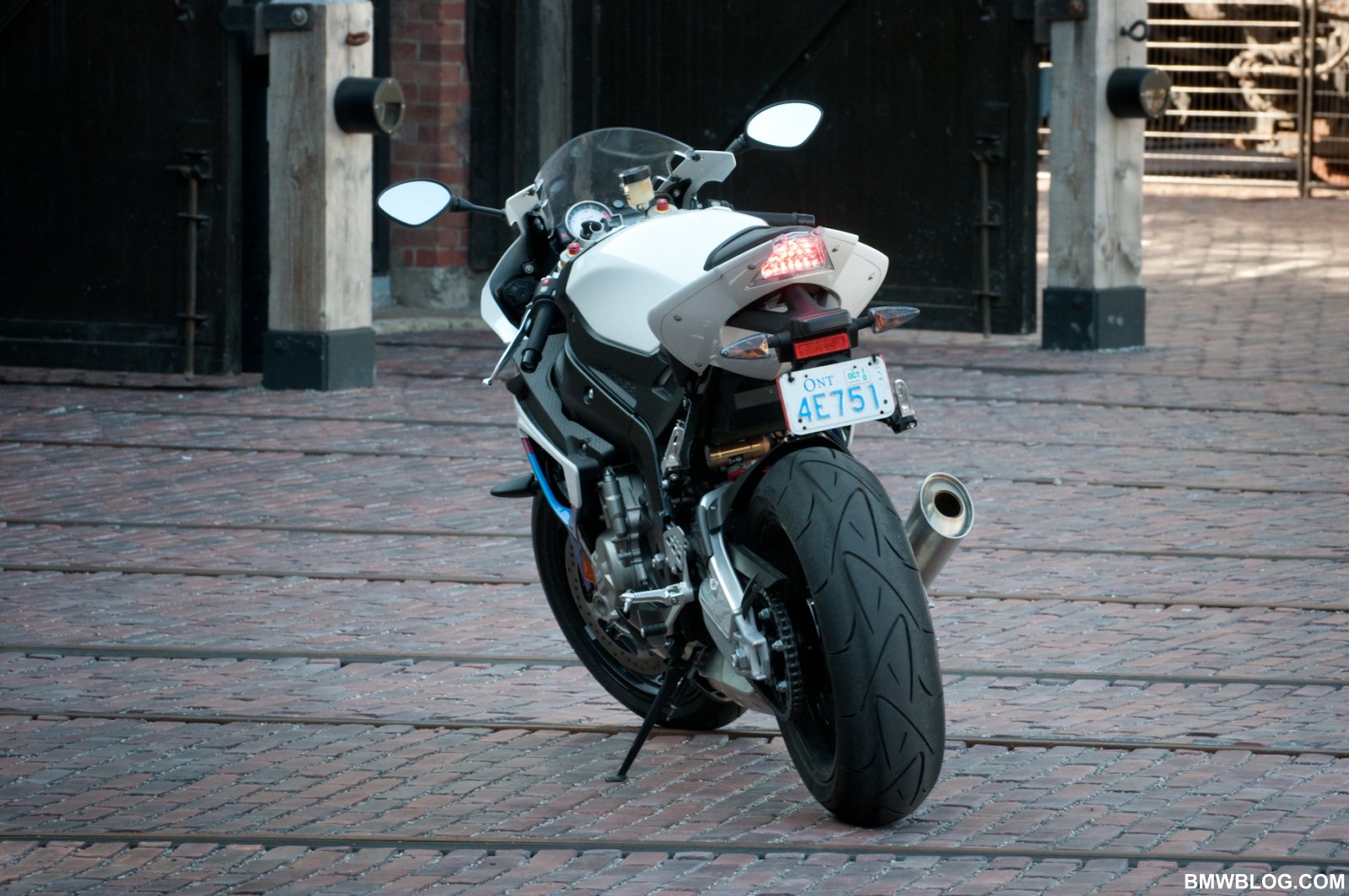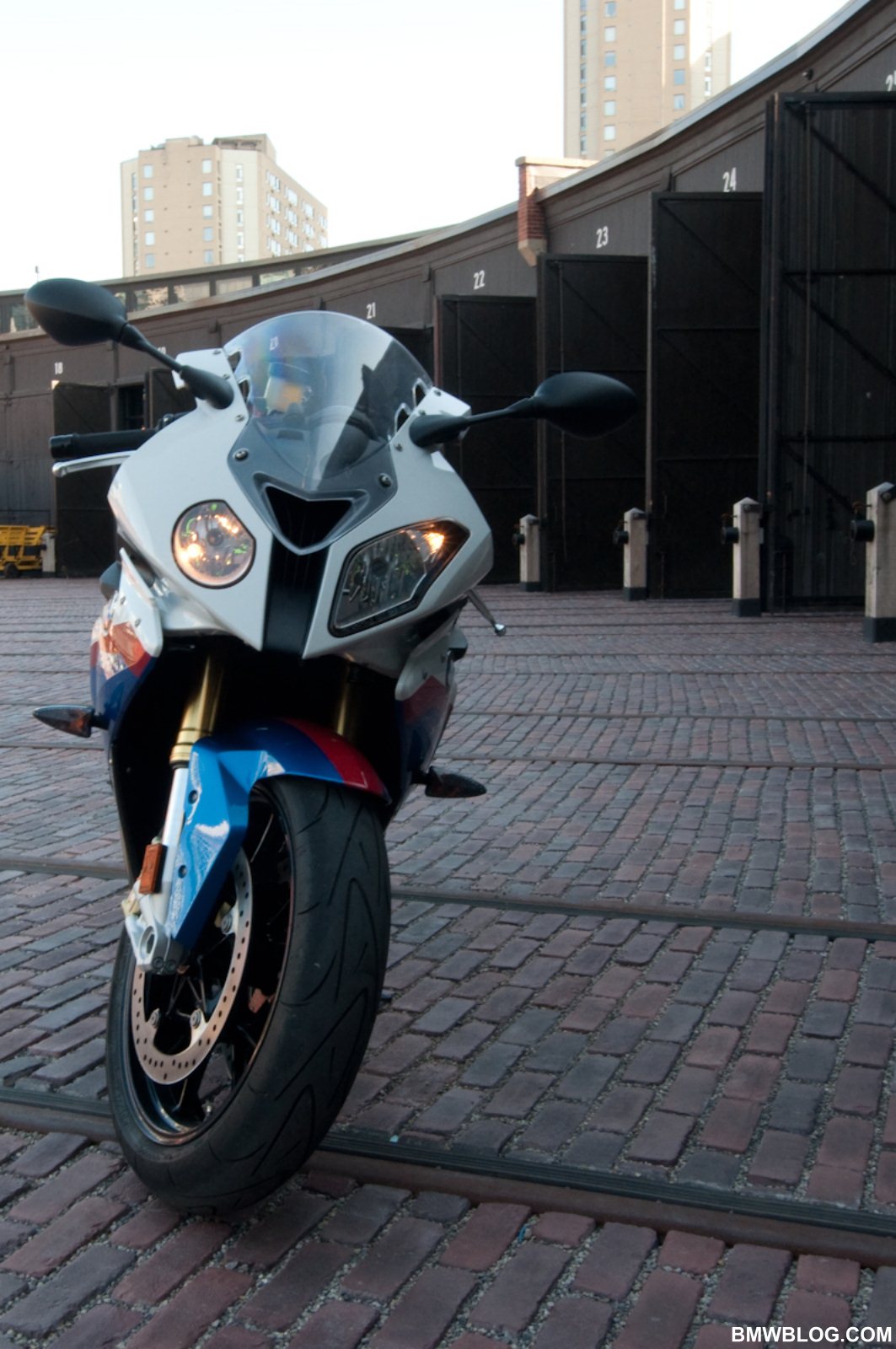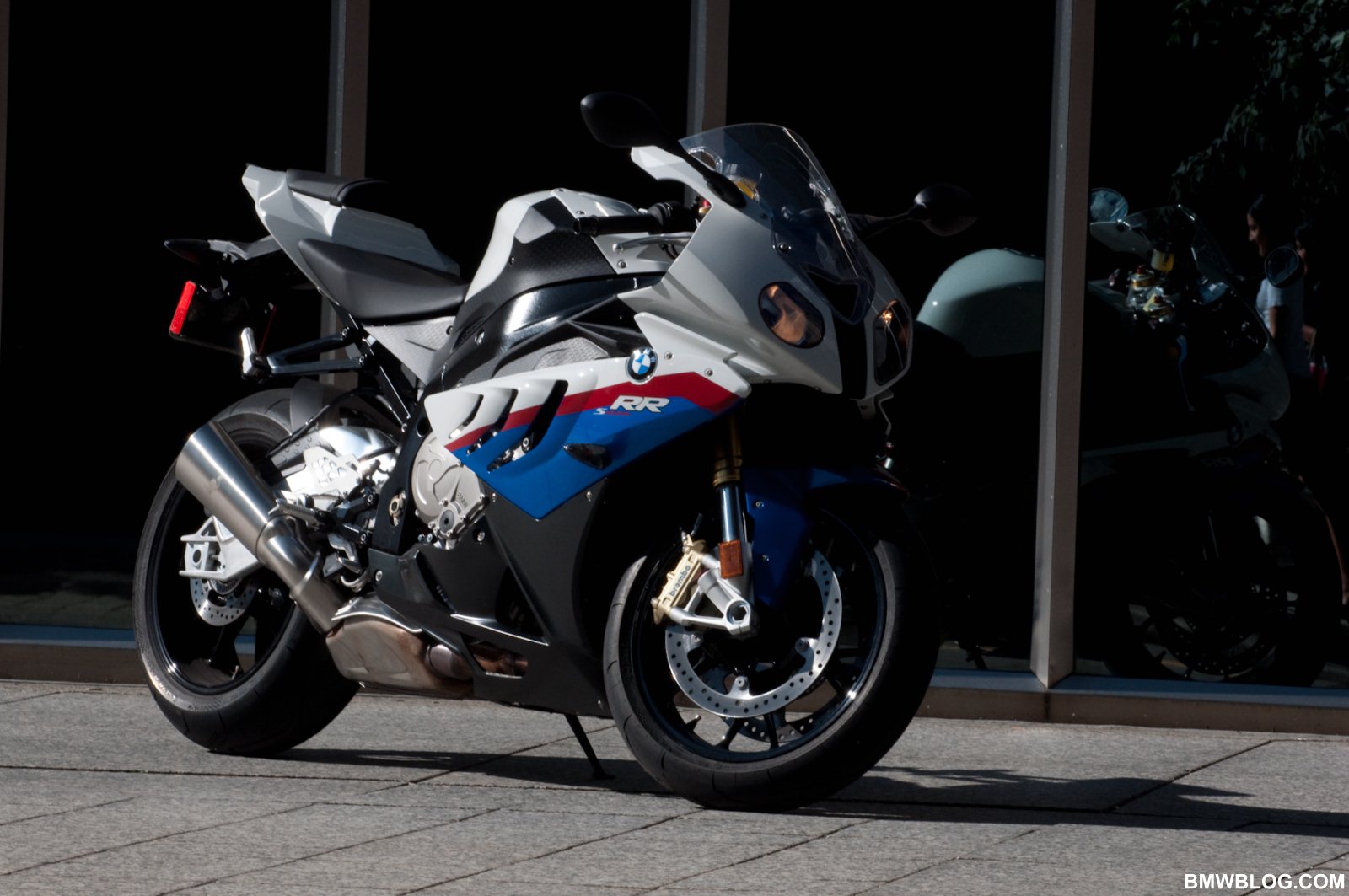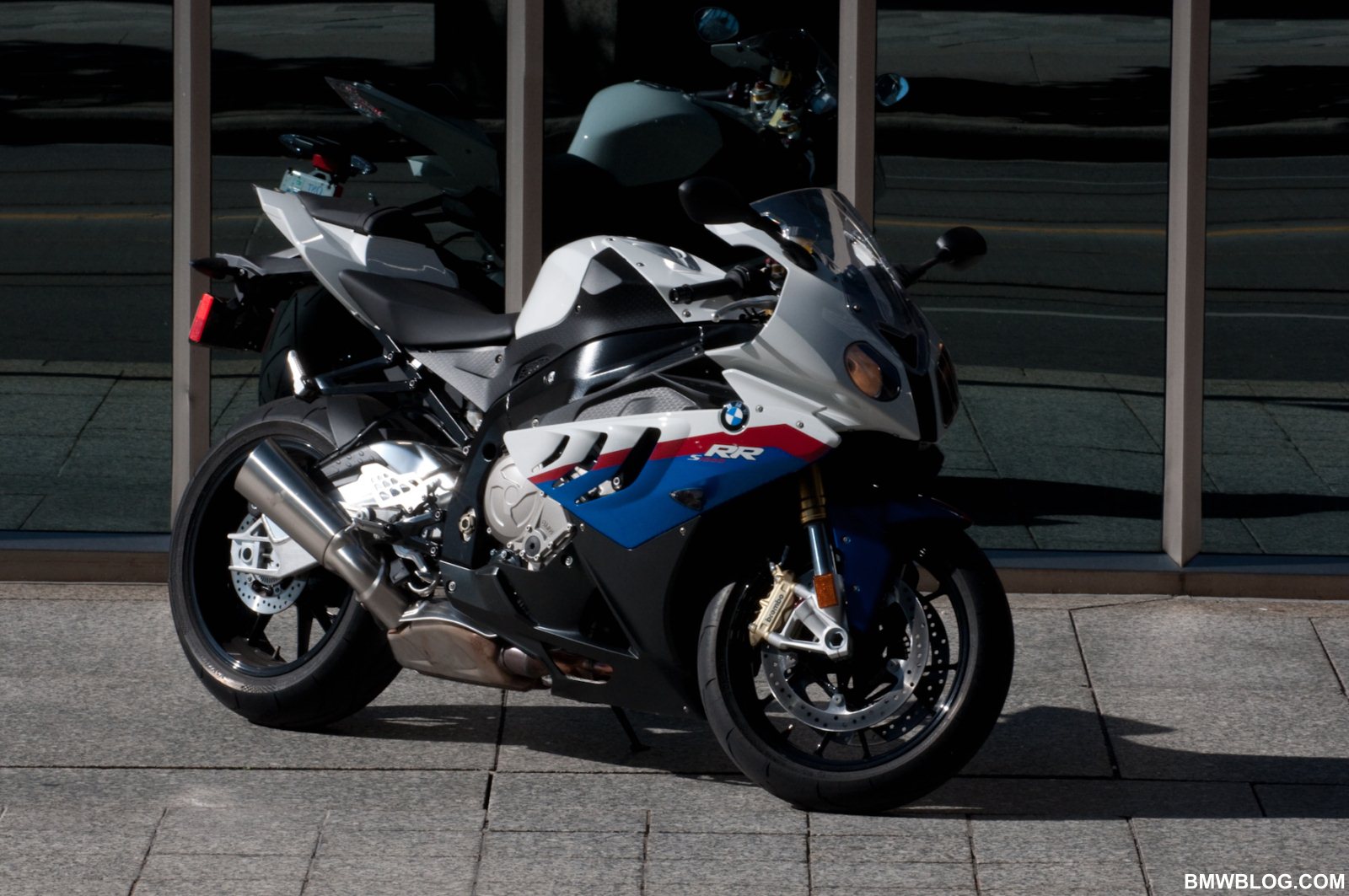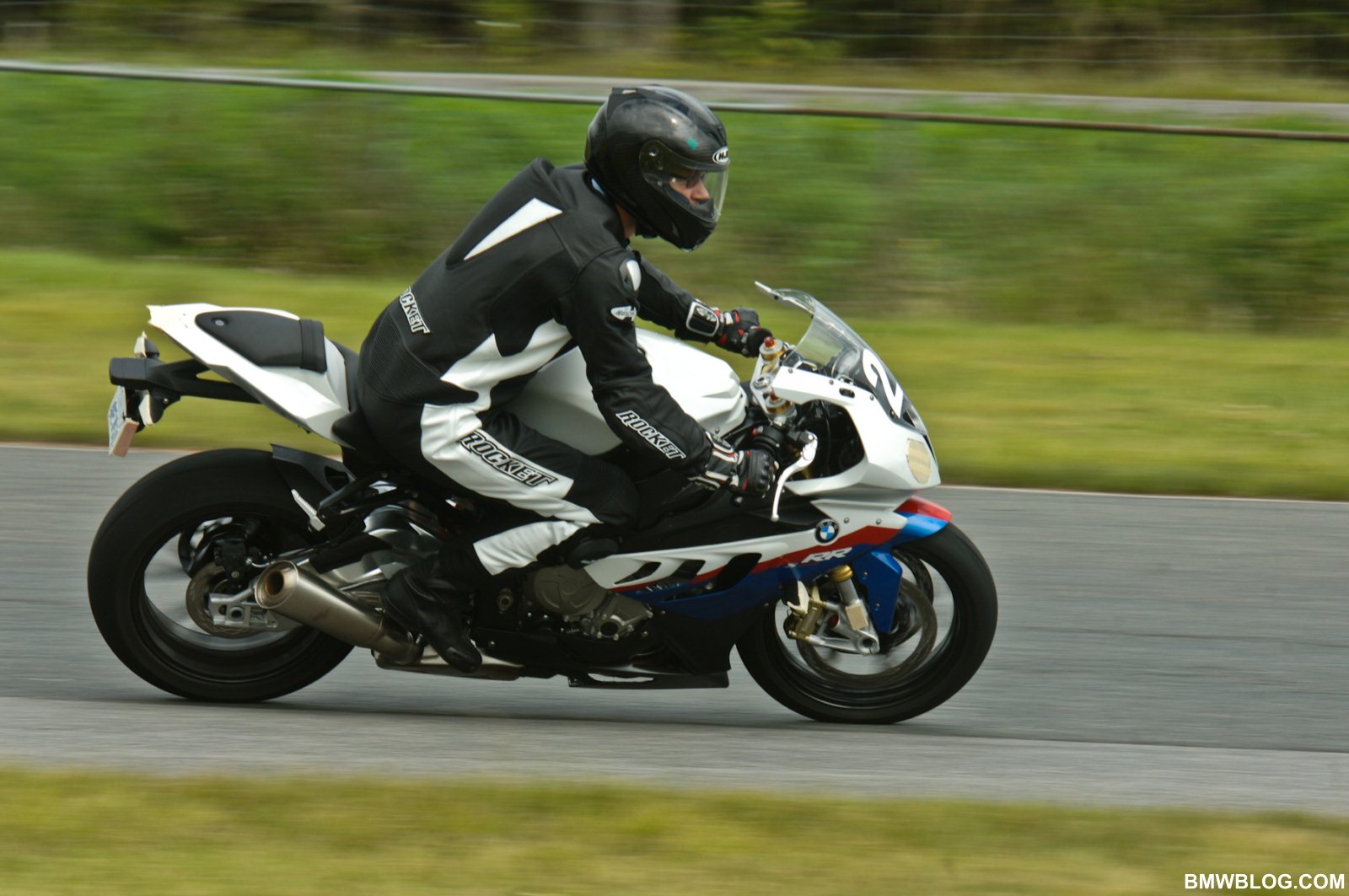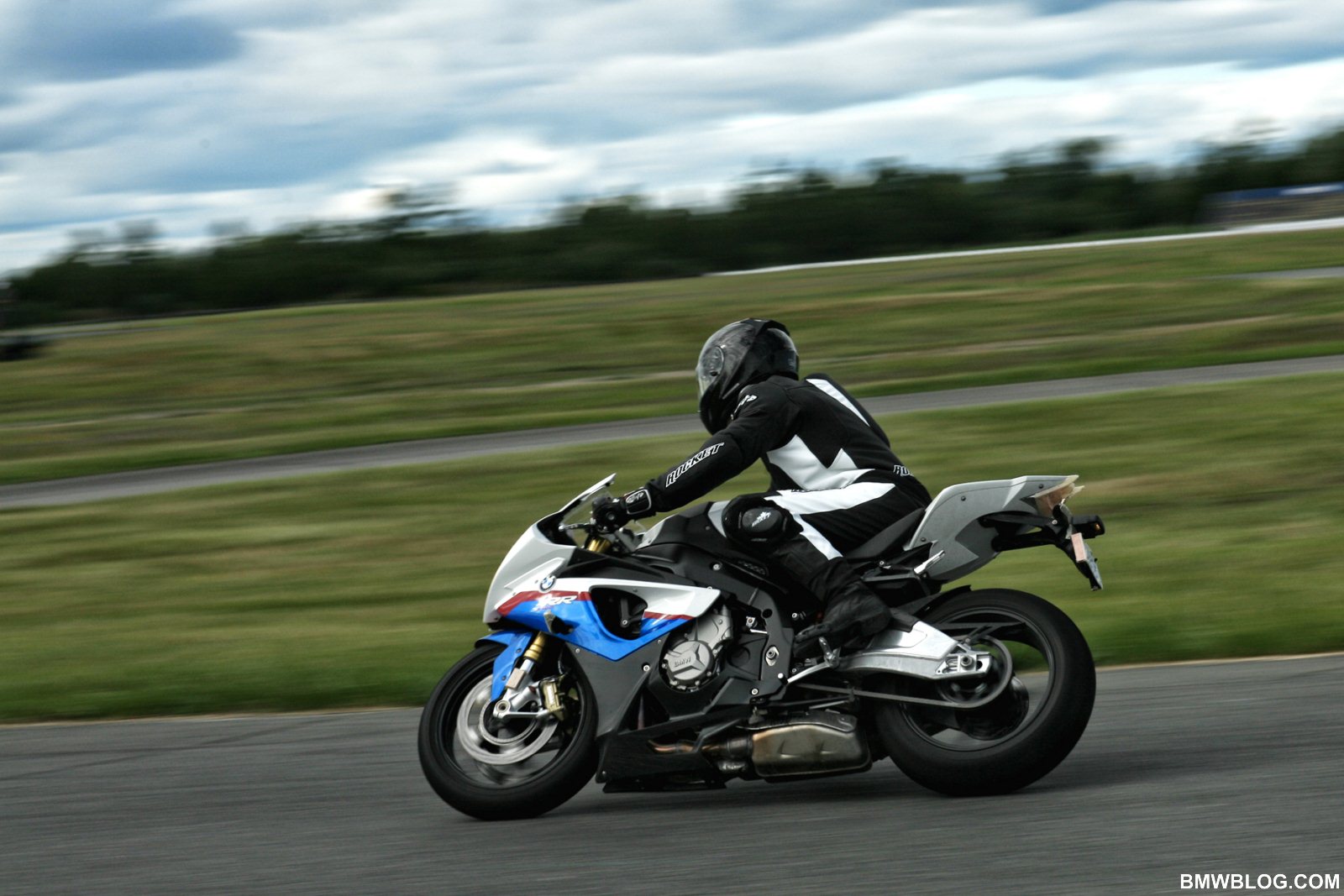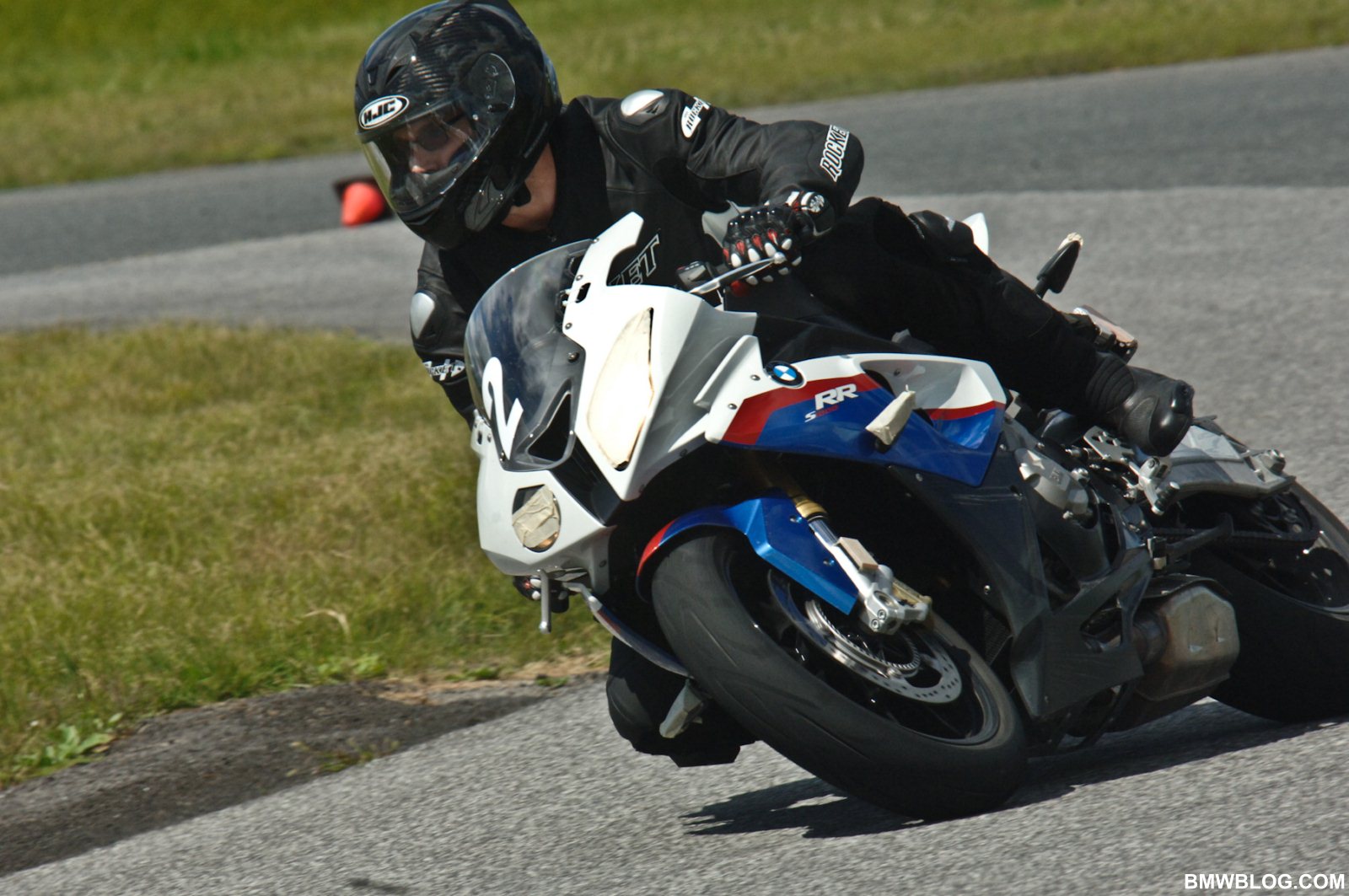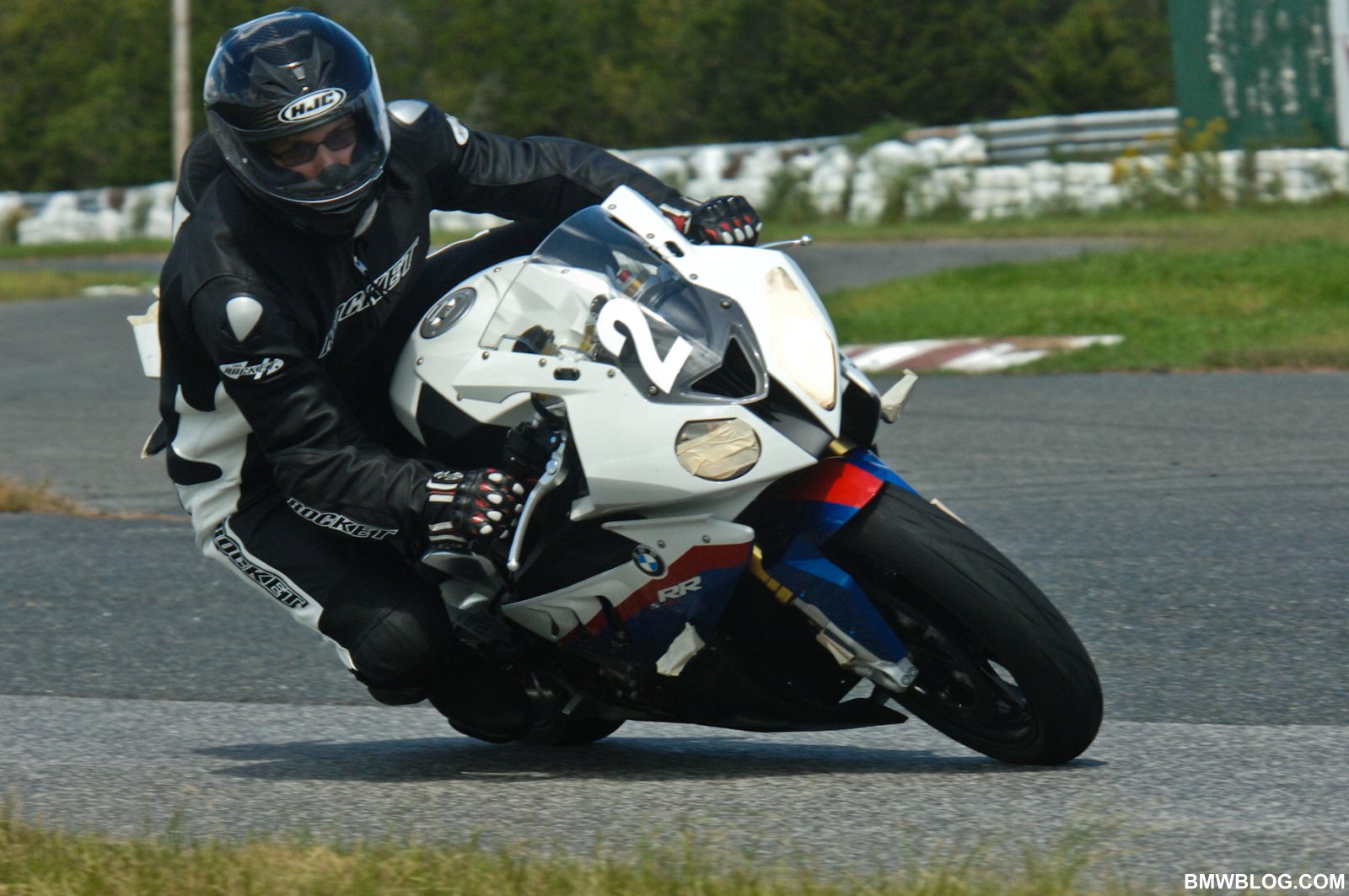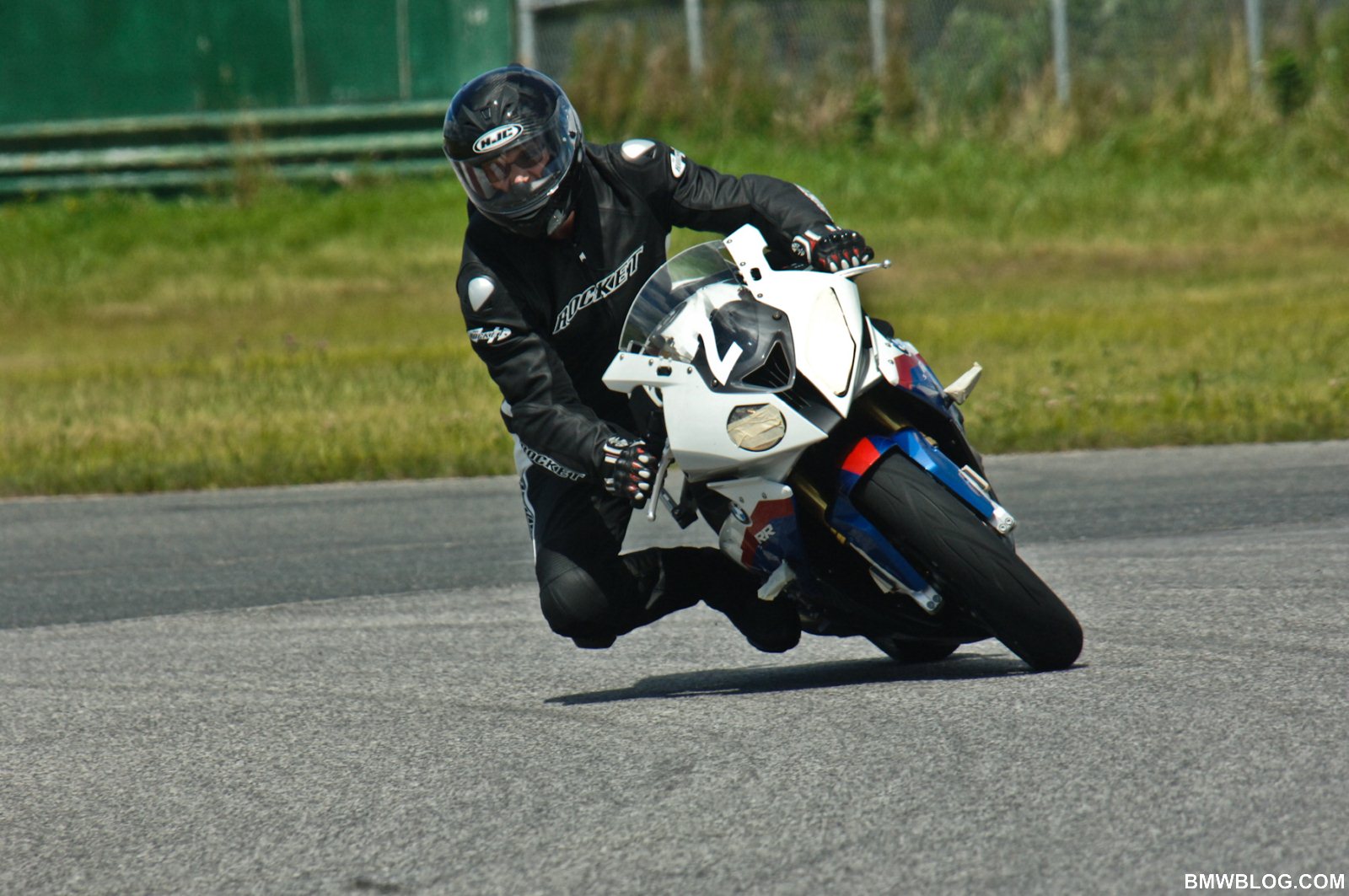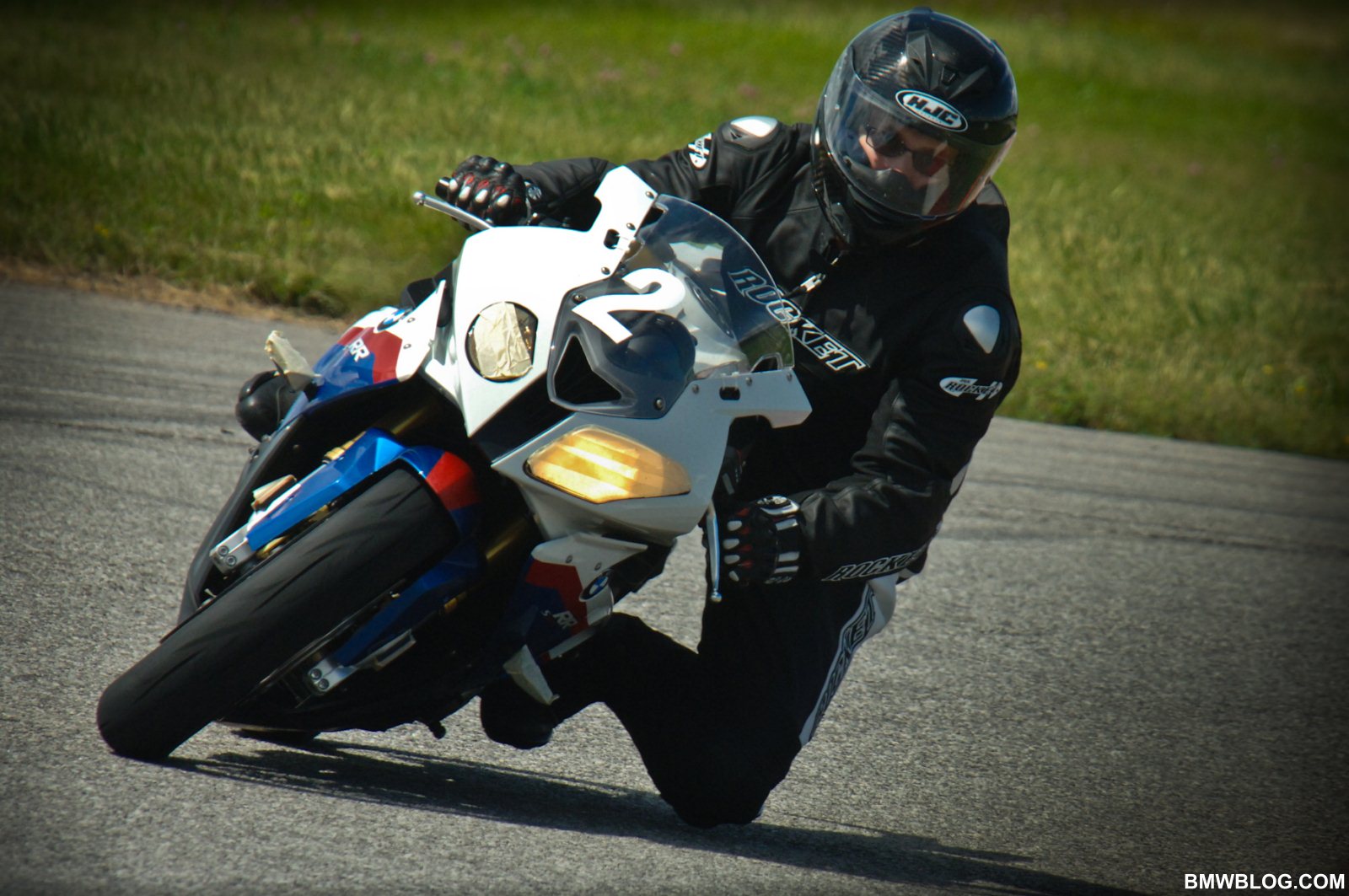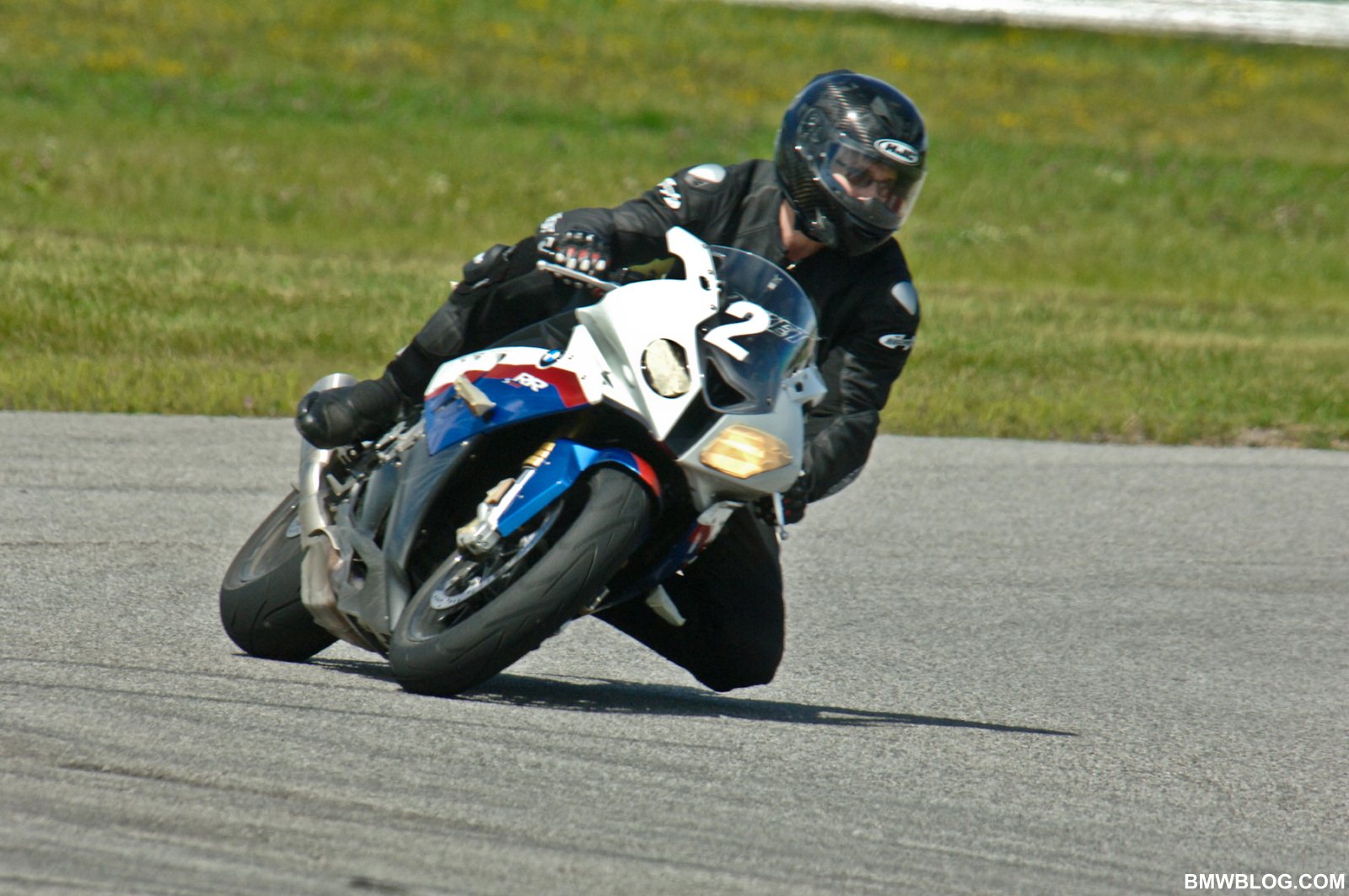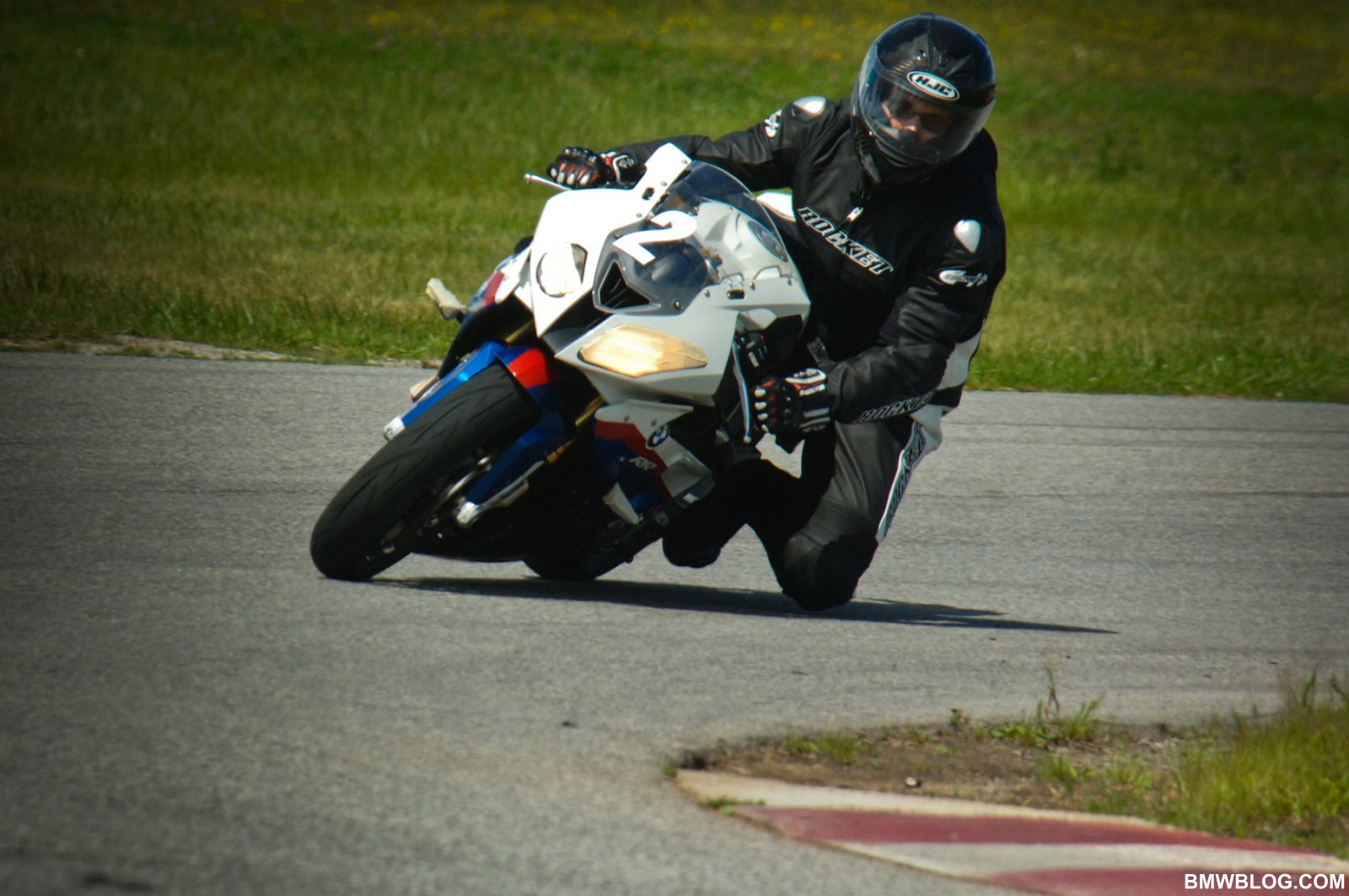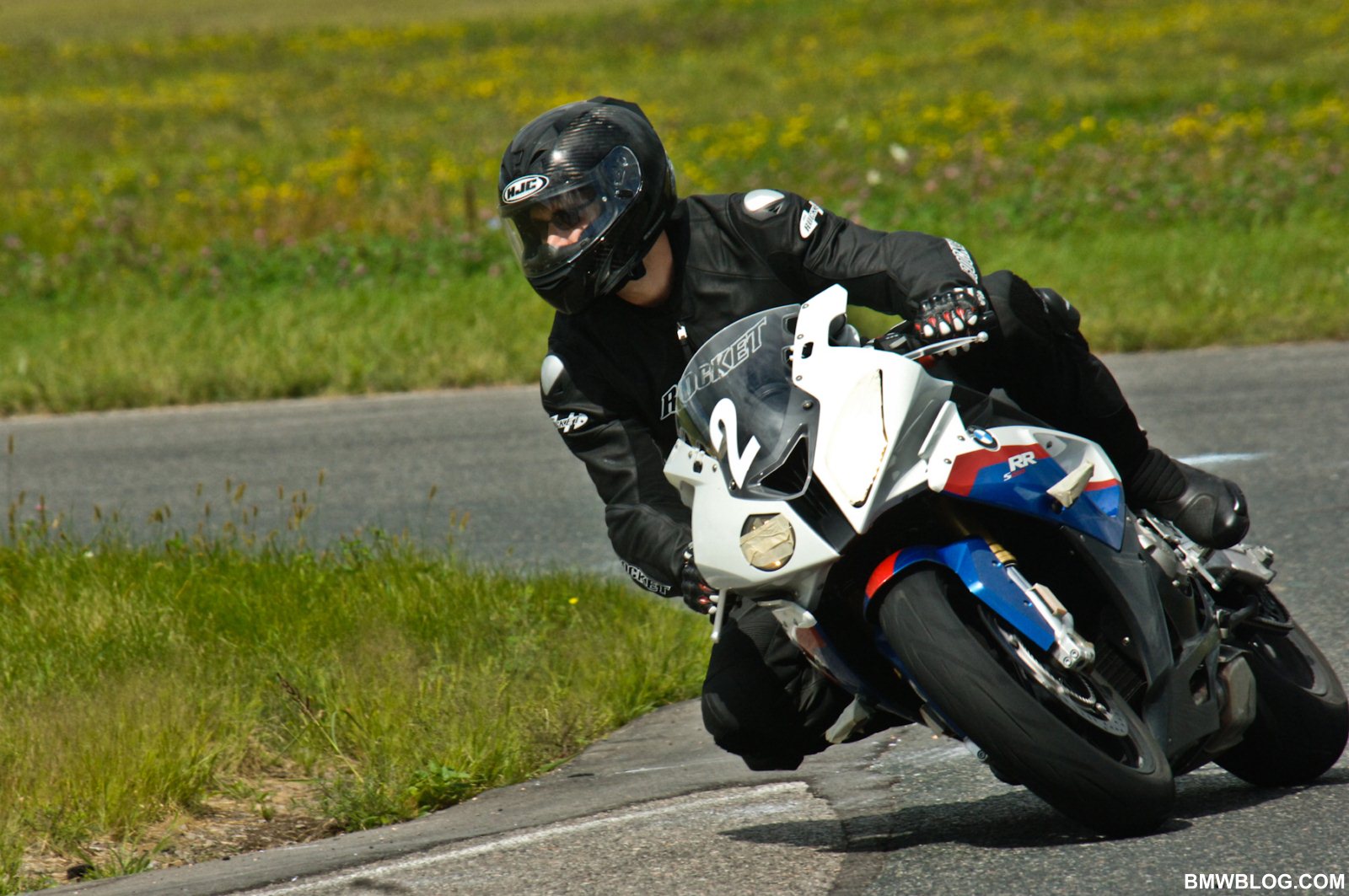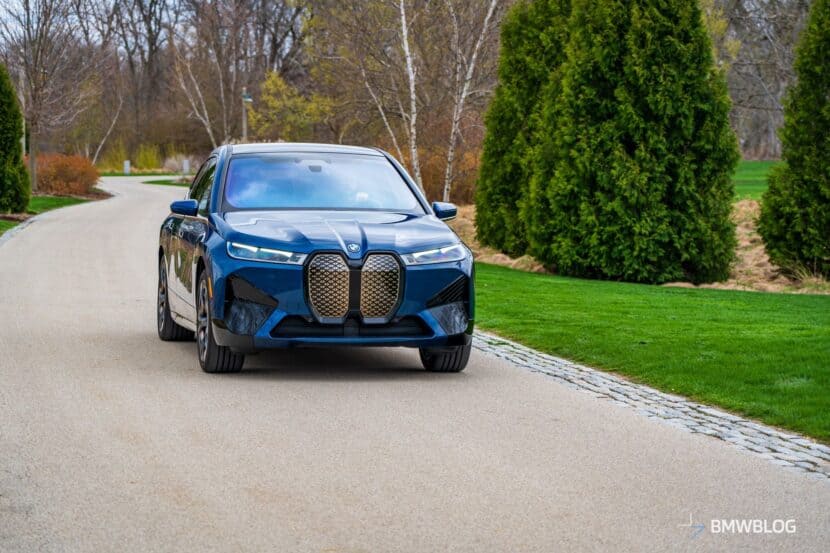Words: Shawn Molnar
Photos: Kevin Luc Photography, Shawn Molnar, Flair Photo
Thump thump… Thump thump… Thump thump..
No, this is not the sound of the engine. This is your heartbeat. It’s fast, around 110 beats per minute. And you haven’t even turned it on yet. You turn the key, hit the starter button. A high pitched shrill rings out followed by a baritone hum. It’s already music to your ears. Don’t you dare touch that throttle: the engine is still cold. A few minutes pass and you can give it a blip. It’s electric, the engine spinning up like nothing else this side of a Formula 1 power plant. Thump Thump Thump Thump Thump Thump… It’s time to throw your leg over. This is the S1000RR, the fastest, most powerful production motorcycle in the world.
BMWBLOG spent one short lived but glorious week with BMW’s new superbike. In the following article we’ll take you to the racetrack, through busy downtown streets, along open highways and straight up to redline. We advise you wear your helmet for this one, it gets pretty wild. Fasten the strap and read on.
The Daily Commute:
It’s unfortunate but true: most of your time atop this BMW will be spent around town on your daily commute. Conservative speed limits and stern faced police men (along with your own good judgment) will prevent you from unleashing even a fraction of this bike’s performance. It’s better this way, there are too many variables beyond your control. Too many oblivious pedestrians, slumbering drivers and wayward taxis. Just exercise the type of restraint that keeps you happily married and out of jail.
You know, riding with restraint offers its own gratifying experience. It’s kind of like hypermiling. It’s not nearly as much fun as thrashing it, but then you’re quite contented by your self-control and superior fuel mileage. Well, you get the idea. Just the knowledge of vast power reserves under your wrist will put a smile under your helmet and give you an air of proud confidence in your machine.
When I first mounted the S1000RR, I had just spent a week with BMW’s R1200RT touring machine. Obviously this track day demon feels a little different. By virtue of weight distribution over the front wheel, you have to assume the position – forward tucked with weight on your wrists. But this is no Ducati, no GSX-R for that matter; and I intend this as a compliment. While you can still move around on the bike as needed for sport riding, you can also ride relatively upright in a comfortable position. All day. The S1000RR’s seating position strikes a great balance between comfort and all-out sport; within the superbike segment it’s unmatched for its ergonomics and comfort.
Around town the aforementioned ergonomics allow for easy shoulder checks – a definite nod to active safety. Slicing through traffic is accomplished with quick flicks of the clip-ons and small twists of throttle – we’re talking 3,000 rpm in 2nd gear. Most of the time this BMW is so close to idle you’ll wonder why there are so many numbers on the tachometer. Don’t worry, you’ll find out soon enough.
The first time I mounted this bike my riding was tempered with a great deal of caution and concern. This machine is heralded as the world’s most powerful production motorcycle with 183.5 hp at the rear wheel! Respect is called for, but what I feared was an unforgiving beast – a crazed animal that longs to rip you off its seat as it sets hold of a new land speed record; a machine that plots against you, conspiring to swell your eyeballs and reverse your cheeks during surprise bursts of g-force laden acceleration, all because your arm dropped as you hit a small bump. Rest assured, the S1000RR is no such machine. On the contrary, it’s quite likely the most friendly and forgiving superbike on the market, bearing some semblance to Honda’s rider friendly Fireblade.
A “dual personality” is owed to clever electronics that shape the attitude and responsiveness of the bike. There are five settings: rain mode, sport, race, slick and “your last name better end in Corser or Xaus” (rider aids off). Rain mode retards power down to 150 hp, offers the most invasive level of traction control, puts ABS on high alert, and prevents any wheelie activity. The electronic “ride-by-wire” throttle grip is programed to give a very conservative response. All in all, rain mode renders the S1000RR a very docile, friendly machine – on wet or dry pavement.
Next up is Sport mode, and this is where the ECU stayed for most of my riding. In Sport mode, all 193 hp are available to you, and throttle modulation is more direct and responsive, though still forgiving to bumps along the road. This is the best daily ride setting because it offers all of the safety nannies without restricting performance as in Rain Mode. We’ll talk about Race and Slick mode later on the track.
Both a tank bag, and a tail bag are available for order from BMW; they should make your daily commute a little less… frugal. You could rely on under-seat storage, if all your packing is a credit card. Additional storage can always find its place on your back, if needed.
During my week with the S1000RR, I rode it on my daily travels and found it to be surprisingly relaxed. It’s just not the high strung monster you expect it to be. What about when you hit rush hour stop-and-go traffic? Clutch modulation is precise and very progressive, allowing for smooth first gear starts. Advanced engineering allows for ample torque at low rpm, so romping through the downtown core is a breeze at low revs. I guess at the end of the day it’s still a BMW, albeit a fire breathing one if so provoked.
Riding this bike to work is a lot like driving a Bugatti Veyron to work. It may be overkill, but then you’ll seldom be late. And it looks oh so good in front of the office.
When the Going Gets Twisty:
This machine loves to play. No, it lives to play. The S1000RR is, after all, a race replica, and its race-bike center of gravity and grippy suspension render it a blast on the street. It’s just so tossible. At street riding speeds it feels like you could never overwhelm its traction – it enters every turn as if to say, “that’s it?”
Fully adjustable suspension front and rear will offer a good compromise over bumpy roads. Spring pre-load, inbound and rebound damping are fully adjustable with an industry-first numbered rotating dial of 10 increments. There’s no need for tedious exercises going from full lock to so-many turns back, or trying to count within increments of 30 – like on the competition. Why didn’t anyone implement this sooner? Huge 46 mm inverted front forks offer impressive feel at all times and resist dive under braking while providing a plush ride on rougher roads in comparison to tighter valved, smaller tubed competition. Total suspension travel is 120 mm (4.72″) up front and 130 mm (5.12″) at the rear – should you really challenge this bike’s suspension over the big ones.
With the ECU’s performance setting in “Sport” a roll-on from the wrist will result in stunning acceleration. It’s blinding, at first. This is largely because you’ve never experienced acceleration like this before – your eyes and inner ears need to adjust to these new levels of insanity. 0-60 arrives in 2.9 seconds. That should dust the annoying Mustang driver from behind you. Or the annoying Ferrari driver.
Tire spinning torque is available all over the rev range, peaking with 82.5 lb-ft at 9,750 rpm. The electronic “throttle-by-wire” is actually calibrated to measure the twist angle of the throttle as intended rear wheel torque, not actual throttle opening. The ECU then responds by adjusting all engine parameters as required to feed the prescribed power to the rear wheel. The result is a sensation of immediacy in the throttle – as if your right wrist is somehow linked directly to the rear wheel.
The S1000RR’s 999 cc inline 4 cylinder engine is endowed with highly advanced, F1 derived technology. Let’s start as air enters the engine. A ram air effect is achieved by the intake at high speeds, and air is eventually fed through variable length intake tracts into the highly compact combustion chamber. This engine has the widest cylinder bore in the segment with a bore of 80 mm and a stroke of 49.7 mm, lending the engine its rev happy demeanor. Single finger style cam followers are ultra light and allow for compact spacing above the nikasil coated cylinders. Thus the combustion chamber can be made smaller with larger valve diameters; proof is in the pudding, this inline 4 achieves a compression ratio of 13:1 with the industry’s largest valve plate diameter of 33.5 mm on the intake side and 27.2 mm on the exhaust valves.
Post combustion, back pressure and exhaust pulses are altered by two interference pipe butterflies housed in connection pipes between the two inner and two outer manifolds, in close proximity to the block. The advanced ECU can use the butterflies to coordinate the oscillations in exhaust flow so that a returning pressure wave never arrives at the exhaust valve when open – thus greatly improving cylinder charge and engine breathing. The resulting performance from this high tech engine is class leading – in fact the S1000RR produces more power at the rear wheel than a Suzuki Hayabusa, which has a 340 cc displacement advantage! The entire engine weighs only 59.8 kg (131 lb), and for most of us, that’s lighter than our girlfriends (please don’t tell them I said so).
Gear changes feel very positive and crisp, with extremely close ratios. Chassis, suspension and steering feedback is absolutely telepathic, feeding up every nuance of the road surface. Clutch engagement is exact. Brake feel and feedback is positively direct. It feels, quite plainly, like you’re riding a scalpel. A rocket powered scalpel. Every mechanical aspect of this bike feels surgically precise, it almost leaves you with sensory overload. Even among motorcycles, BMW’s S1000RR provides you with an unmatched feeling of connection to the road. It’s pure, and purely addictive.
If you’re riding with friends, it’s about time to check your mirrors and slow down – you’ve probably lost them. It seems that with such approachable performance, it’s possible to ride much faster than you feel you are from the seat. A lot like driving a super car.
With so much power, grip, and performance at the ready, it’s hard to fully enjoy this bike on a country road. It needs a race track.
A Lap of Shannonville
It’s time to stretch her legs. After a few warm up laps to put heat in the tires and brakes, I go for it. 1st gear, redline: 154 km/h. 2nd, redline: 177 km/h. 3rd, redline: 225 km/h. I’ve run out of real estate and it’s time to get on the impressive Brembo brakes: twin floating 320 mm (12.6″) discs squeezed by 4 piston fixed calipers at the front, augmented by a single 220 mm (8.66″) disc pinched by a single piston floating caliper at the rear. The standard split friction sintered metal pads provide huge bite and haul you back to less blurry speeds with authority, offering up a neat ‘whirring’ sound in the process.
Turn 1 at Shannonville raceway is an open, sweeping right hander taken at speed. I breathe on the front brake and then hang into the corner at entry, it turns cleanly and carves sharply towards the apex. At mid-corner my upper body is hovering above the curbing and it’s time to break from the apex and throttle out to the exit. The S1000RR stands up and lays down immense power – 193 hp as I approach redline at 14,200 rpm with shift lights flashing. Hard on the brakes and it’s time for turn two, a much slower corner that requires a good entry line to set up for the following sequence of corners, a right-left complex. Dropping down through the gears, the standard slipper clutch keeps the tail happy and inline as I trail break in for another right hander. Easing off the brakes the bike falls into a nice lean angle; steady the throttle past the apex, a quick burst of throttle, trail brake right and it’s time for an “S” bend.
It’s unbelievable how quickly this machine can change direction. It’s like a schizophrenic fly. Mass is centralized very low in the chassis with the compact inline-6 tilted forward at a 32 degree angle in the frame. A quick transition to hang off the left, kiss the brake and my knee is dragging along past the next apex. Throttle up and push to the exit, grab a gear from the trick quick-shifter and I’m catapulted towards the next corner like a pellet from a sling-shot. Clutch-less upshifts are accomplished with immediacy, and a brilliant note in the sound-track as the engine retards ignition for the split second that the gears are disengaged. Thus upshifts can be accomplished at full throttle without letup – the advanced ECU will drop the throttle for you to smoothly mesh the teeth.
Mid-corner feel at full lean is excellent with plenty of information fed back from the contact patches. The all-aluminum twin-spar frame is cast into 4 segments with the engine featured as a stressed member. Computer aided design along with countless track tests helped the Motorrad engineers build an extremely rigid frame that still allows the perfect amount of ‘lateral’ flex for feedback and control when cornering at full lean.
Weighing only 206.5 kg (455.3 lb) wet and ready to ride (183 kg (403.5 lb) dry weight), the S1000RR boasts the best power-to-weight ratio of any sportbike in the world; just 1.06 kg per horsepower (2.34 lb/hp). This, with the market’s best available race ABS system installed! In fact, the engineers pushed the limits of design until the entire ABS system weighed just 2.5 kg (5.51 lbs). Let’s put this into perspective. Arguably one of the leading 600 cc sportbikes on the market, Kawasaki’s ZX6-R, weighs 191.5 kg (422.3 lb) wet (180 kg (396.7 lb) dry weight) – only 15 kg (33 lb) lighter than the ABS equipped, 400cc larger BMW.
The S1000RR’s feather-light weight pays dividends on the race track, but this feat of lightweight engineering was not accomplished easily. Every detail of the motorcycle was considered for possible weight savings and many ingenious solutions resulted. Take the gas tank, for example, made entirely of Aluminum, the only in this class. Due to the complex shape of the tank, it is difficult to produce in aluminum. BMW called in Rolls-Royce engineers to assist on this project, and the end result is what you see today glistening in brilliant white paint.
Another creative solution is BMW’s choice to use the pressure-cast aluminum air intake housing as the primary structural mount for mirrors, display gauges, headlights, horn and upper fairing. Speaking of the fairings, they have been injection molded to ultra-light specifications: less than 2 mm thick in many places, and no thicker than 2.5 mm at any point. The S1000RR’s 10-spoke pressure-cast aluminum 17″ wheels are the lightest in the segment. The High-beam headlight housing is far smaller than the low beam because this minimalist approach saves weight verses making both housings symmetrical. Even the instrument cluster is the lightest on any production motorcycle. Titanium, Aluminum and Magnesium are used extensively throughout the bike to minimize weight and establish the S1000RR as the lightest ABS equipped Liter bike in the world.
After finding a rhythm on the circuit you may choose to accelerate harder out of corners, and this is where the S1000RR will truly make a hero out of you. Techno-gadgetry used to be frowned upon as though it takes the talent out of riding. But spend any time watching a World Superbike or MotoGP race and you will find that there are plenty of high sides to be had – even among the most talented and experienced racers in the world. And so, with open arms, we welcome BMW’s dynamic traction control (DTC).
BMW’s DTC was developed with help from former F1 traction control engineers. Incorporating lean angle into the equation is key and unique to motorcycles, so BMW fitted the S1000RR with an on-board gyroscope to constantly measure the bike’s lean angle relative to plumb. Lean angle and available traction are inversely proportional so DTC was designed to reduce rear wheel power as lean angle is increased. The system therefore operates in 5 settings under the presumption that available traction is increased in each successive setting. In other words, you tell the bike how much traction the road or track surface has, and based on that information, DTC will determine how much power can safely be provided when banked over in a turn.
We spoke briefly about rain mode earlier on, but since rain soaked racetracks are not a rare occurrence, we’ll expand on it here. In rain mode, you are telling the DTC that you have little available traction on a rain soaked, slick surface so the algorithm for dolling out engine power will start to reduce ignition and electronically dial back the throttle starting at a lean angle of 38 degrees. Above 38 degrees engine power is still reduced to 150 hp, but at steeper lean angles power is reduced much further to keep the tail in line. The track Gods smiled upon us and we saw no rain at Shannonville, but I was able to explore the DTC’s rain mode away from the racetrack. From a stand still you’re free to roll onto the power and let the electronics do the rest. The resulting computer aided acceleration is mind blowing – it is something to witness, an absolute marvel of engineering. The engine’s power quickly overtakes available grip and you hear the ignition sputtering as the DTC light flashes angrily from the dash. But the result is unexpected. Pure, smooth, linear acceleration. What a rush, as the bike quickly builds speed – dialing back and then feeding in power, both sputtering and wailing in a loud, jazzy mix of sound. To think that the bike is capable of such rapid, linear acceleration free of wheel-spin in the rain is an epiphany of technical accomplishment. Amazing… utterly amazing.
Sport mode is intended for relatively conservative use on a dry road surface, allowing full power until lean angles go above 45 degrees. Race mode is intended for use on a dry track with street legal supersport tires. Full power is available until you reach lean angles of 48 degrees and beyond that, the ECU will allow more power than available in sport mode, though less than in slick mode. As the name suggests, slick mode is both slick as in ‘cool’ and also intended for use with slick R compound tires. Full power can be unleashed until you reach a lean angle of 53 degrees, whereon power is dialed back, though less so than in all preceding modes. And if you still need more power at these heroically steep lean angles to find another tenth, you can fully disengage the DTC altogether, though we recommend you move on to a safer sport like sky diving or swimming with sharks – unless you’re on a professional race team’s pay roll or your last name ends in Rossi, Corser, Hayden, Haslam, Spies, or the like.
In a final stroke of genius, BMW honed the S1000RR’s shape for countless hours in the wind tunnel. The resulting profile is unique and true to BMW tradition: form follows function. As you slide your fingers along the beautifully sculpted machine, you can picture the flow of air passing smoothly over it. The side fairings guide airflow cleanly around you while the rear tail section functions as a spoiler. The windshield has 4 openings which prevent ‘swirl effect’ and reduce pressure on your helmet and upper body – BMW has patented this aero design.
The culmination of aforementioned technology will literally challenge your body to keep up as you move across the seat, shift weight from peg to peg, and brace your legs against the tank under braking, lap after lap. This machine is an absolute screamer. BMW has always been synonymous with safety in the motorcycling world, and now the S1000RR opens up new dimensions of speed never before accessible to your average track day rider. Riding with the knowledge of electronic safety nets inspires you to push your personal limits without anxiety, and ultimately makes for a more entertaining, fun-filled time on the racetrack. True, pushing the S1000RR on track does require advanced riding skills and this machine was never intended for an inexperienced audience. But for those who’ve put in the time and honed their riding skills, unleashing this machine on a proper racetrack is a life altering experience. That is a big statement and I stand behind it 100% – it does so in the same way that driving a supercar or diving from a plane will change your perspective forever. It’s been several days and I still can’t wipe the smile from my face.
Pushing this bike to its limits on track is not an activity. It’s a religion. Such unbridled power is absolutely divine.
Fun Factor:
BMW’s S1000RR will leave you smiling ear-to-ear under your helmet (speaking of which, it must be getting pretty hot in there! Now that we’re through the track segment you can take it off for a coffee break). As you carve through corners this bike will have you drenched in dopamine, pupils wide-open. It’s addictive, and frankly… orgasmic. If the bar is set for a maximum score out of 10 in our ‘Fun Factor’ rating, then this bike breaks the bar in half, plays steel-drums with each piece, does the Samba and then writes 100/10 in molten rubber off its smoking rear wheel.
Yes, it’s fun.
A Two Hour Tour:
Returning home from the racetrack I came upon a major delay on the 401. With traffic at a standstill, I selected a scenic detour and carried on, providing a good taste of flowing ‘B’ roads as well as open expressway. In yet another surprising talent, the S1000RR was very much at home on the open road. No, it’s not a tourer by any stretch of the imagination. By comparison it’s buzzing along with muscles flexed, unsure why you haven’t opened the throttle since leaving the racetrack. And yet, as you press on and the hours melt away, the roomy ergonomics and silky smooth engine keep you focused on the scenery.
The same aerodynamics that help you slice through the air on the racetrack also make for a comfortable ride on the highway, keeping wind off your body and clean airflow over your helmet. The windshield eliminates buffeting and in the rain, your jeans will largely remain dry.
Storage is limited to your backpack, unless you opt for the available tank and tail bags when ordering your bike. This must be the first bike from BMW that doesn’t come factory equipped with pannier mountings and matching hard cases as an option, but considering its racetrack pedigree – we’re fine without them. For once, BMW is trying to lose its image of two-wheeled practicality.
Gauges are well lit and easily visible at night. Speed is shown digitally while the tachometer remains analog. The onboard computer keeps track of fuel levels and distance to empty, as well as ambient temperature should a cold front roll in. In the name of sport, heated hand grips are out; heated seat? Forget it. But the seat is comfortable nonetheless, even over long distances.
After riding 2 hours to the track, several hours on it, and 3 hours home thanks to my meandering detour, I still felt relaxed and limber. I can think of no greater touring endorsement for a sport bike.
And Then There Were Two:
To be honest, I just didn’t have the heart. I happen to really love my girlfriend, and I refused to subject her to such punishment. Have you taken a good look at the pillion “seat?” For very short trips at low speeds around town, the S1000RR can transport two in a pinch – but keep riding too long and you may end up sleeping on the couch.
Where’s the Beef? Qualms and Quibbles:
BMW has smashed nearly every ceiling in the superbike segment and sent the competition running back to their design studios to try and catch up. This was BMW’s first attempt. Needless to say, I have absolutely no complaints whatsoever. Given its designated purpose as a two wheeled missile, I would say it hits every target dead center.
My only suggestion for improvement would be to add LED turn signals. Oh wait, that’s actually already an available dealership option. Darn. I thought I had them. What about Xenon lights? This would add visibility and add stylish flare – but they would also add weight. I give up, this bike is pretty near perfect.
Conclusion:
BMW haven’t built a super car since the M1 of 1978. But they have built the fastest, most powerful superbike in the world. Taken from concept to production in only 4 years, BMW have re-written the textbooks in the superbike segment and achieved engineering feats fit for a Nobel Peace Prize.
The S1000RR is brilliant on the racetrack, playful around town, and ravishing from the side walk. After reveling in its stunning power and dynamism your pulse can finally settle down. But as you pull the key and turn to walk away, you can’t help but look back and admire it as artwork. As your eyes lock on its flowing lines, your heart takes over.
Thump Thump.. Thump Thump.. Thump Thump..
BMWBLOG would like to extend our thanks to BMW Canada for providing the S1000RR for our review. We would also like to extend our special thanks to Kevin Luc, for his photographic contribution to this article.



